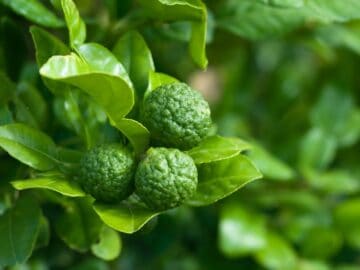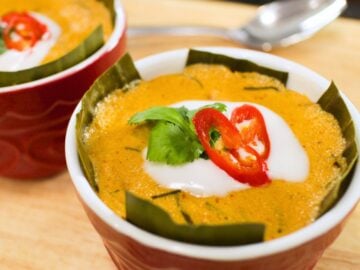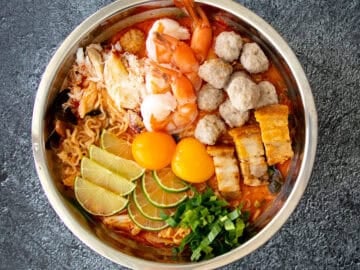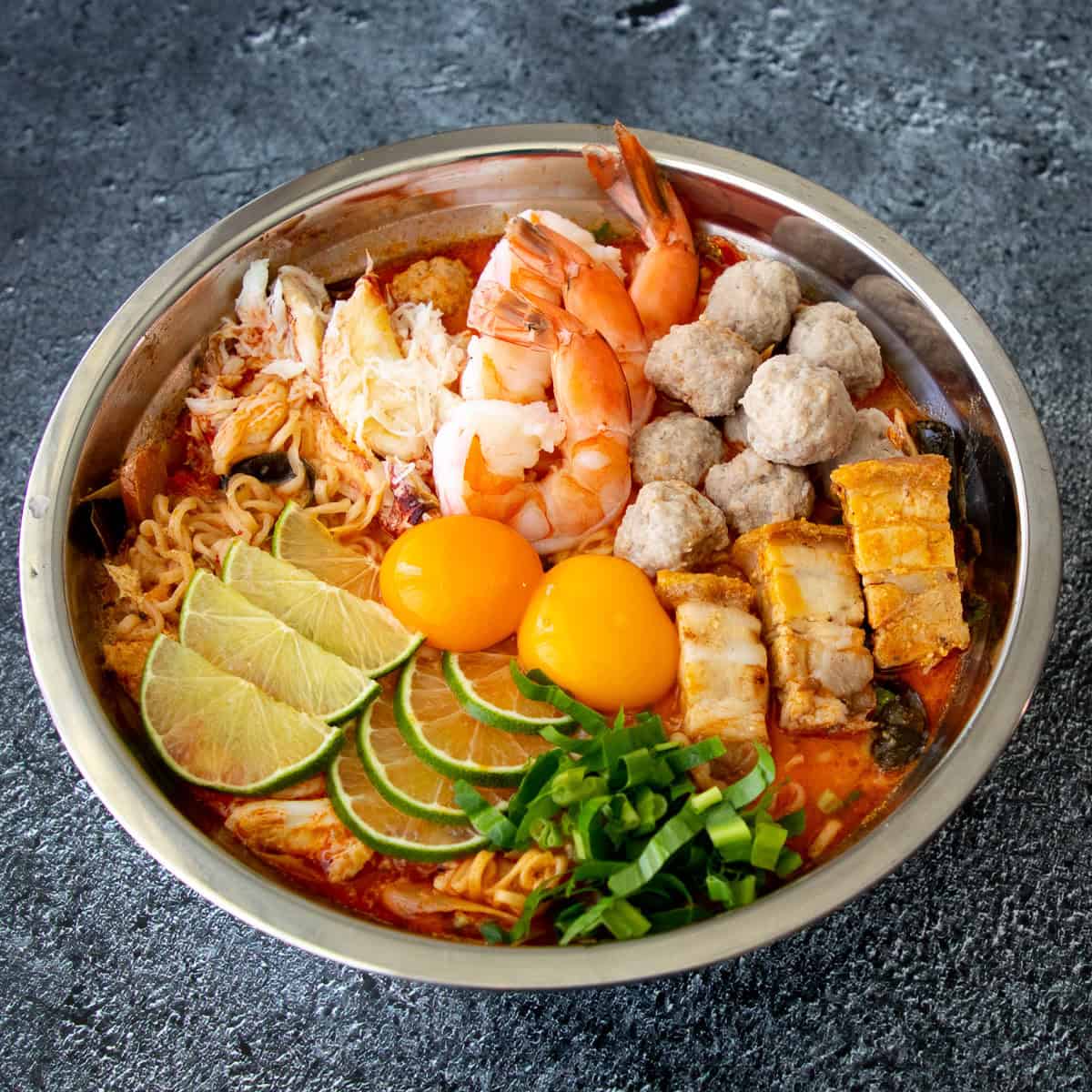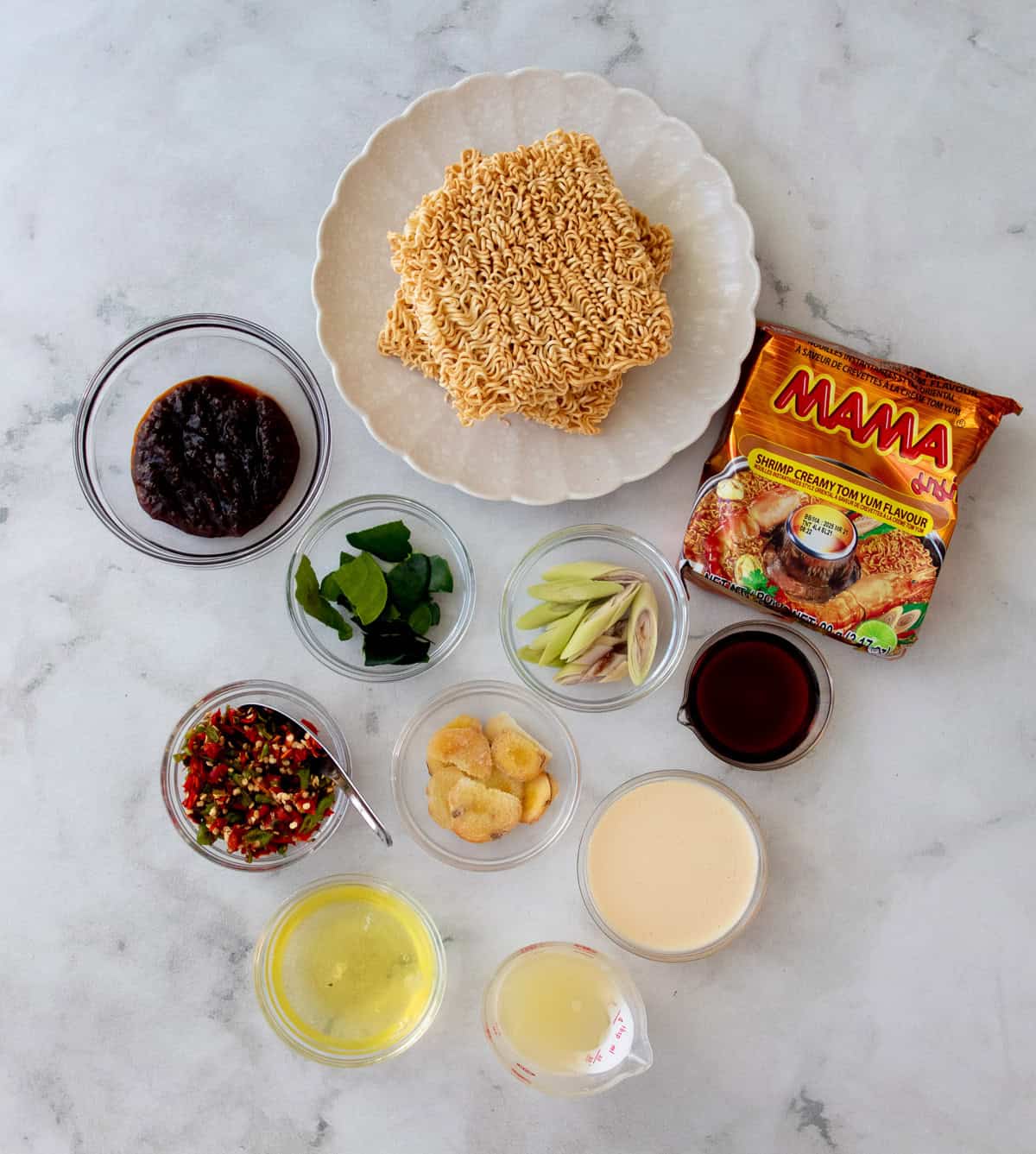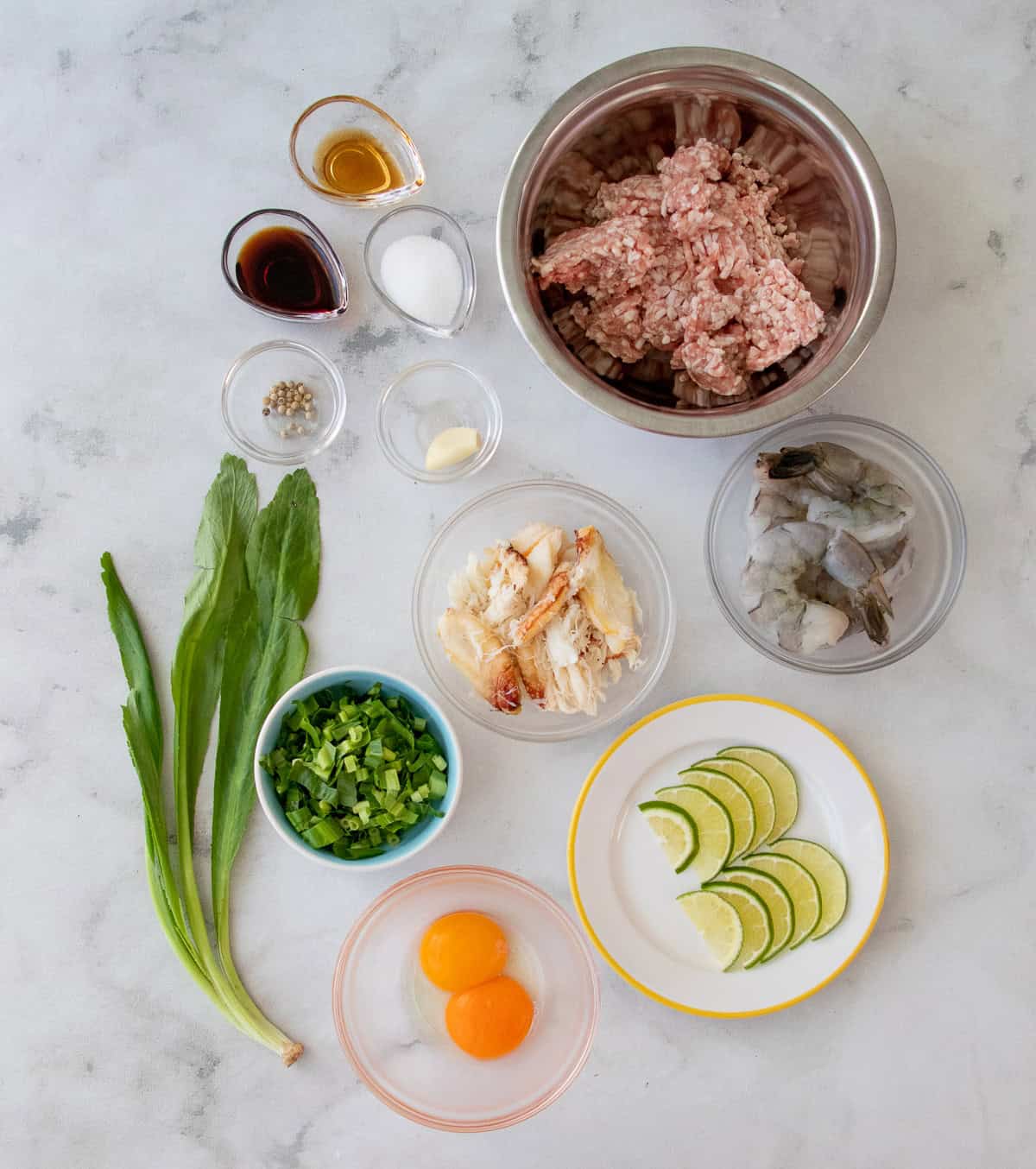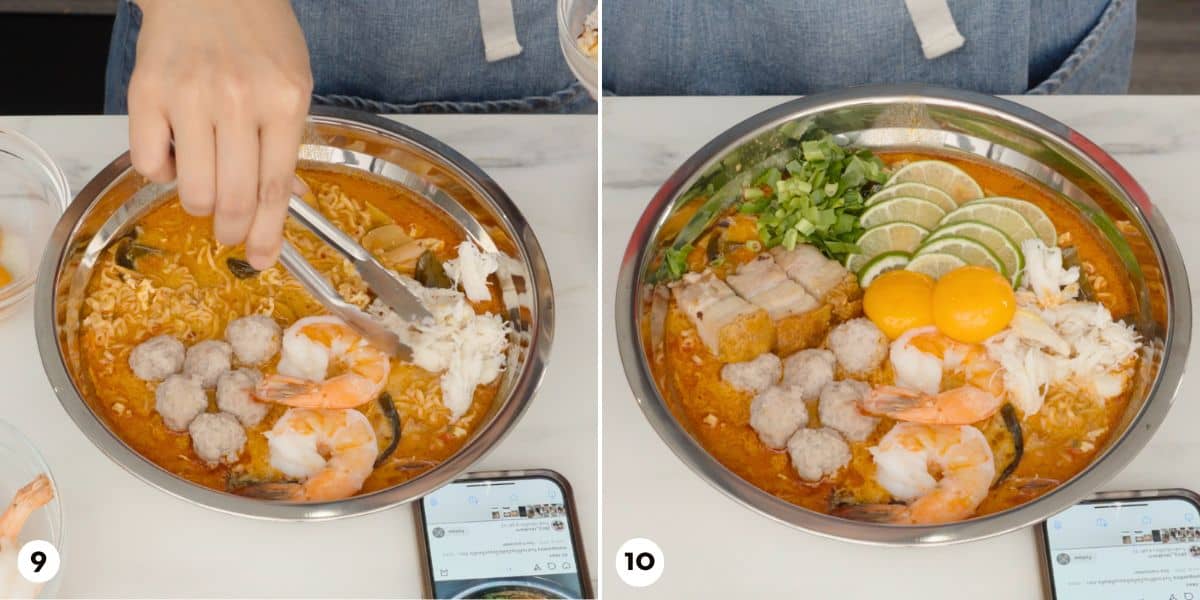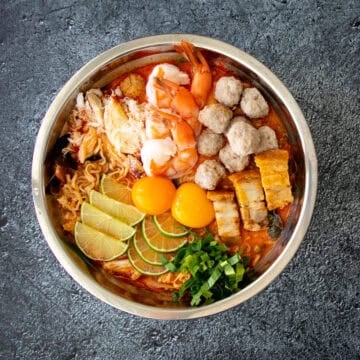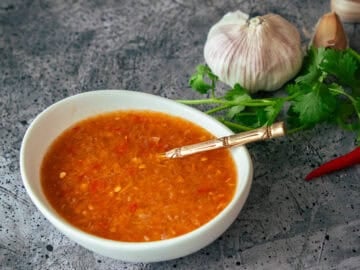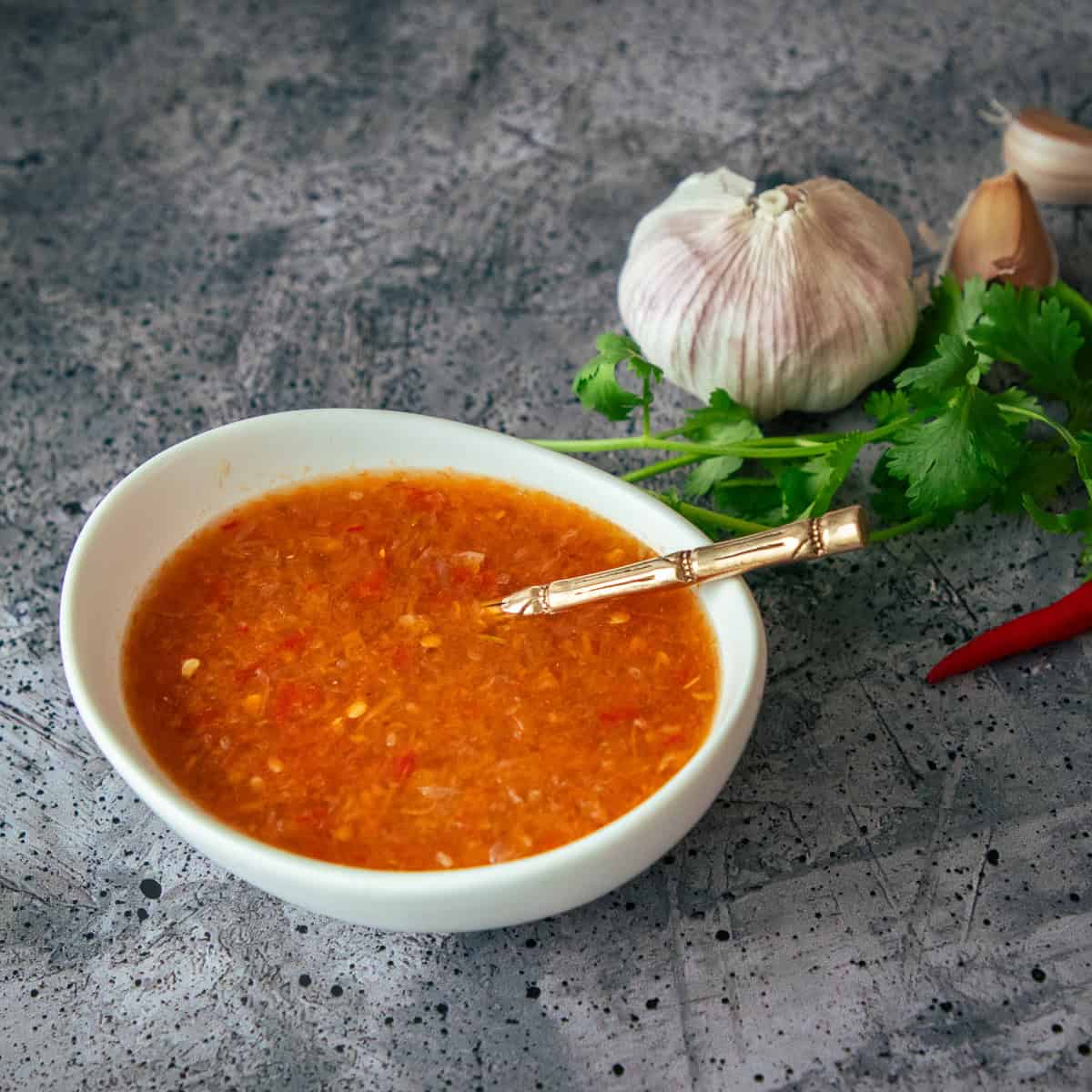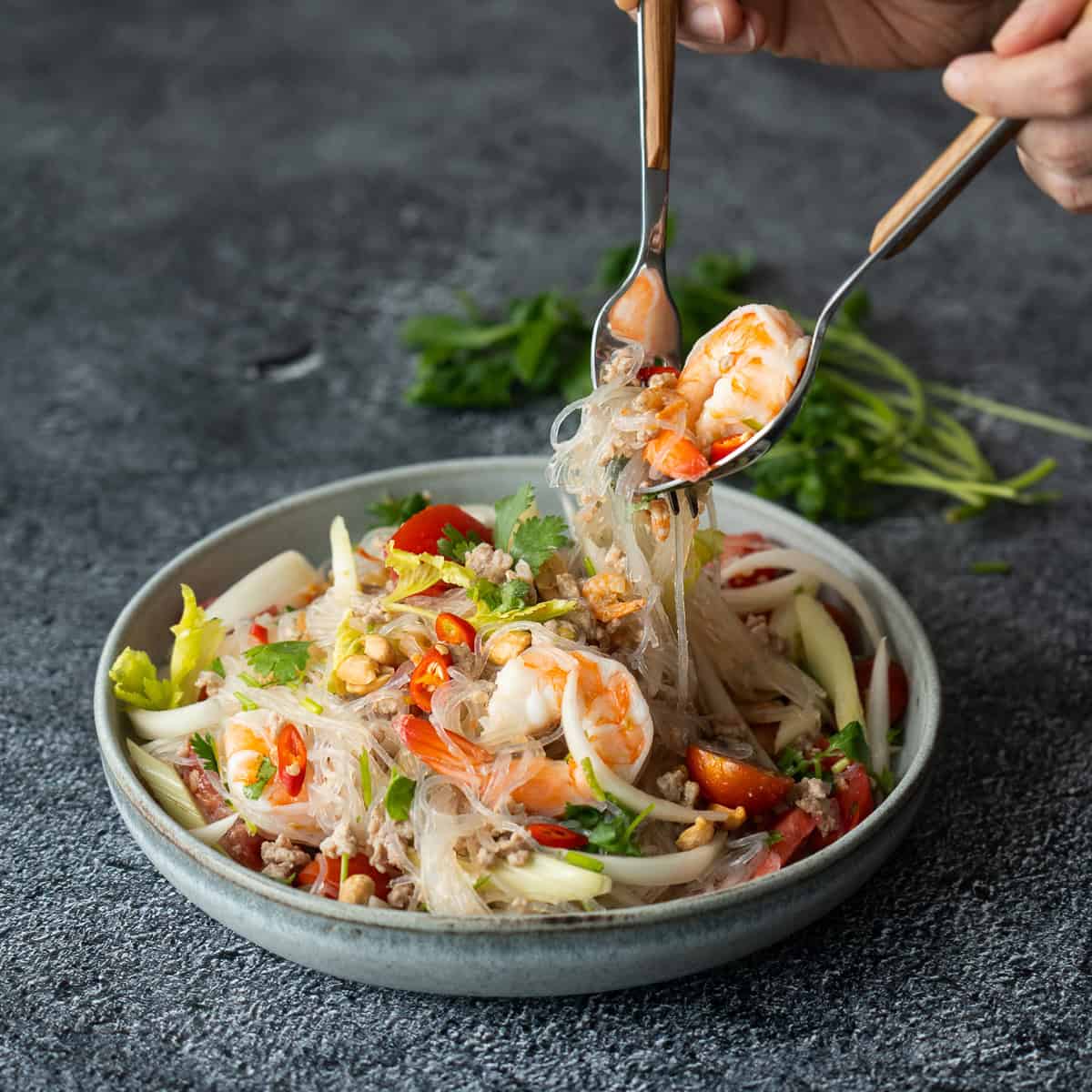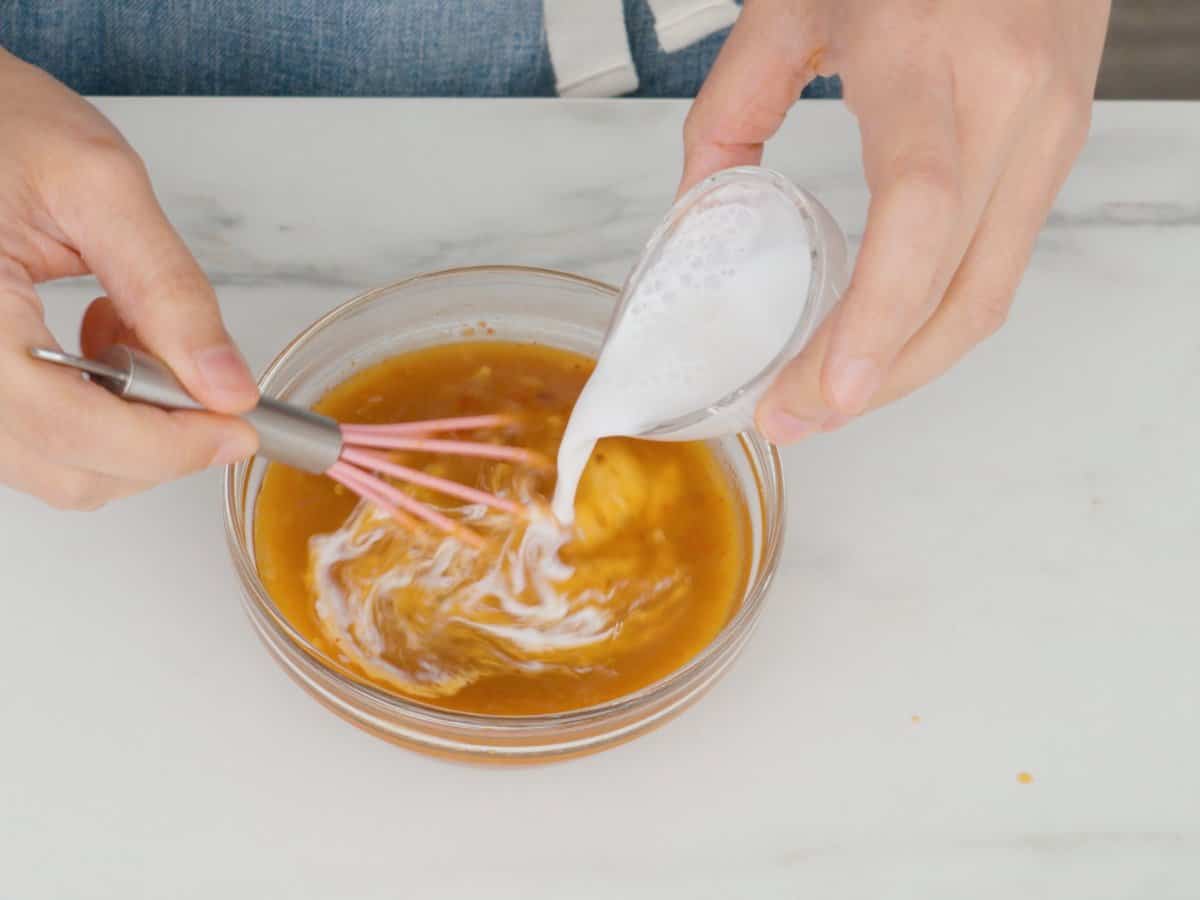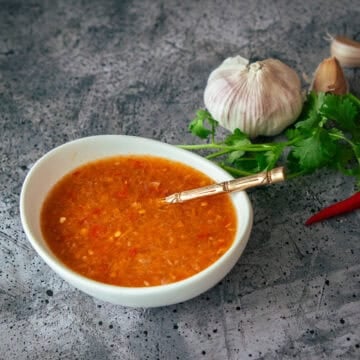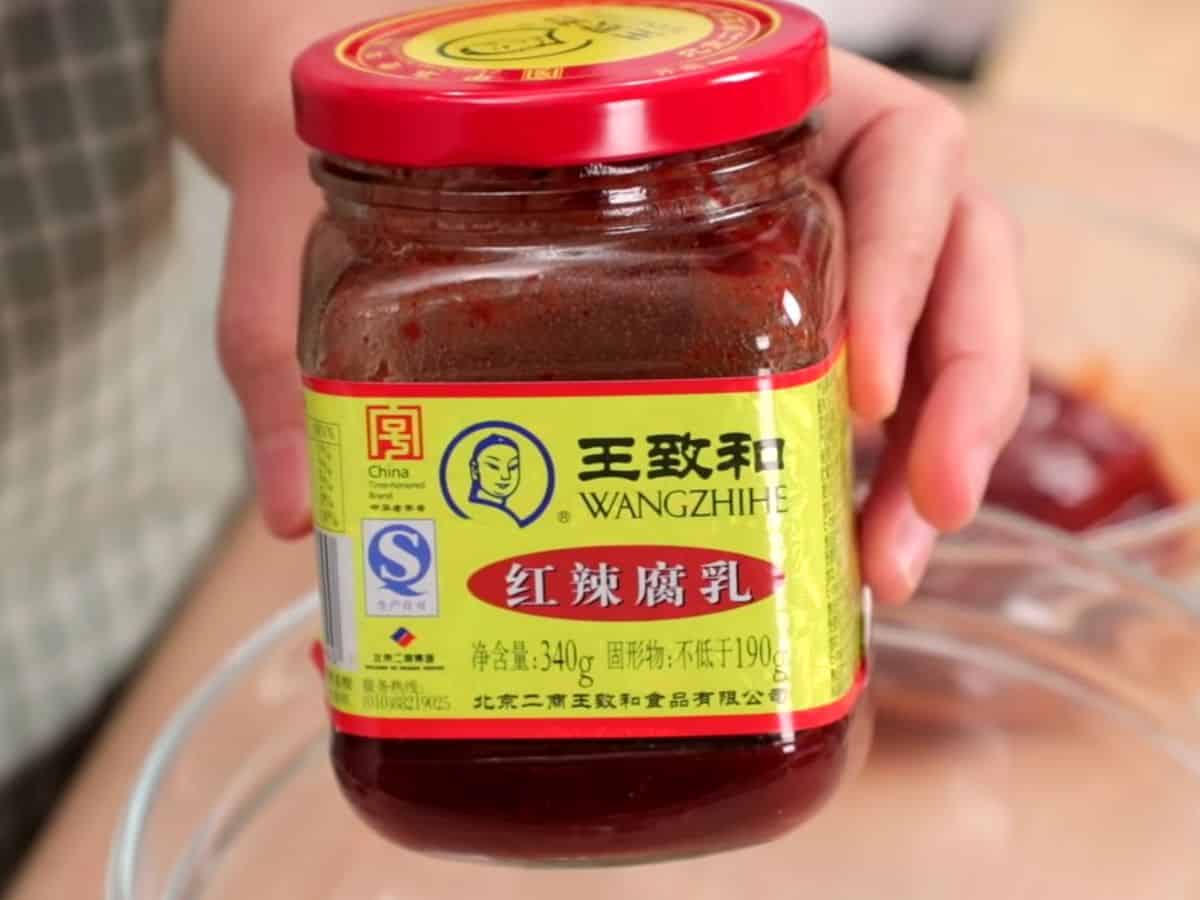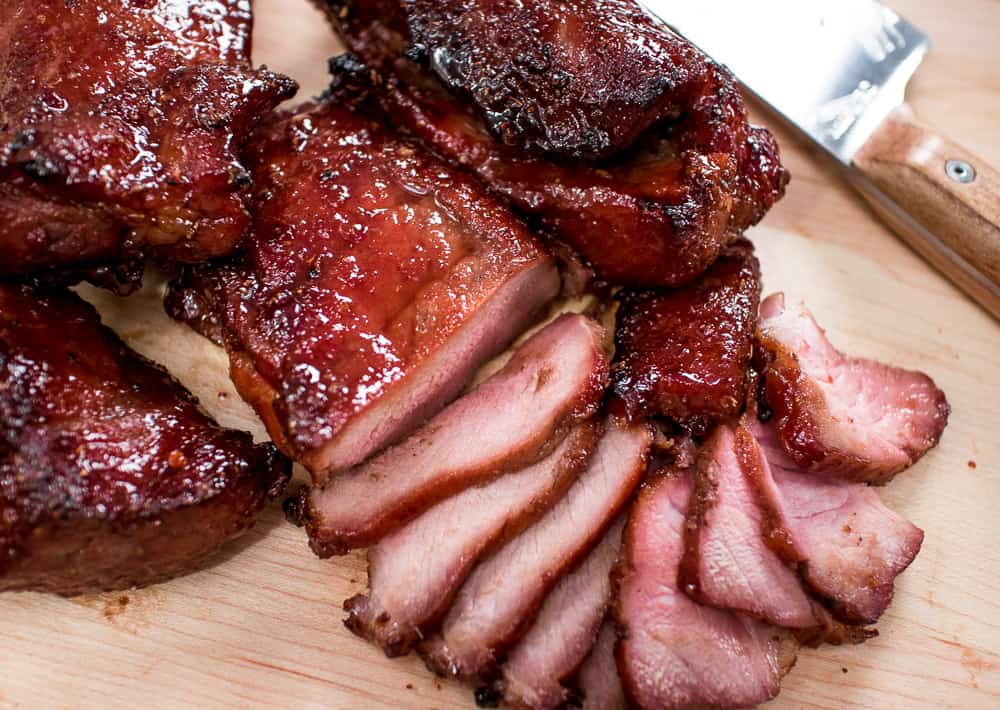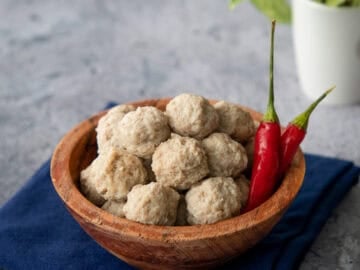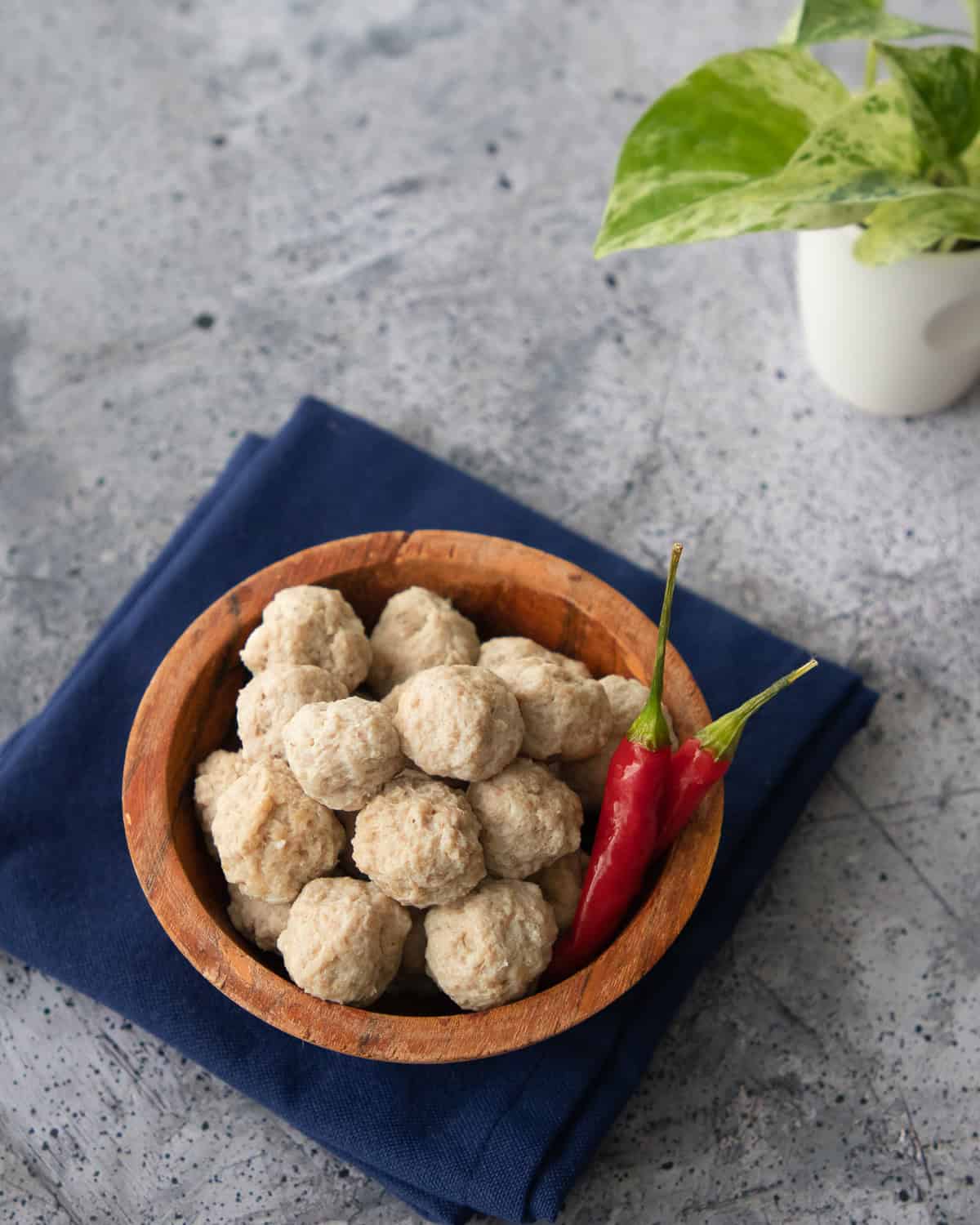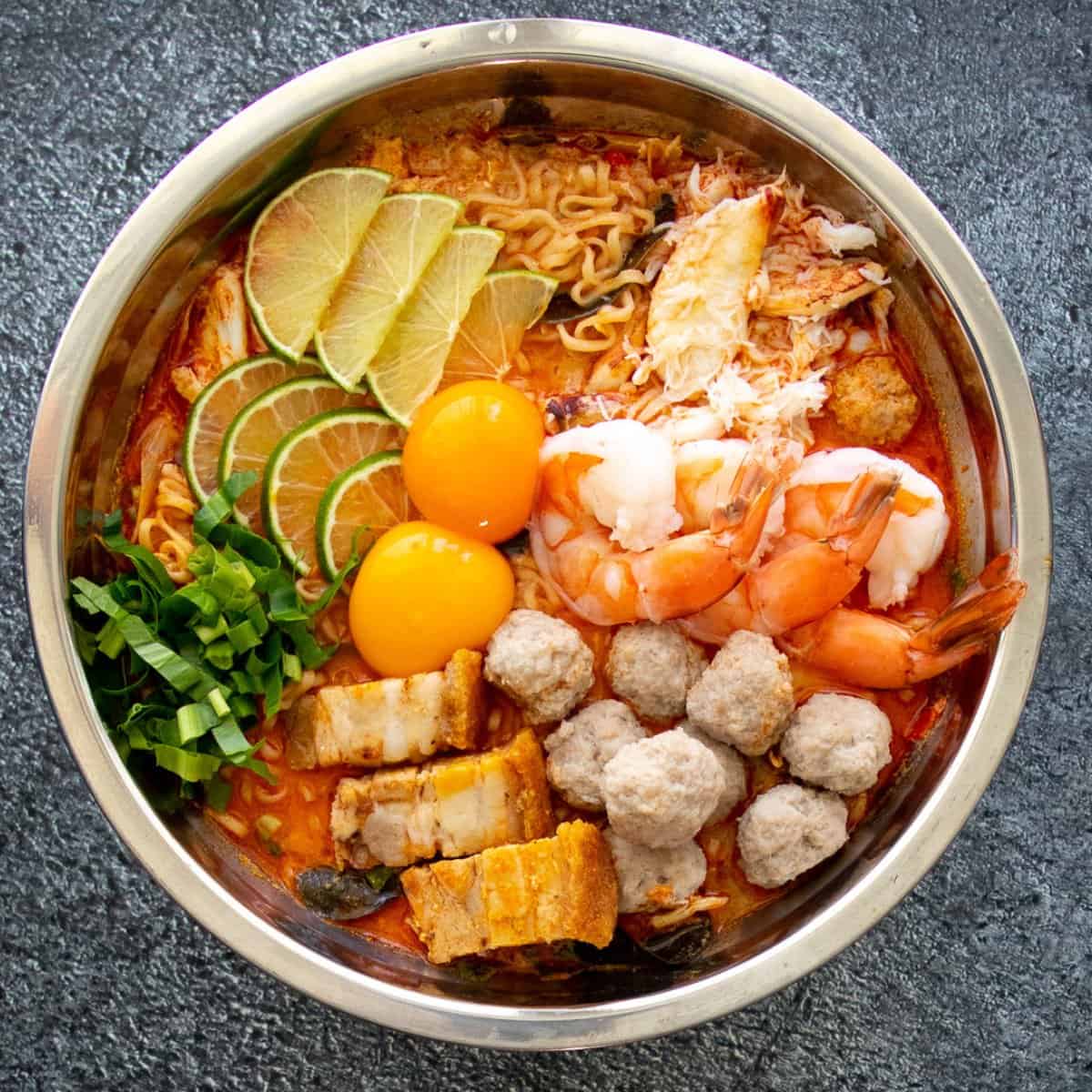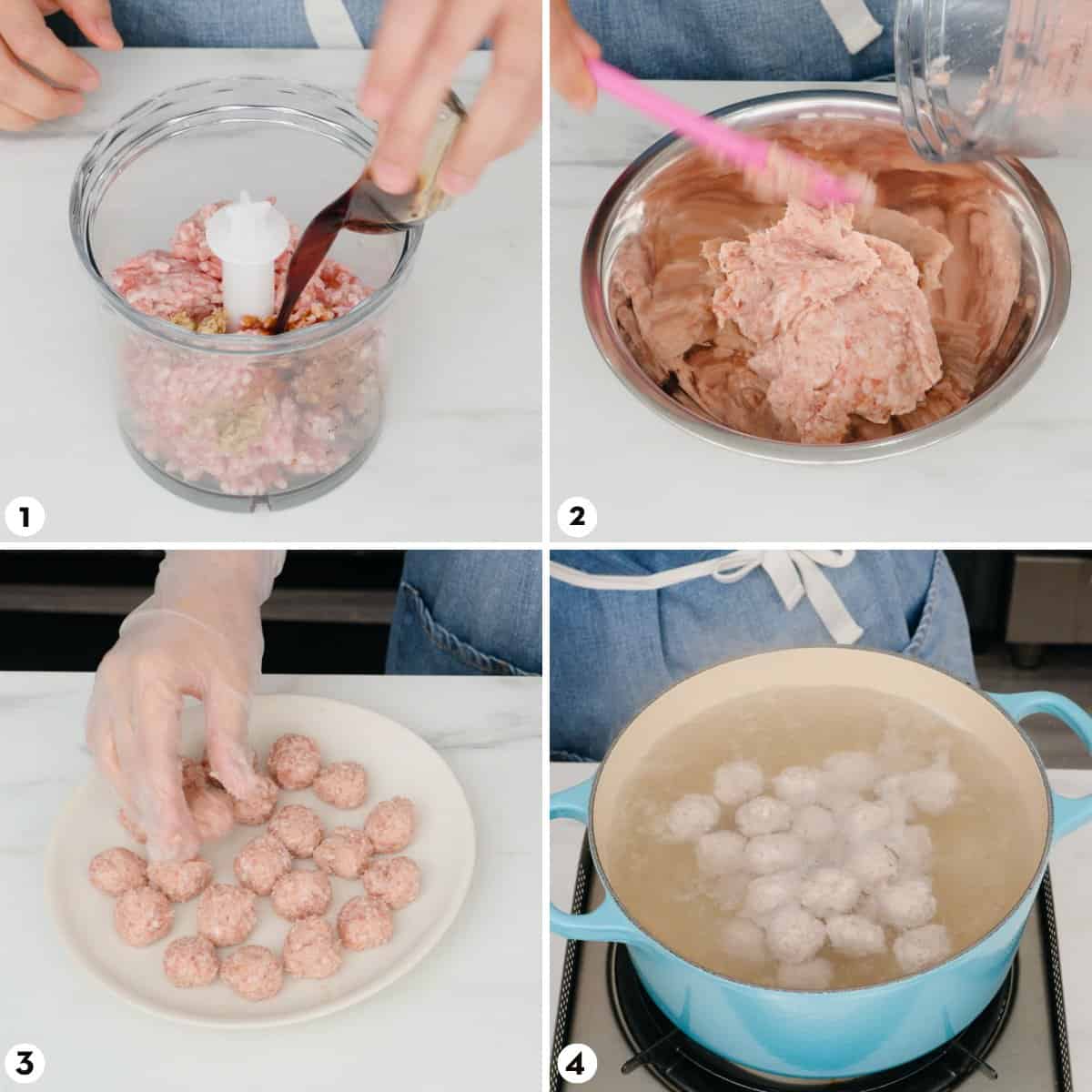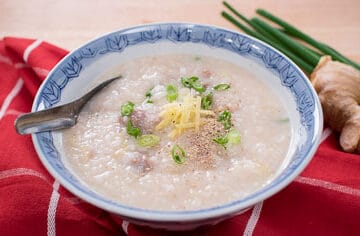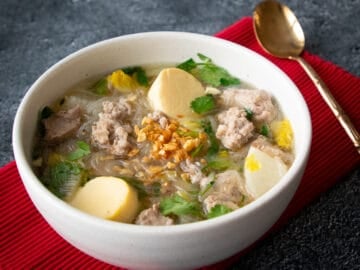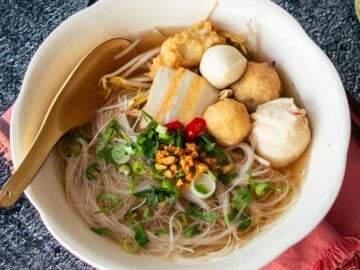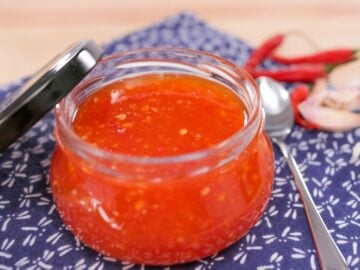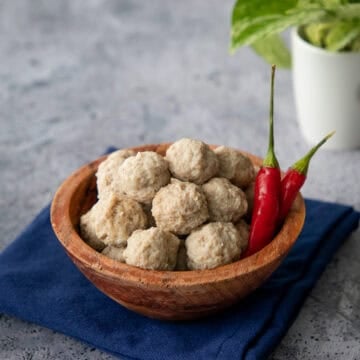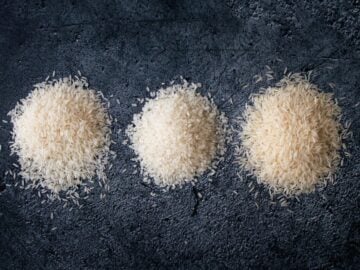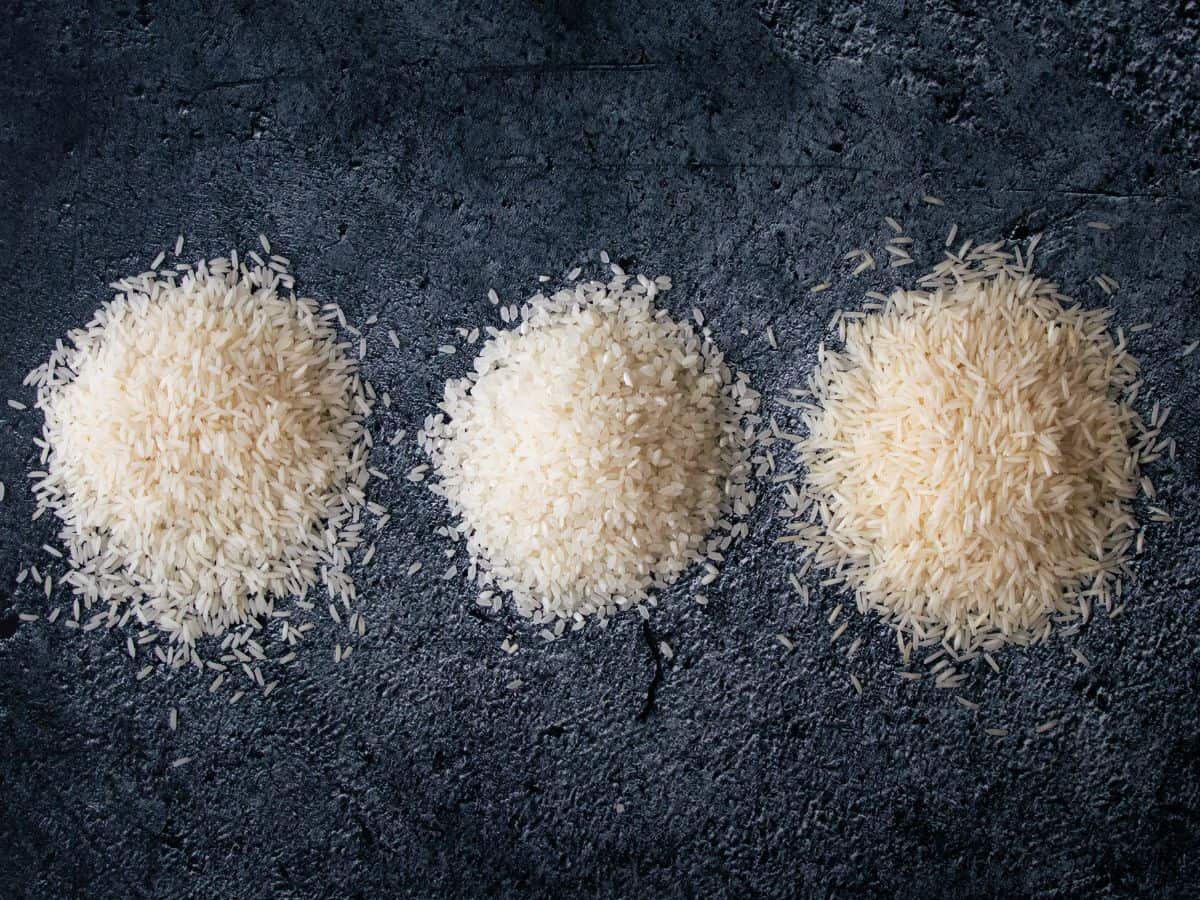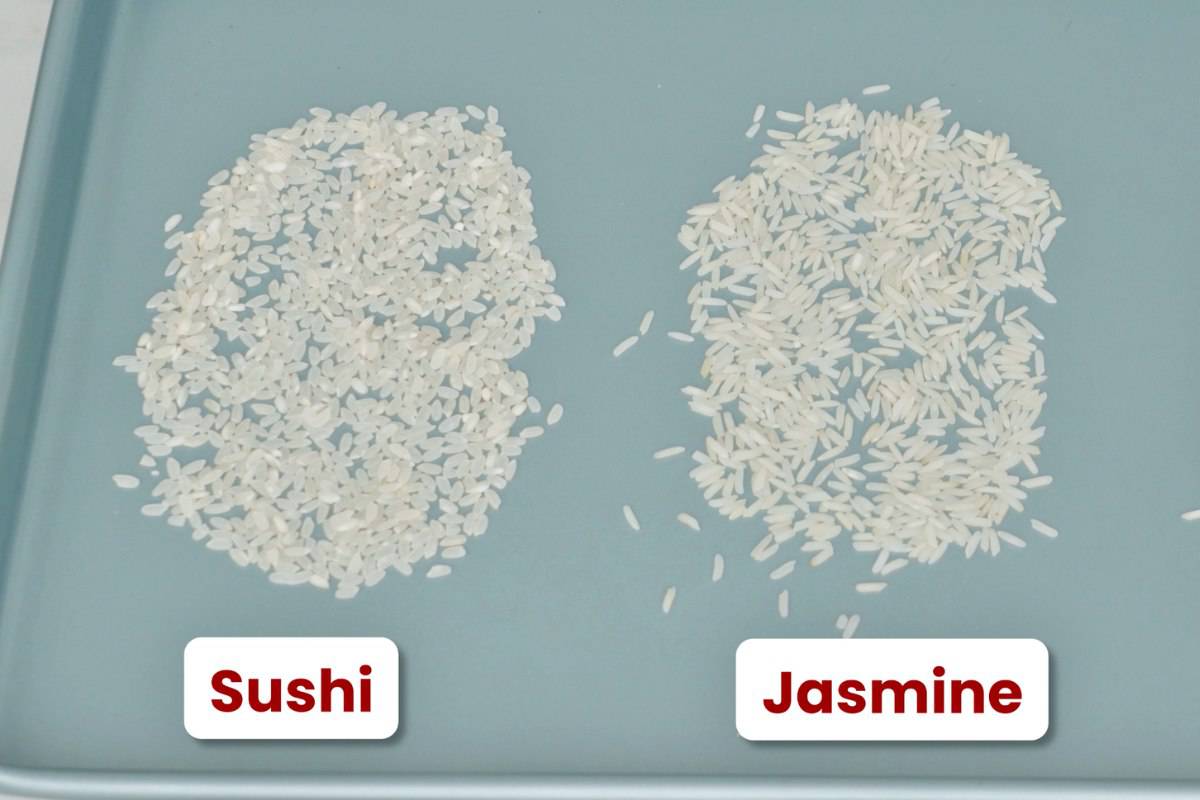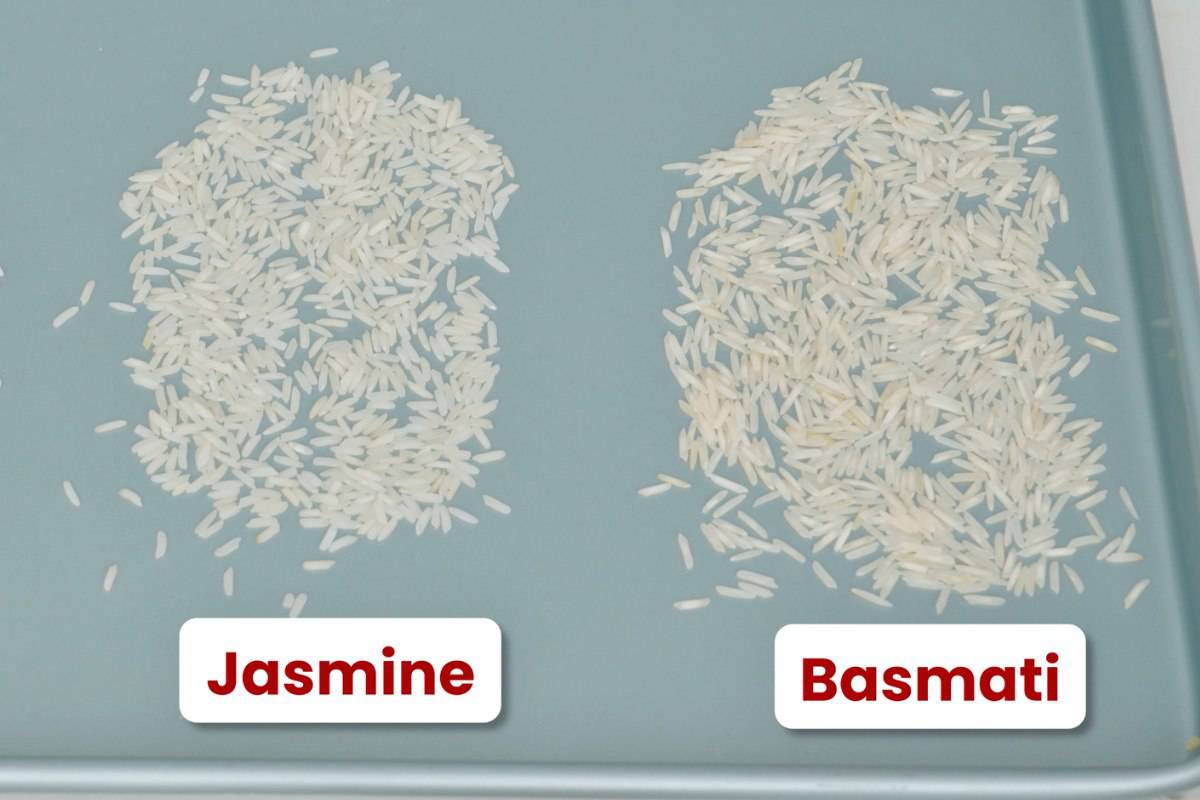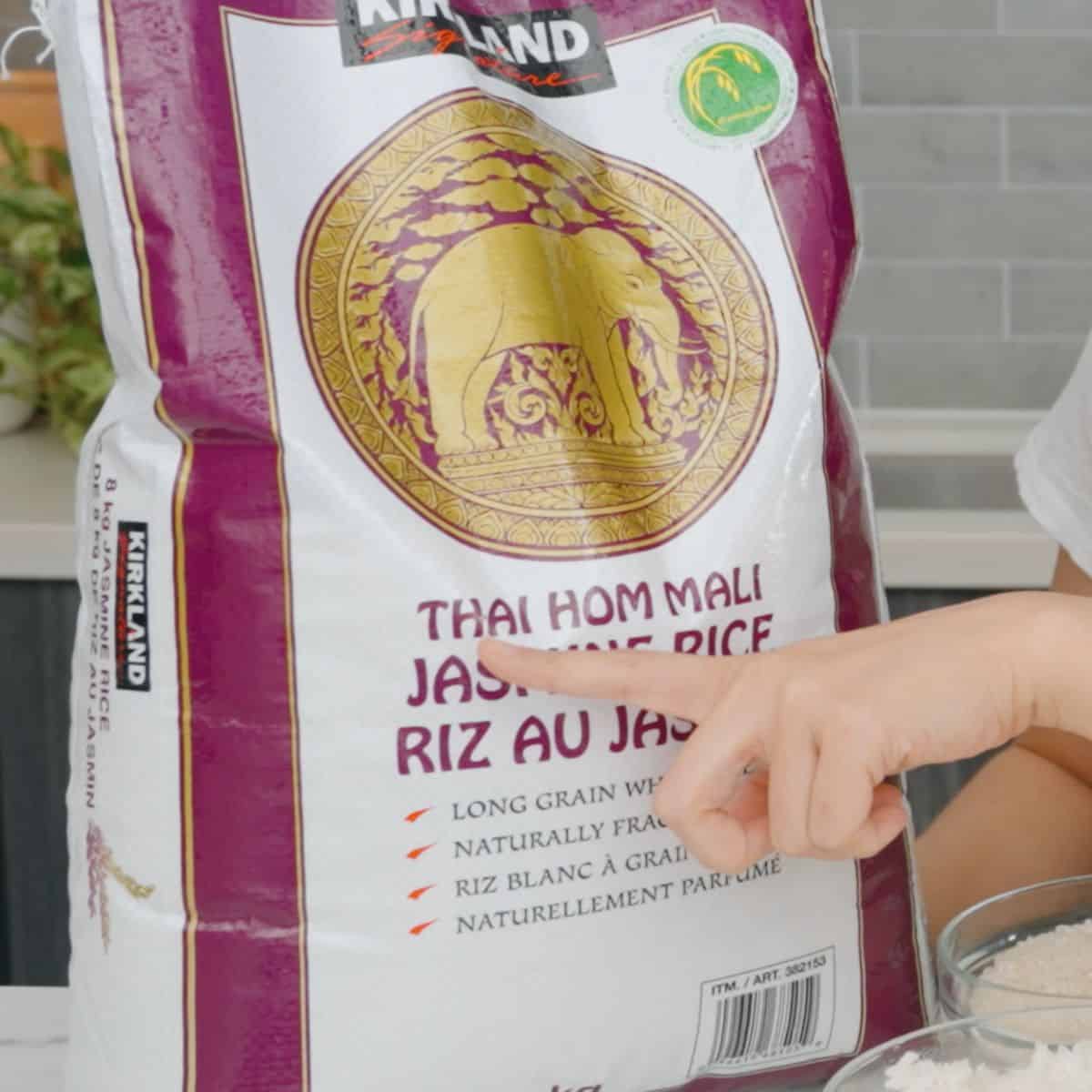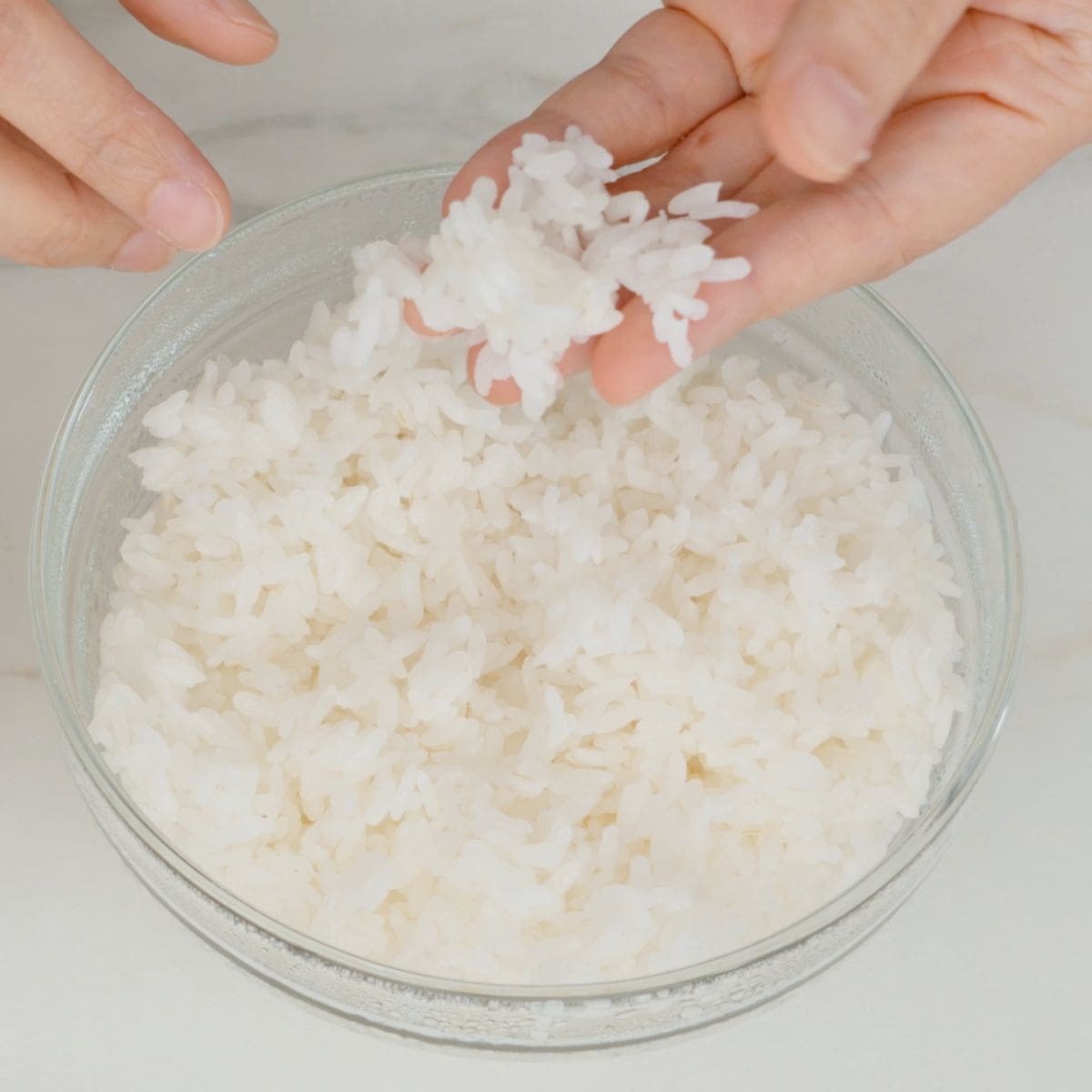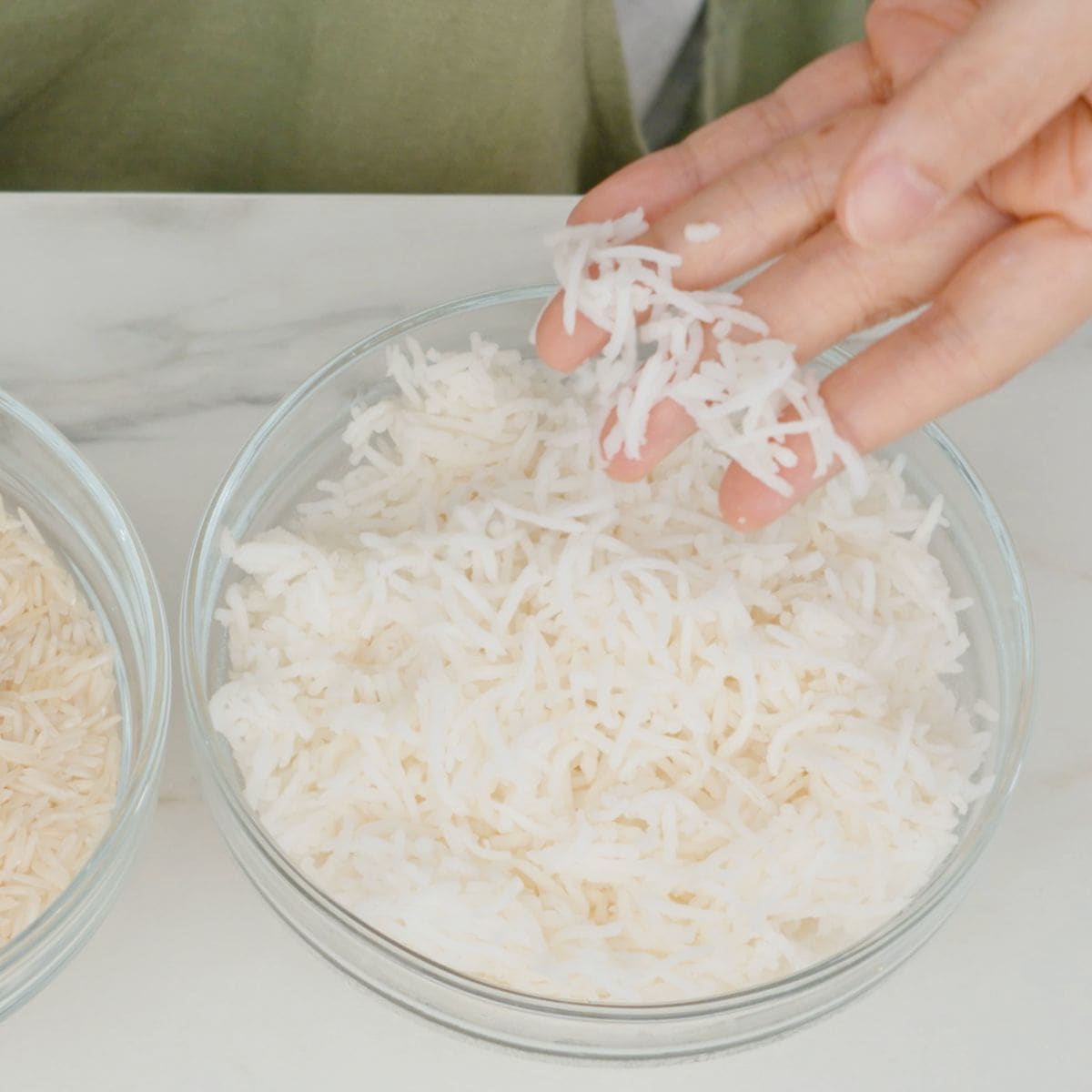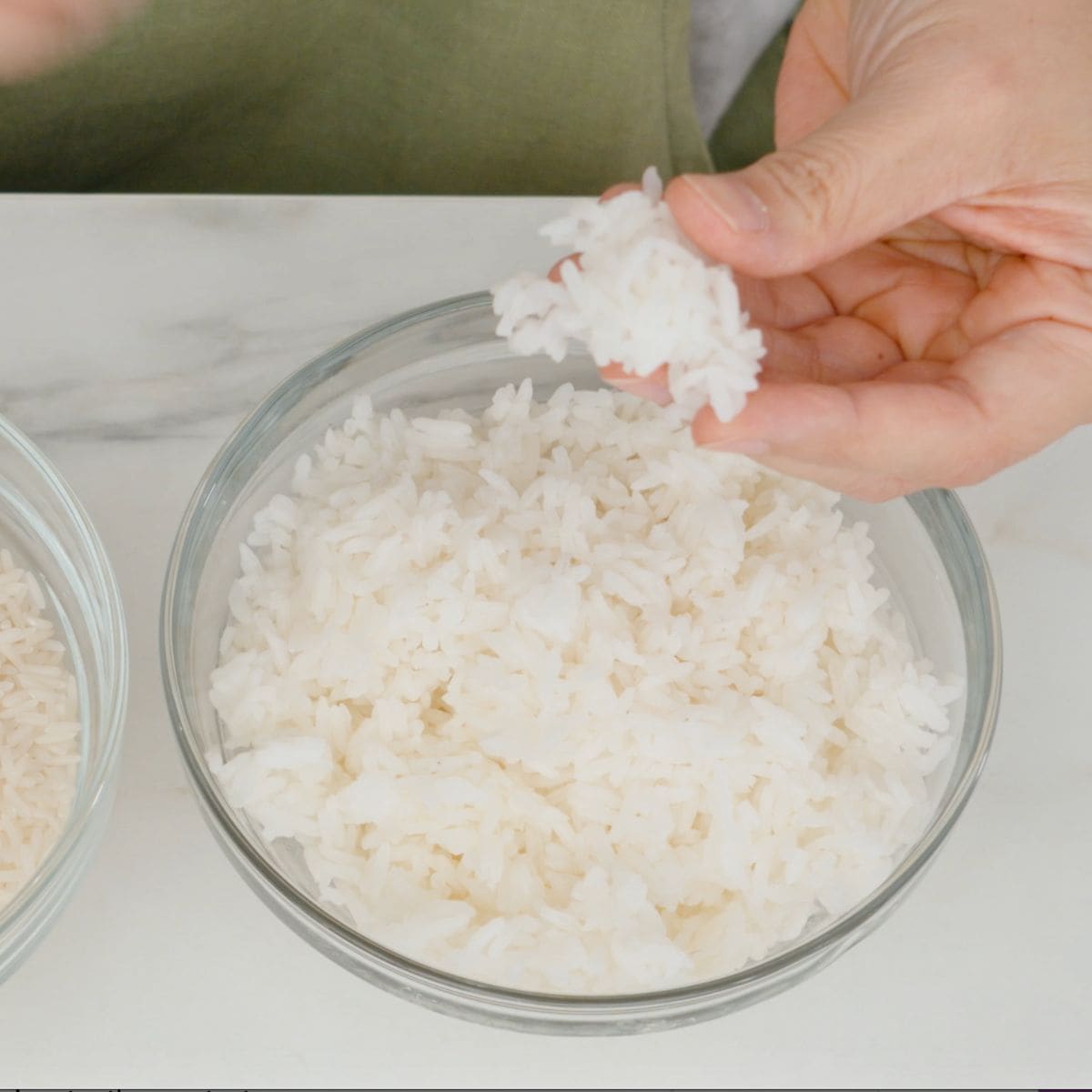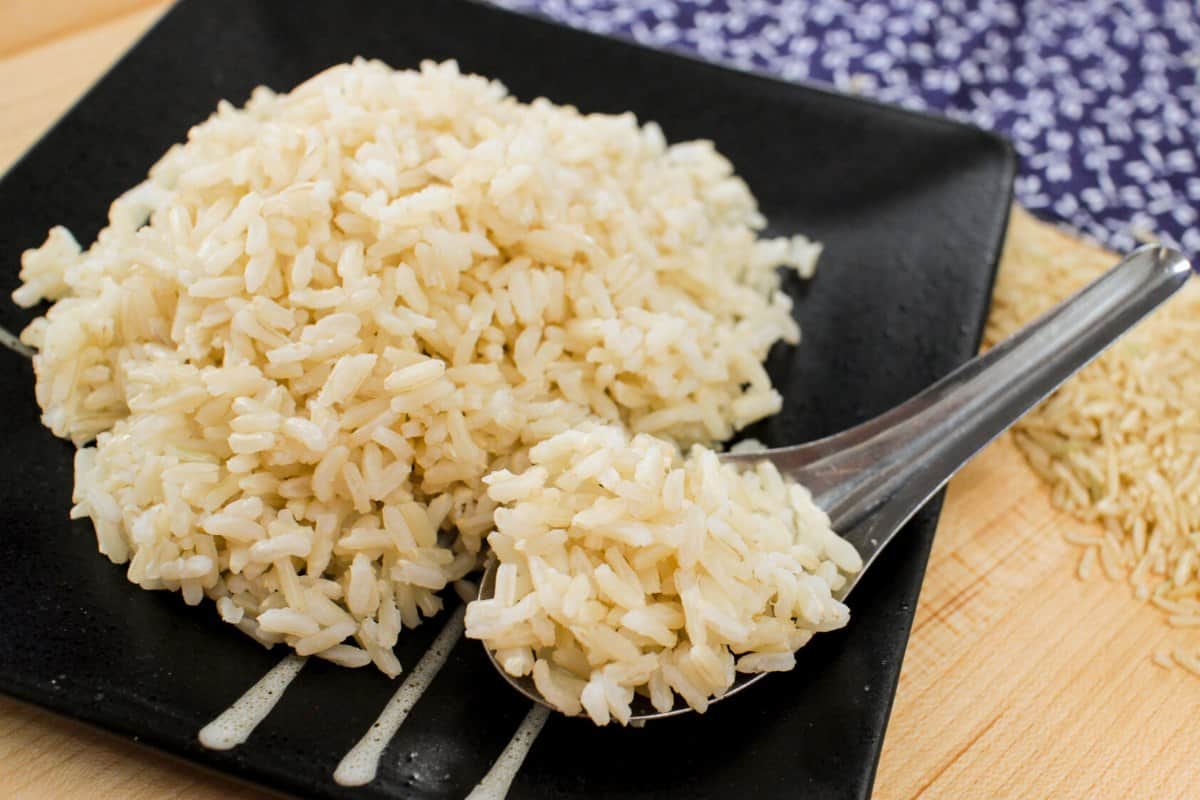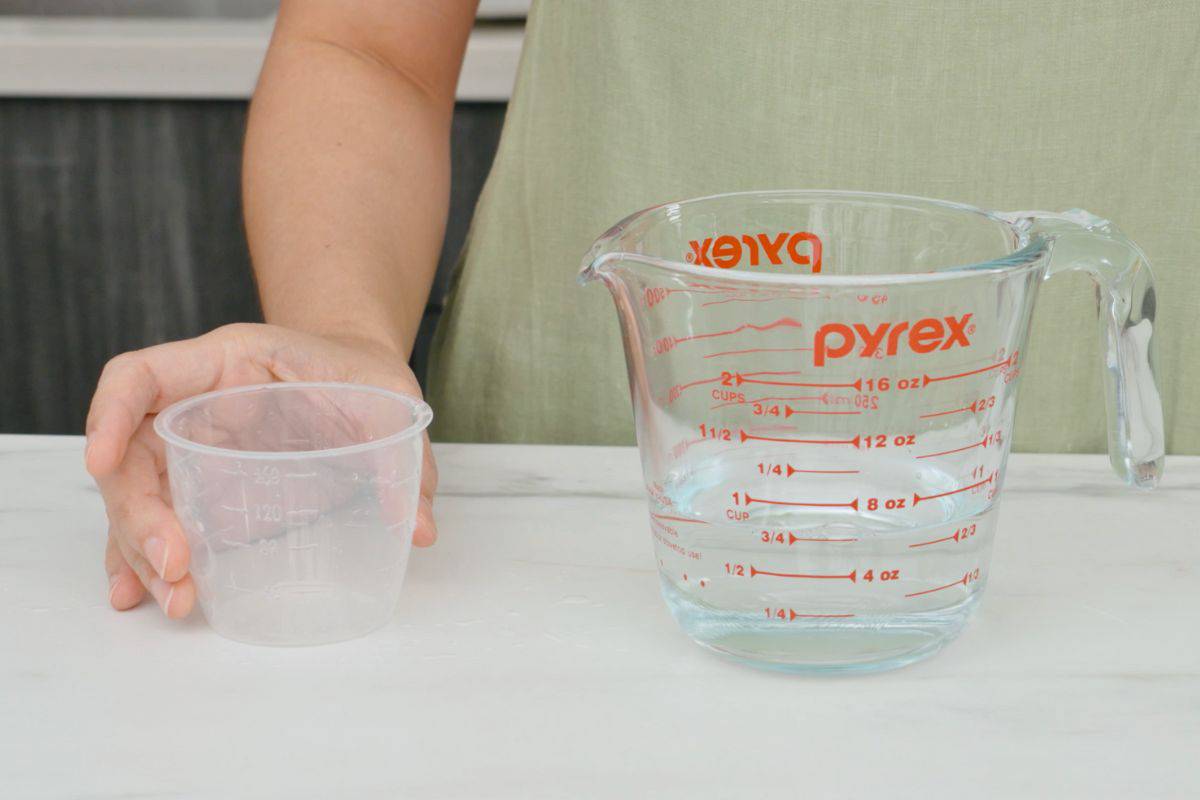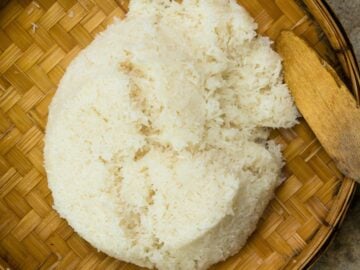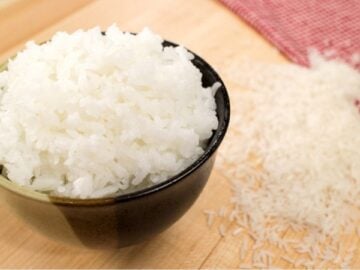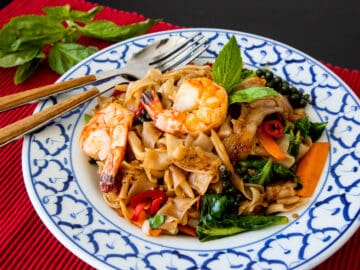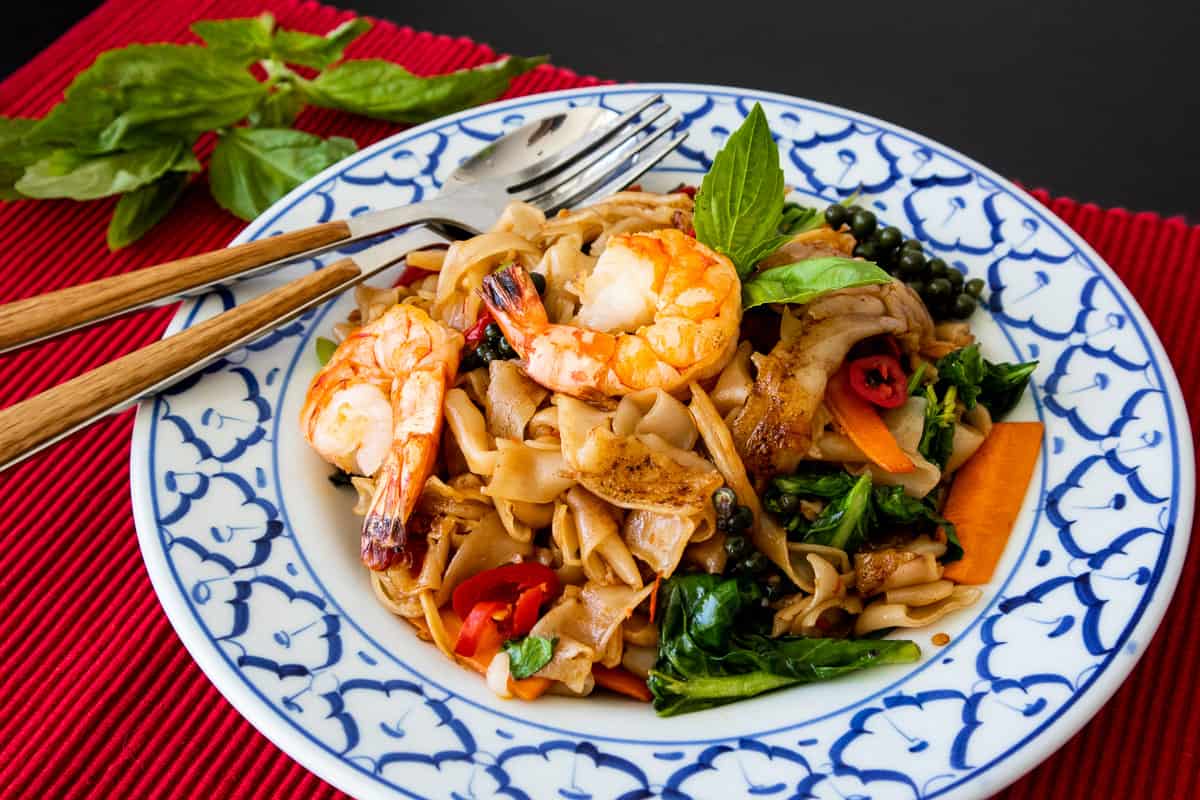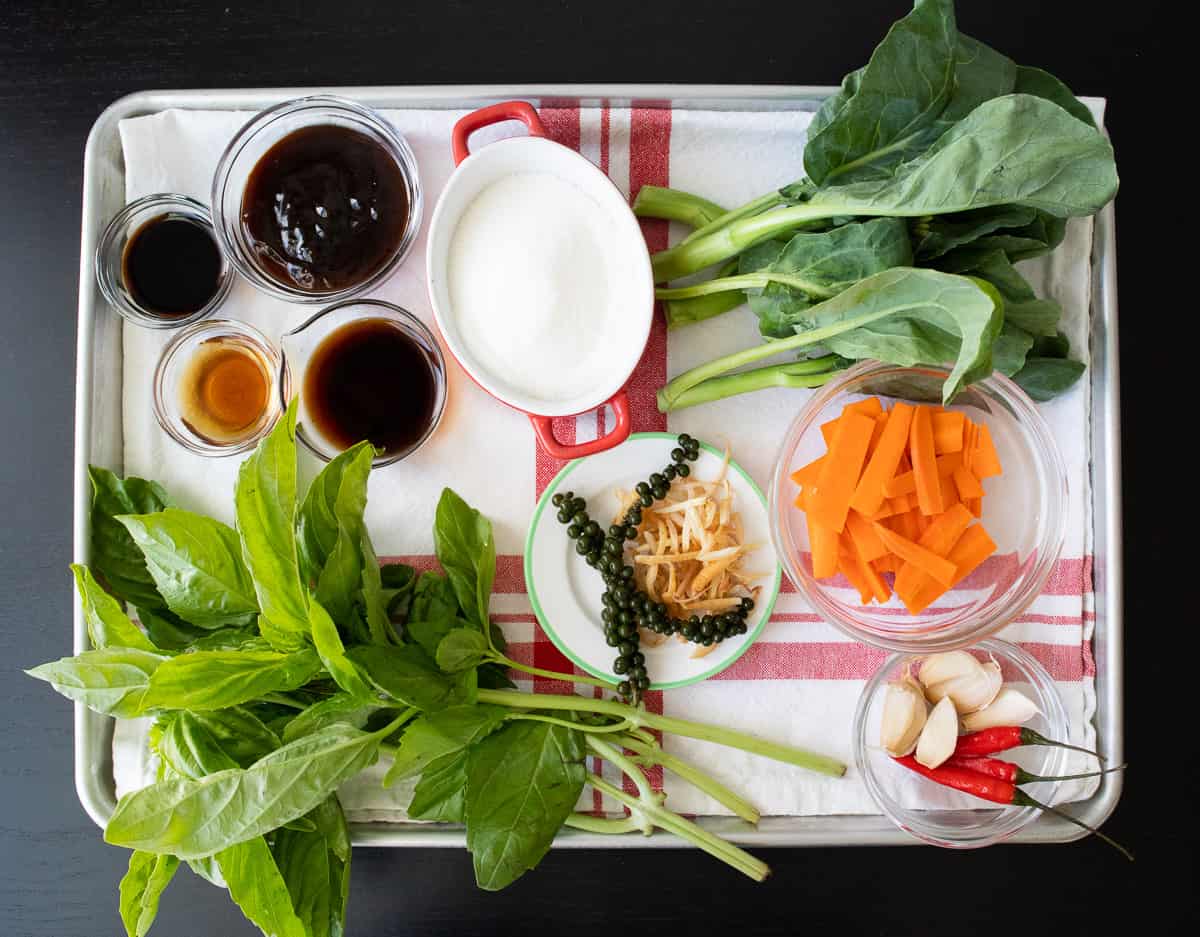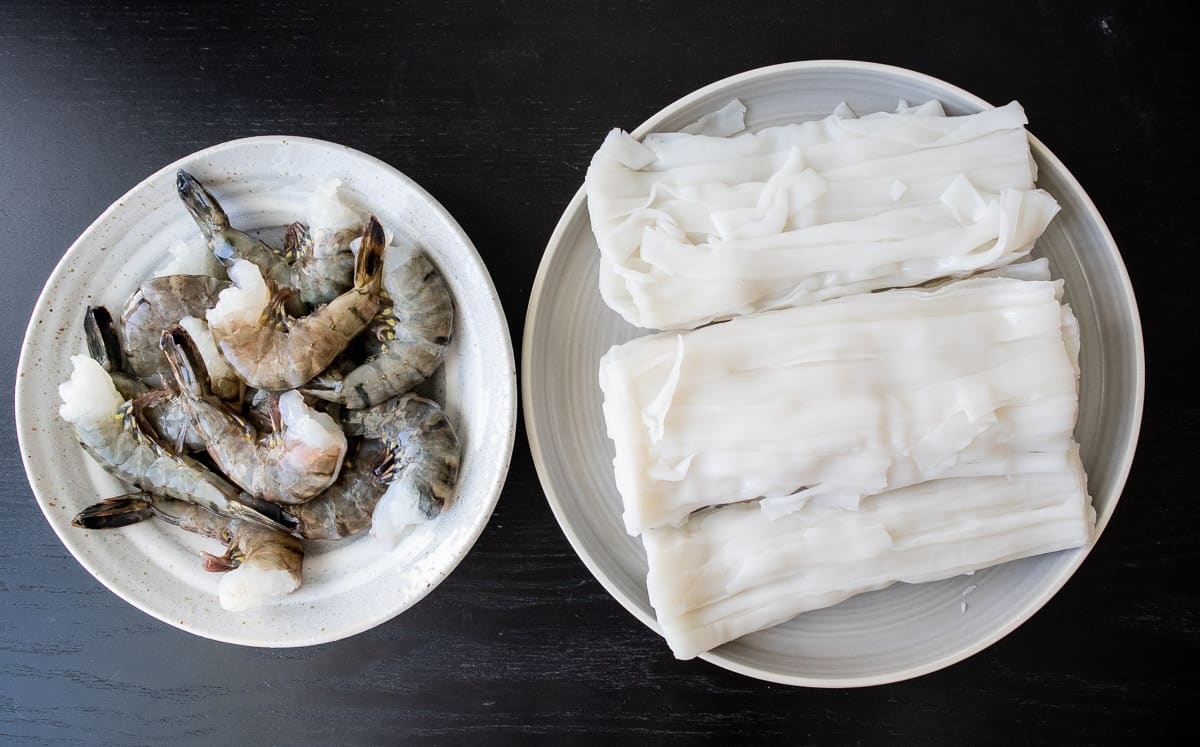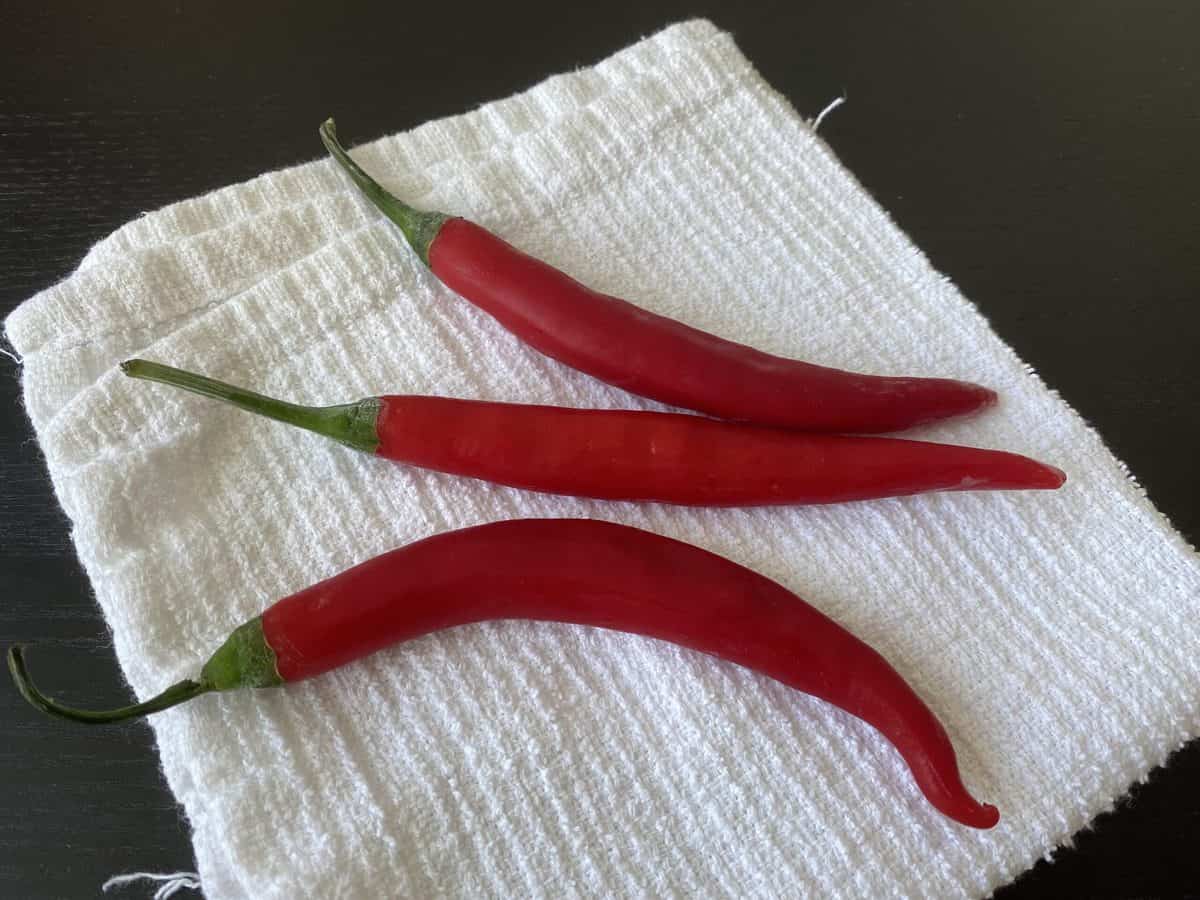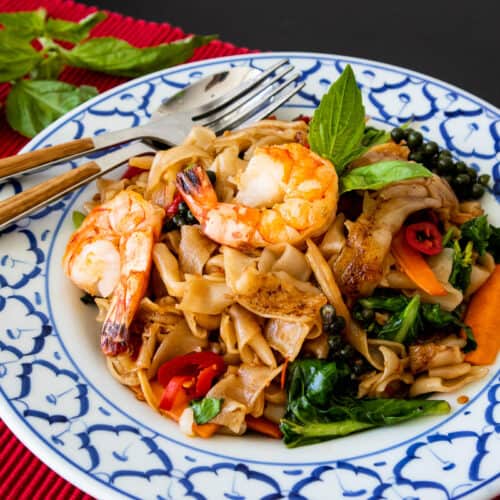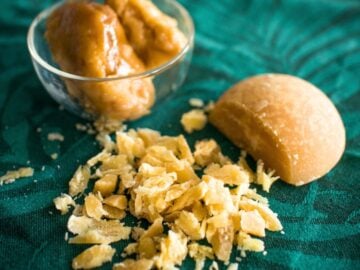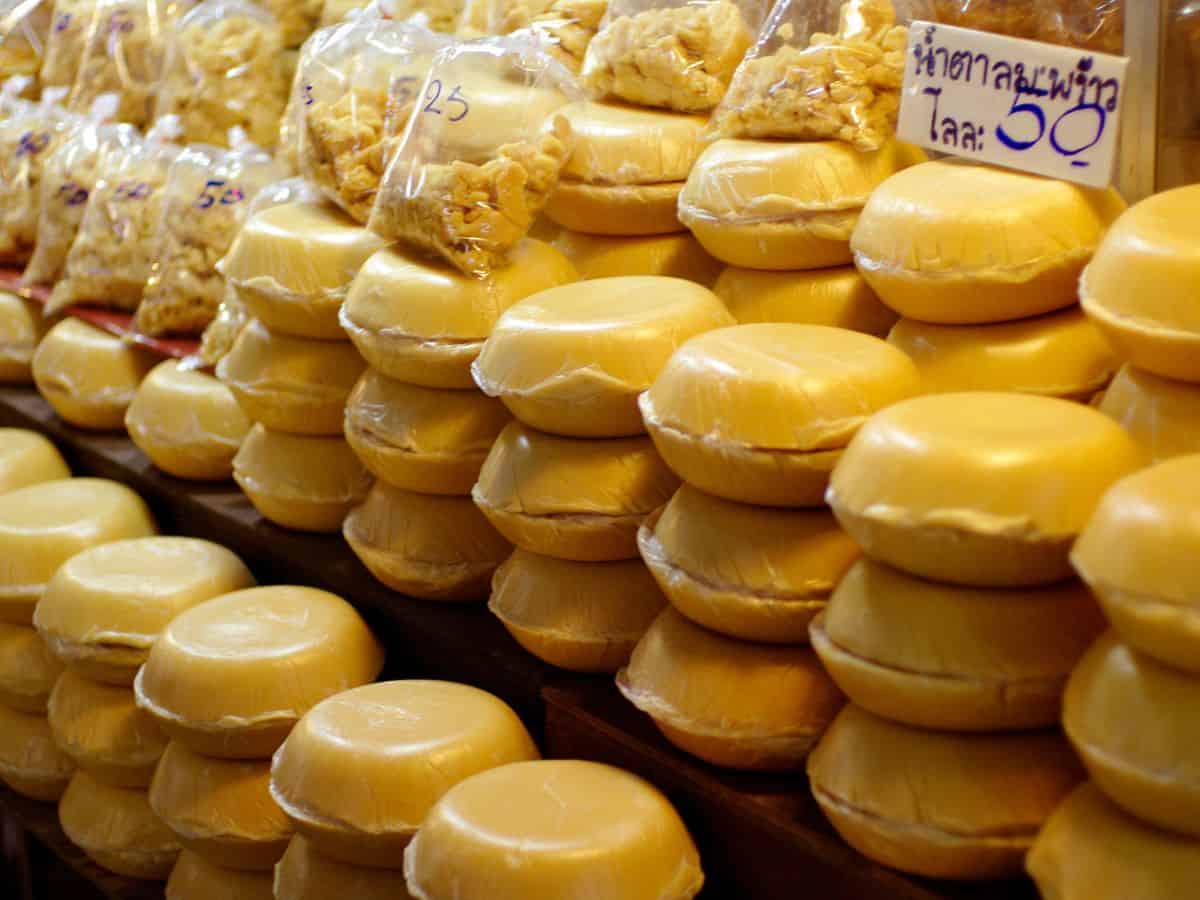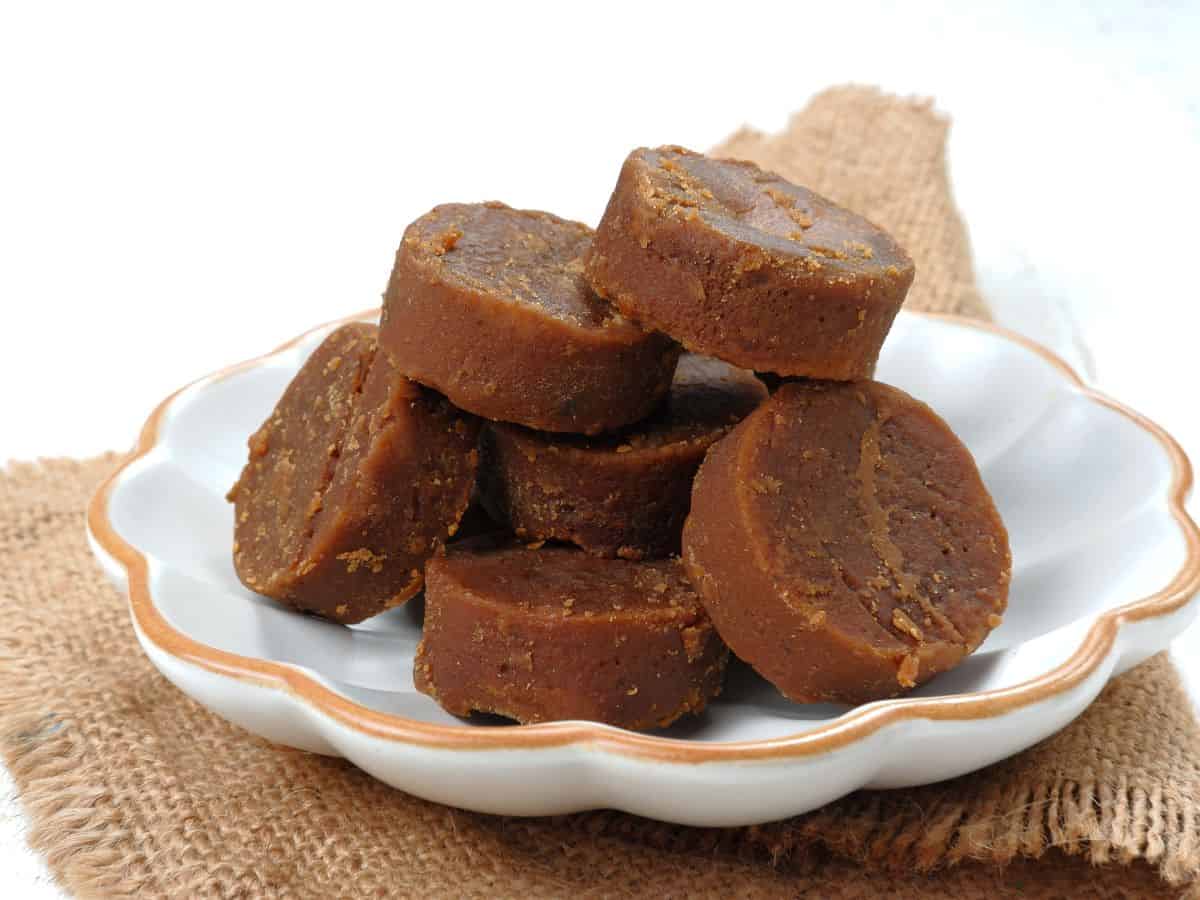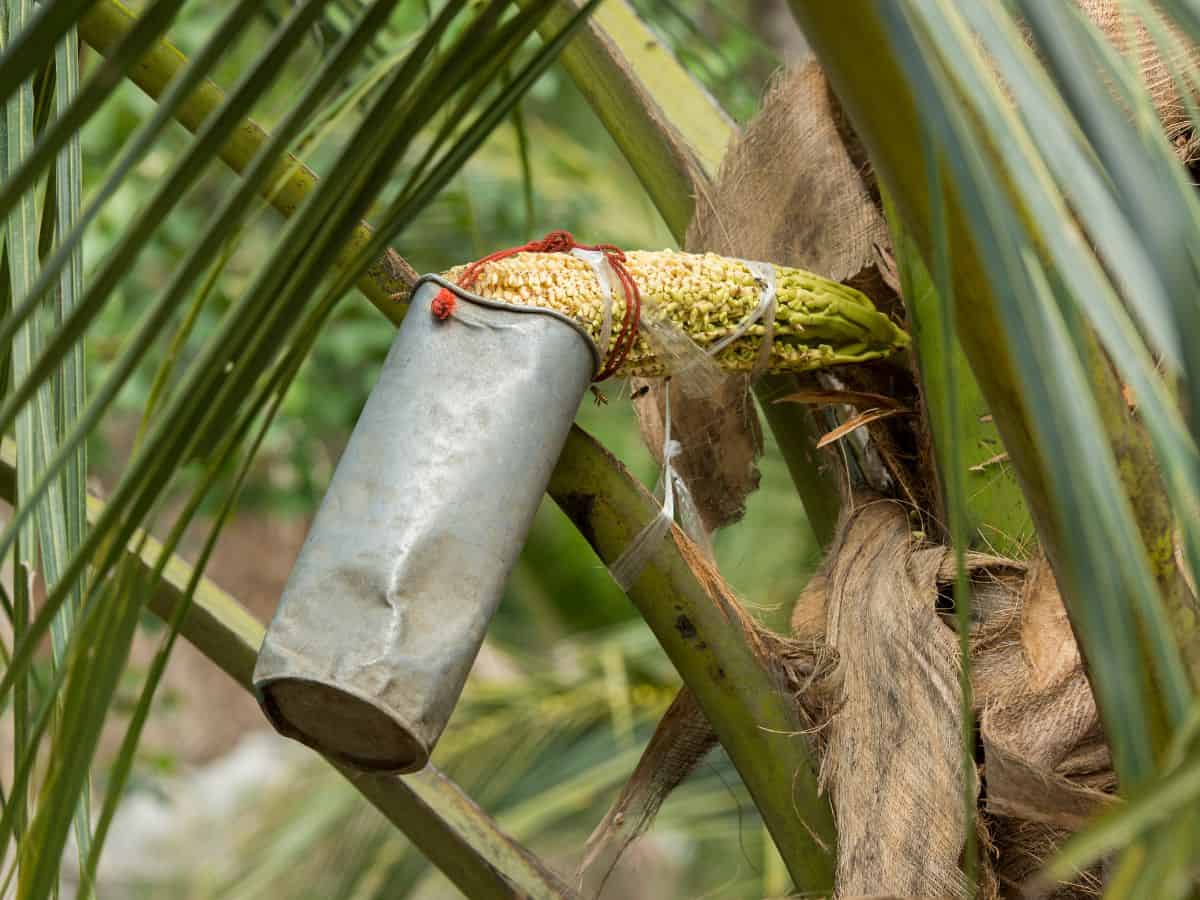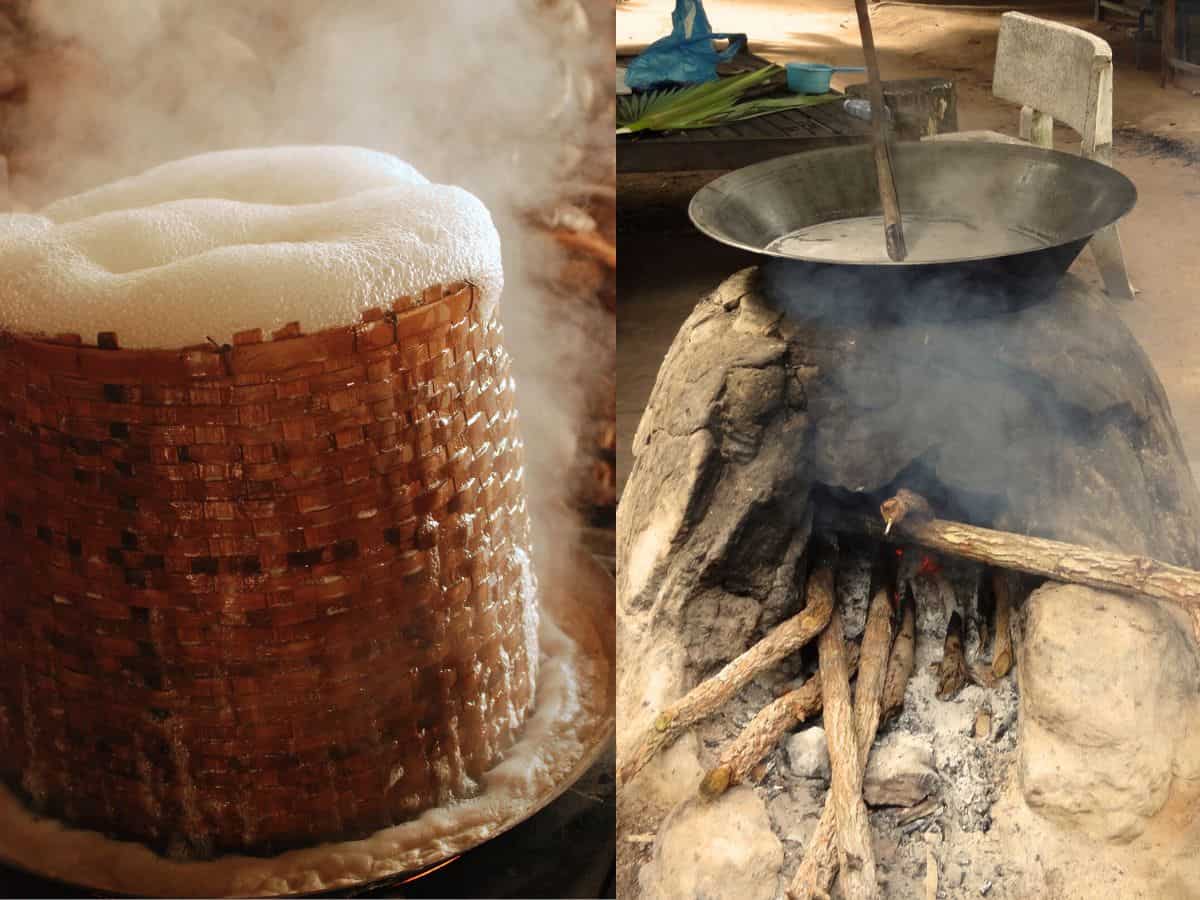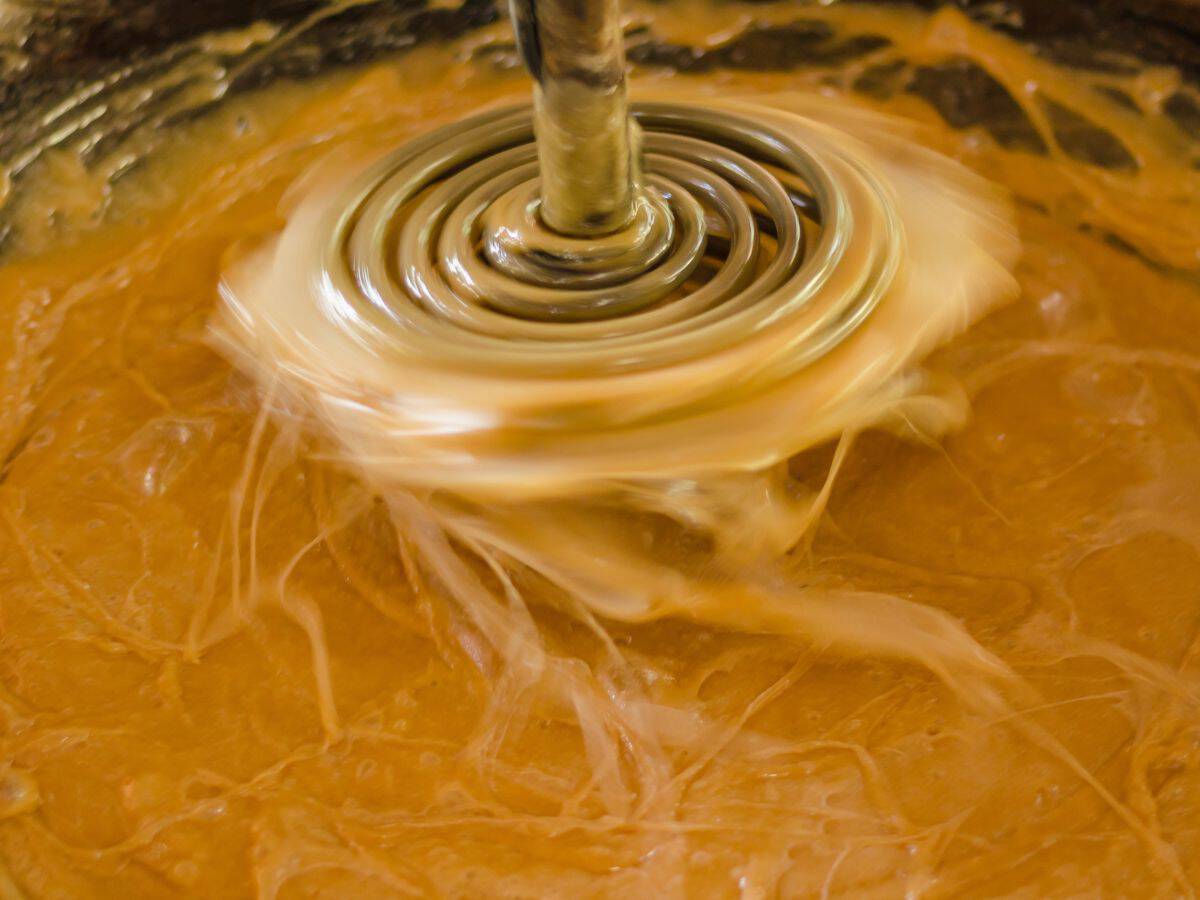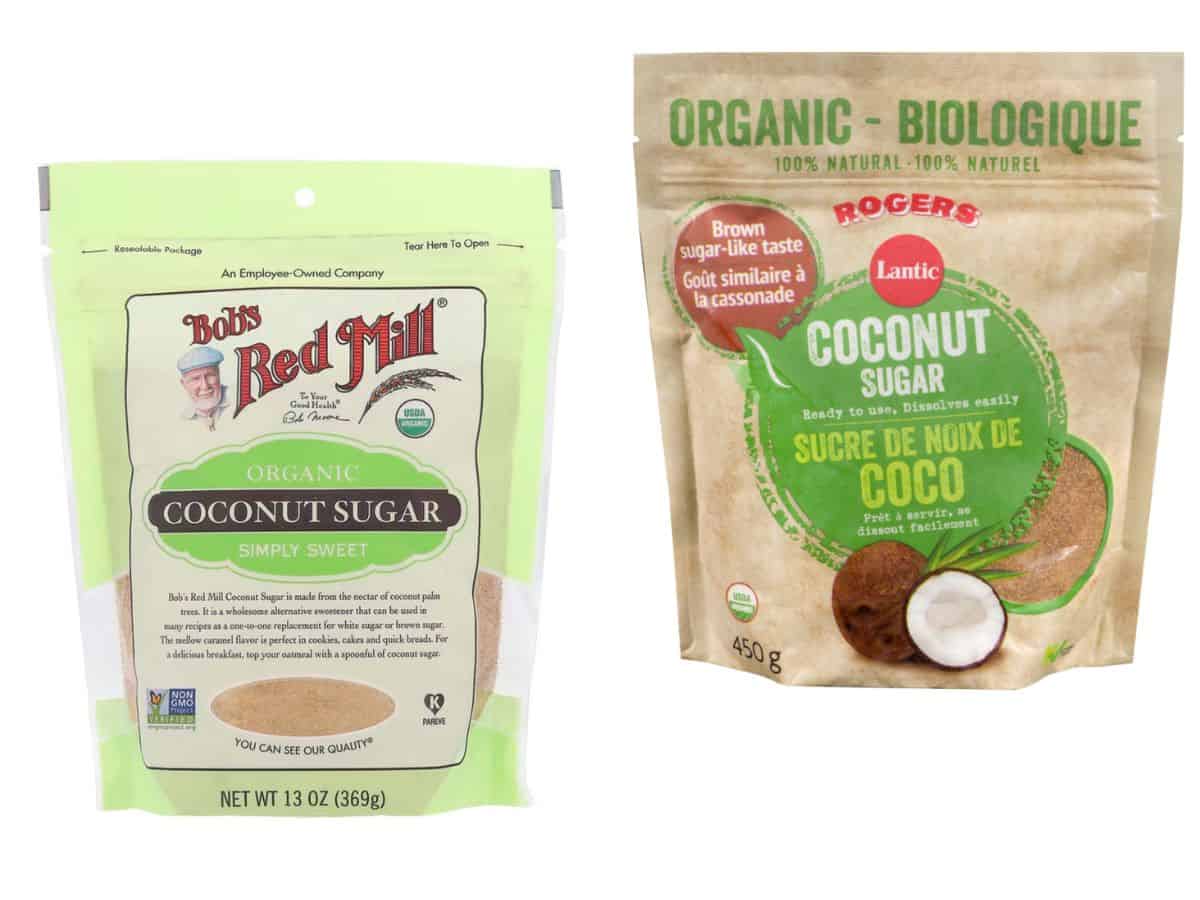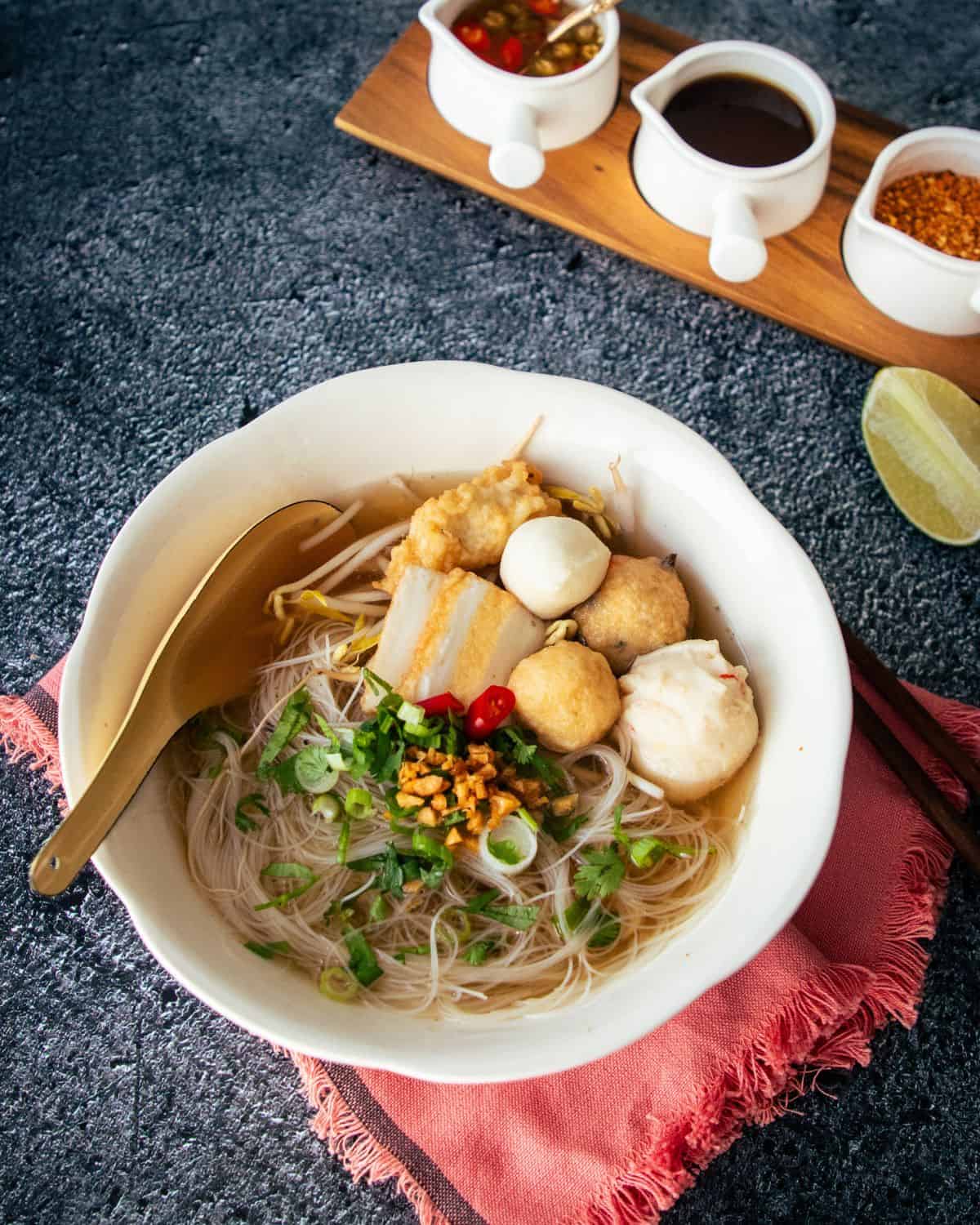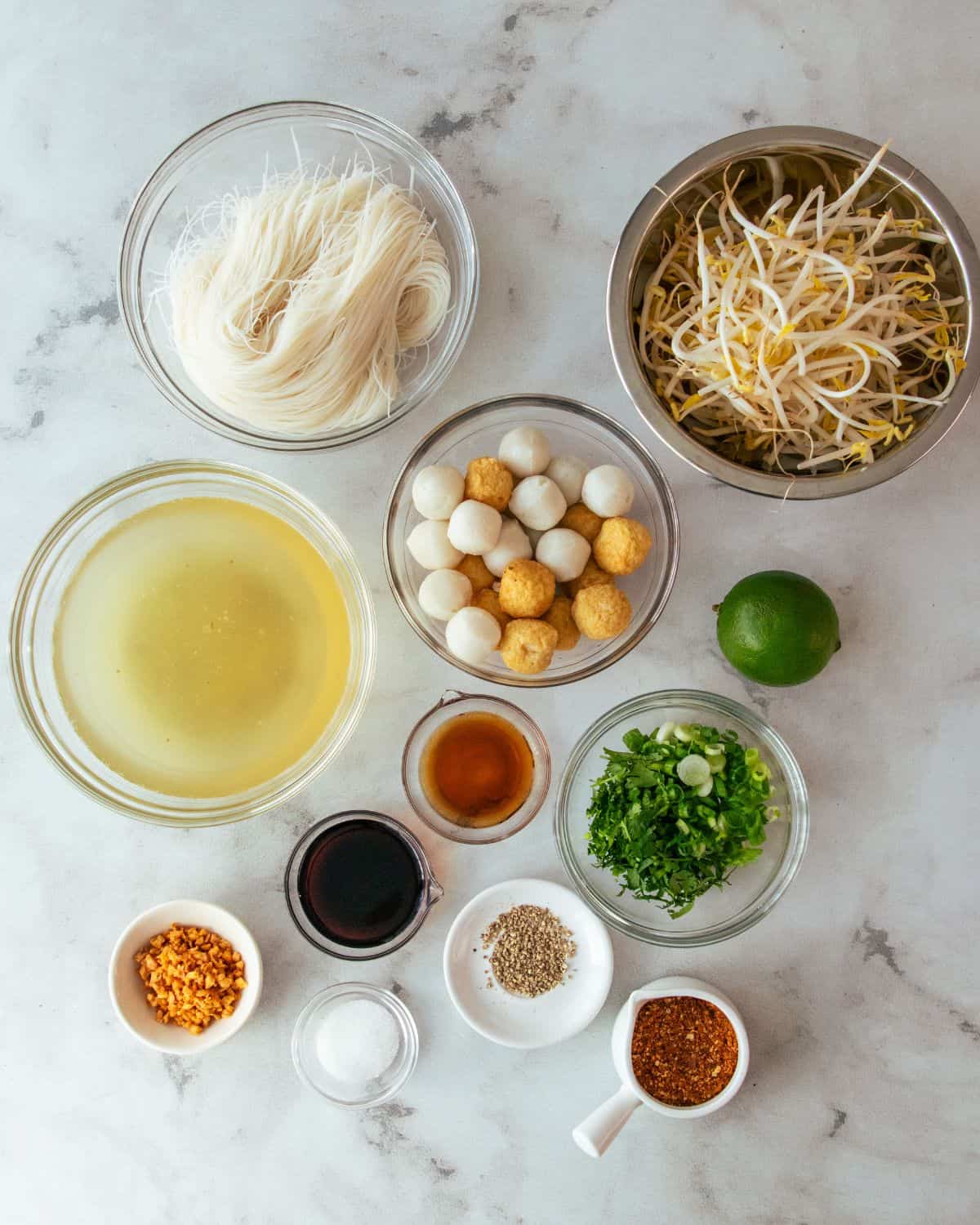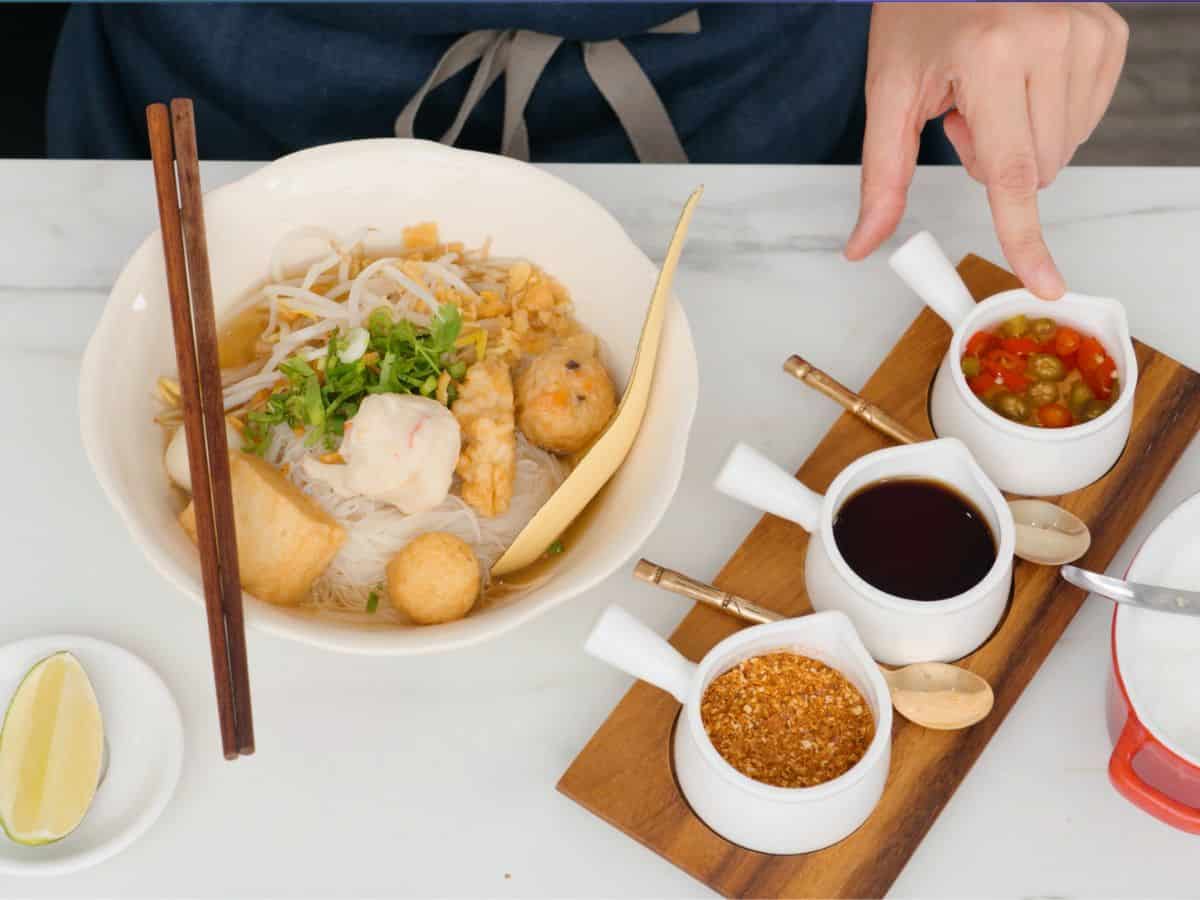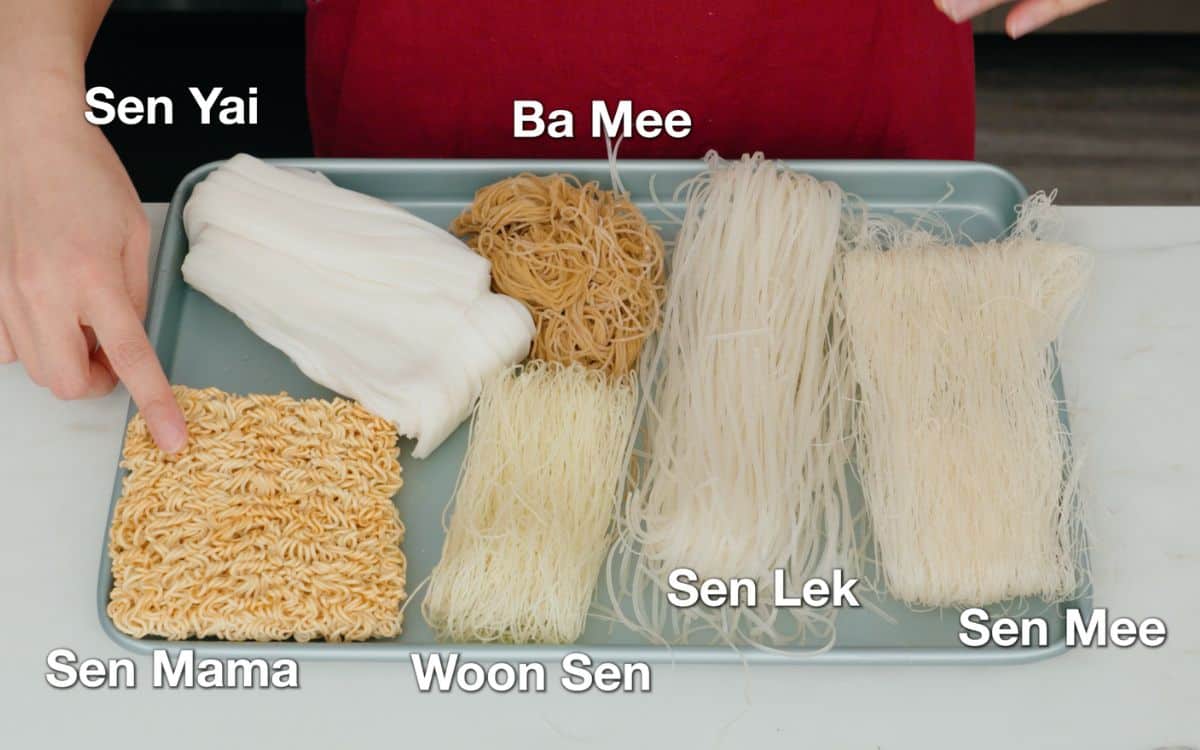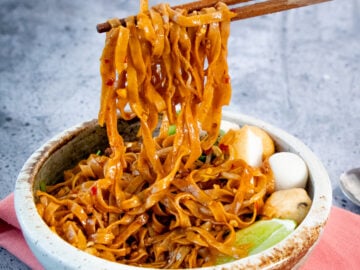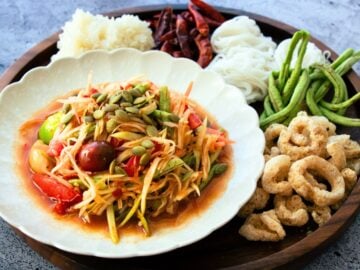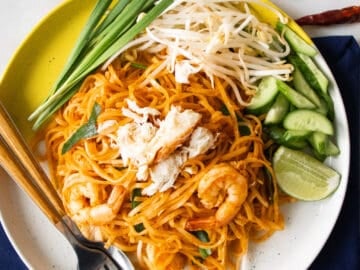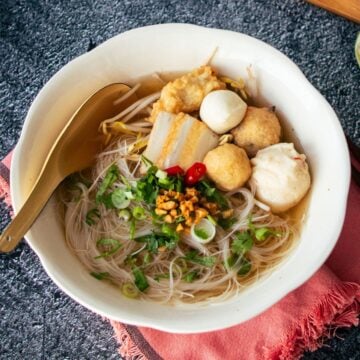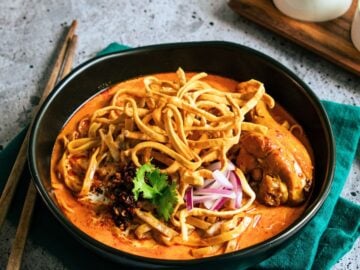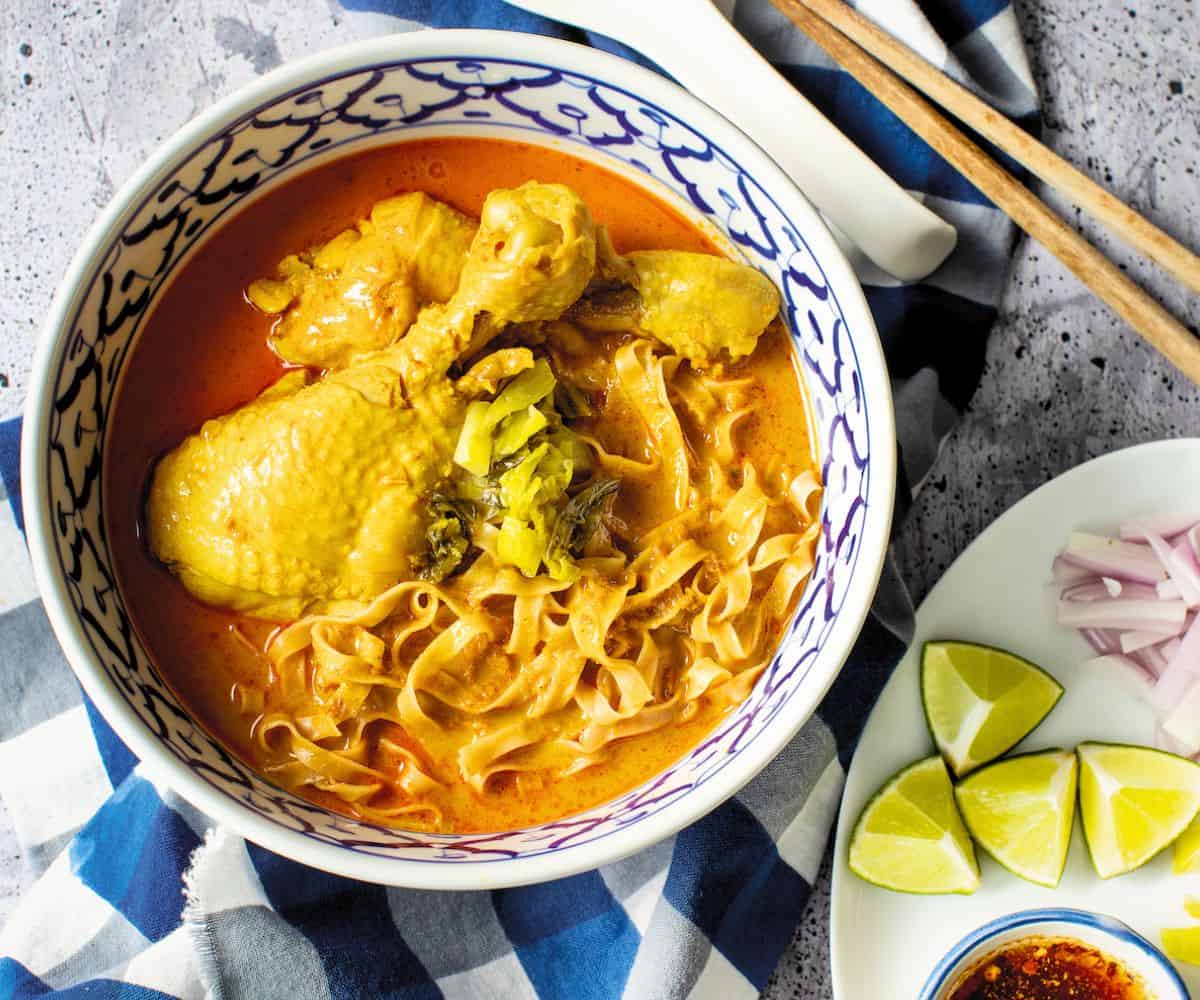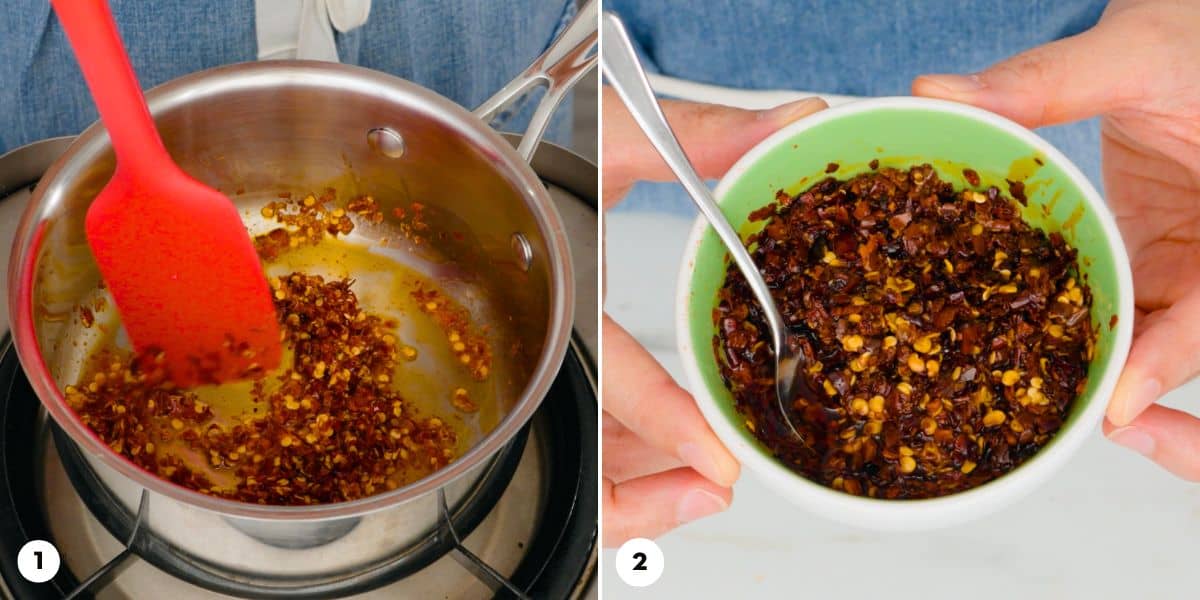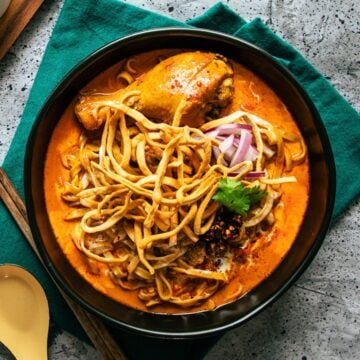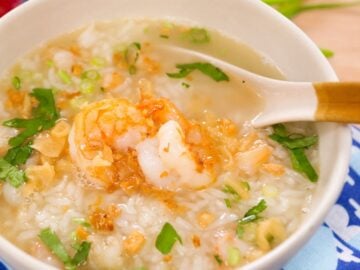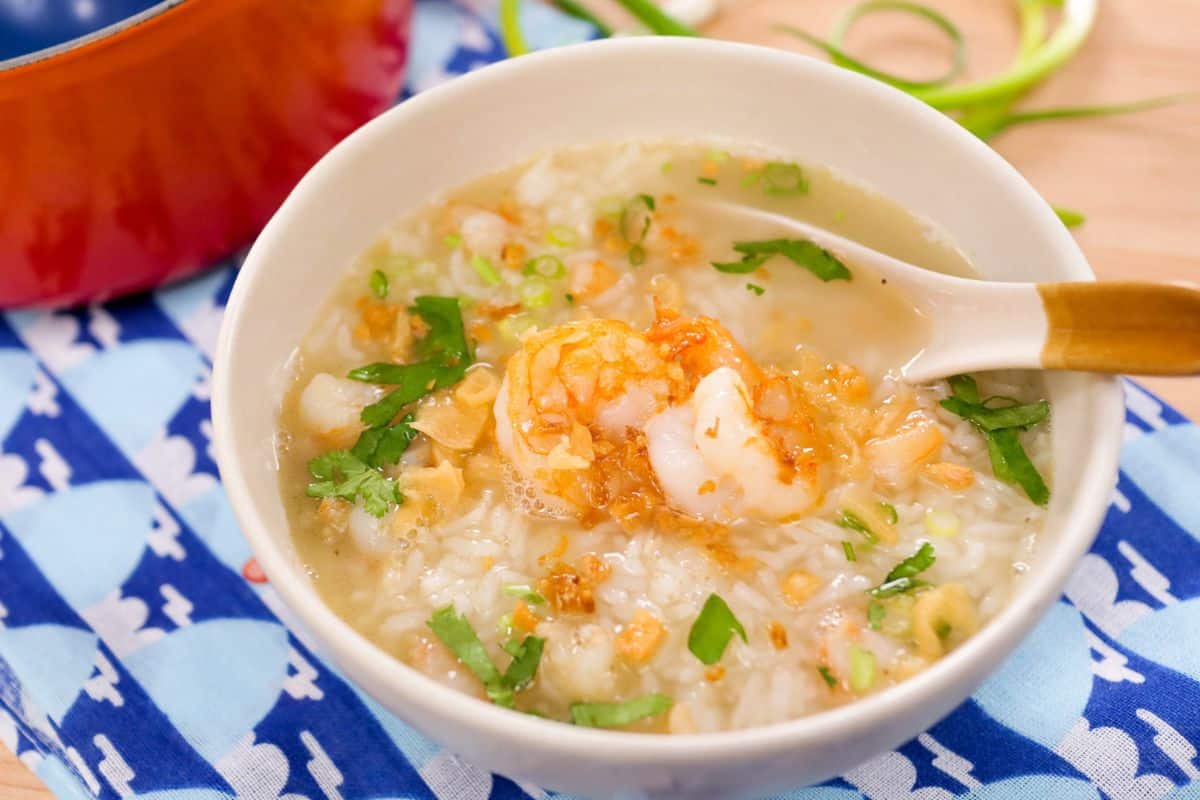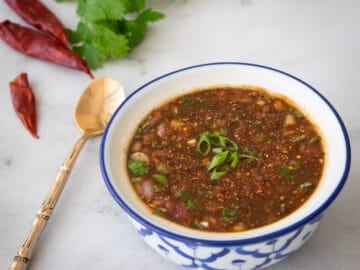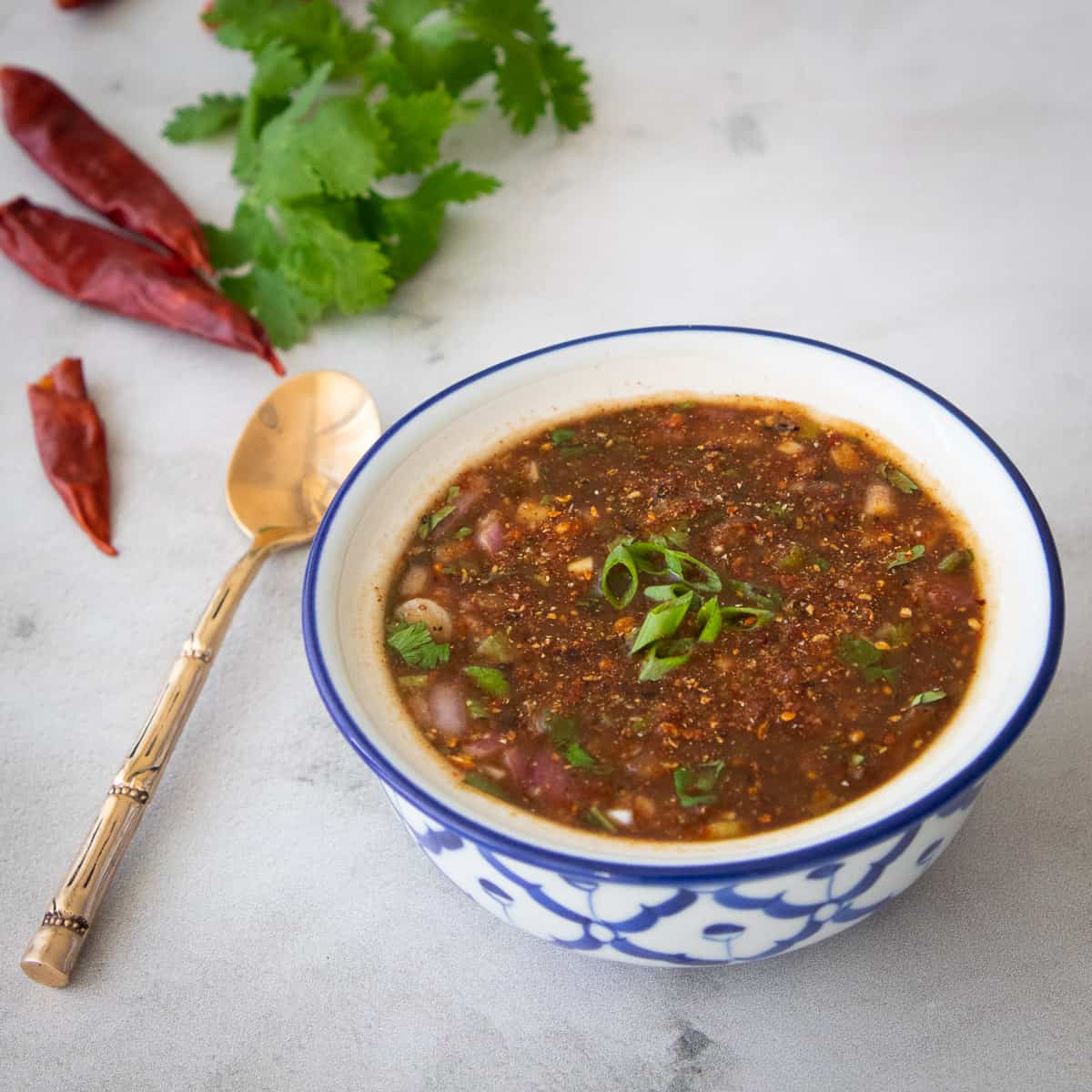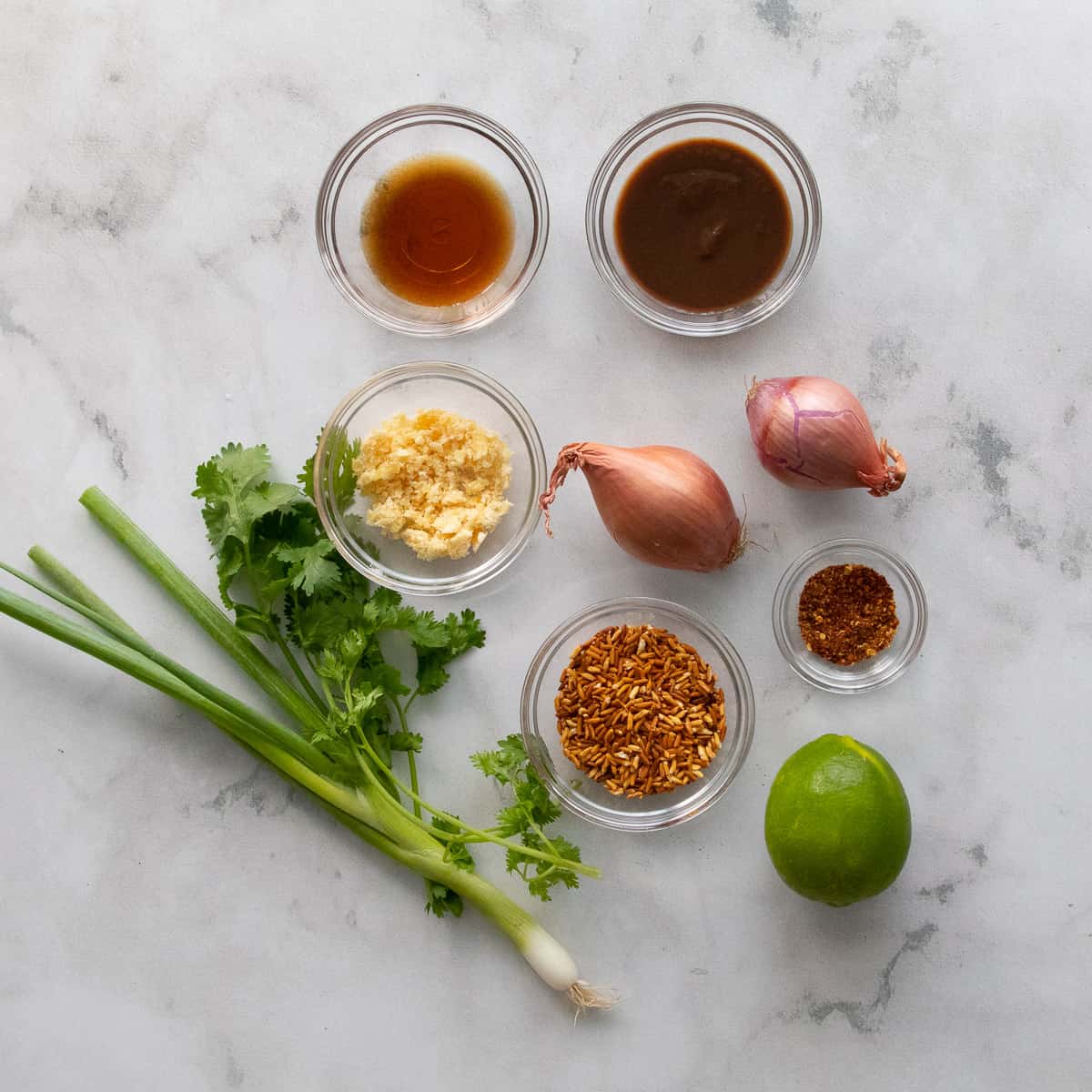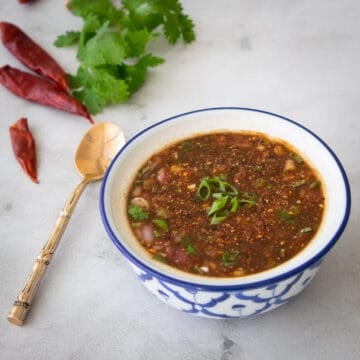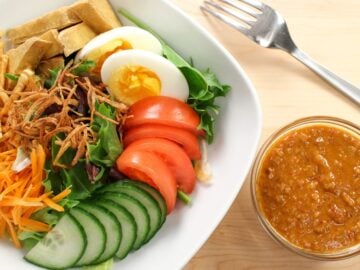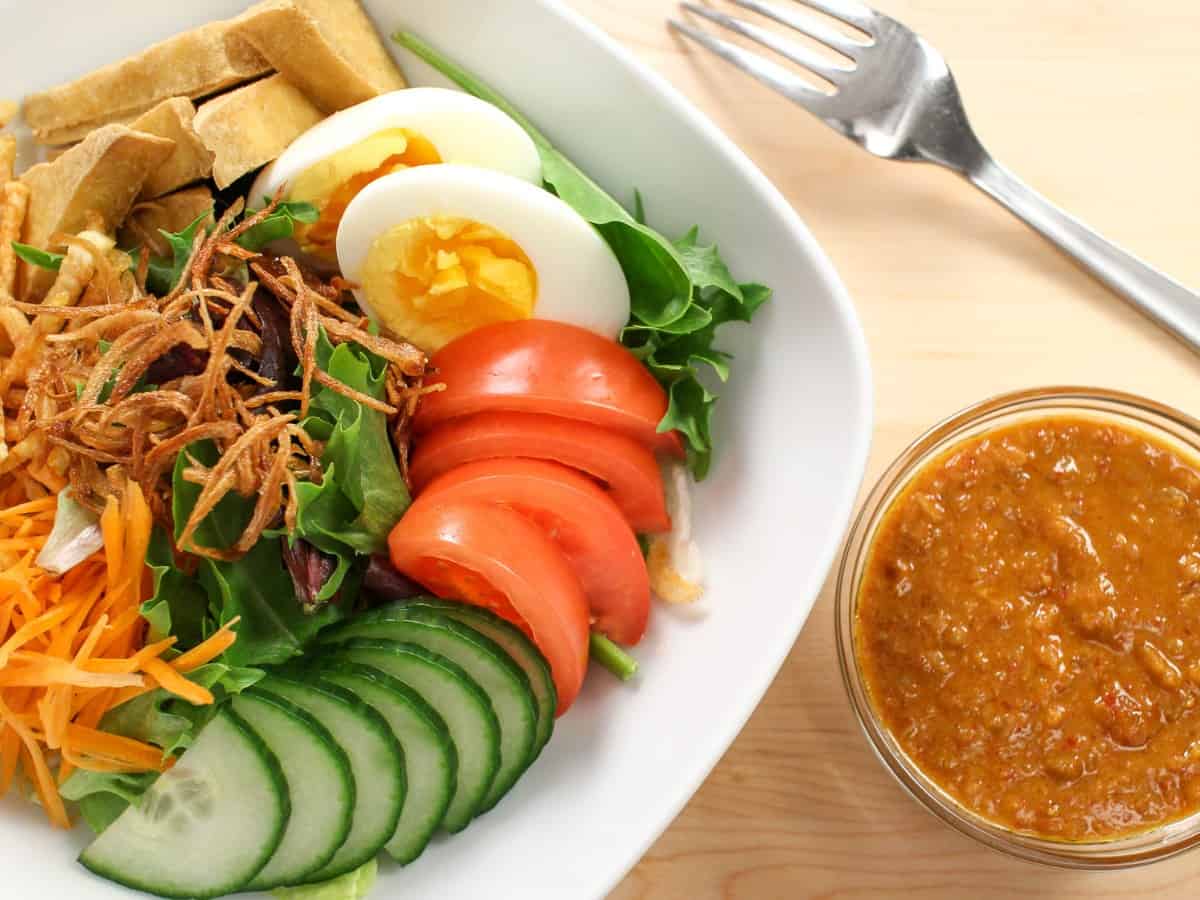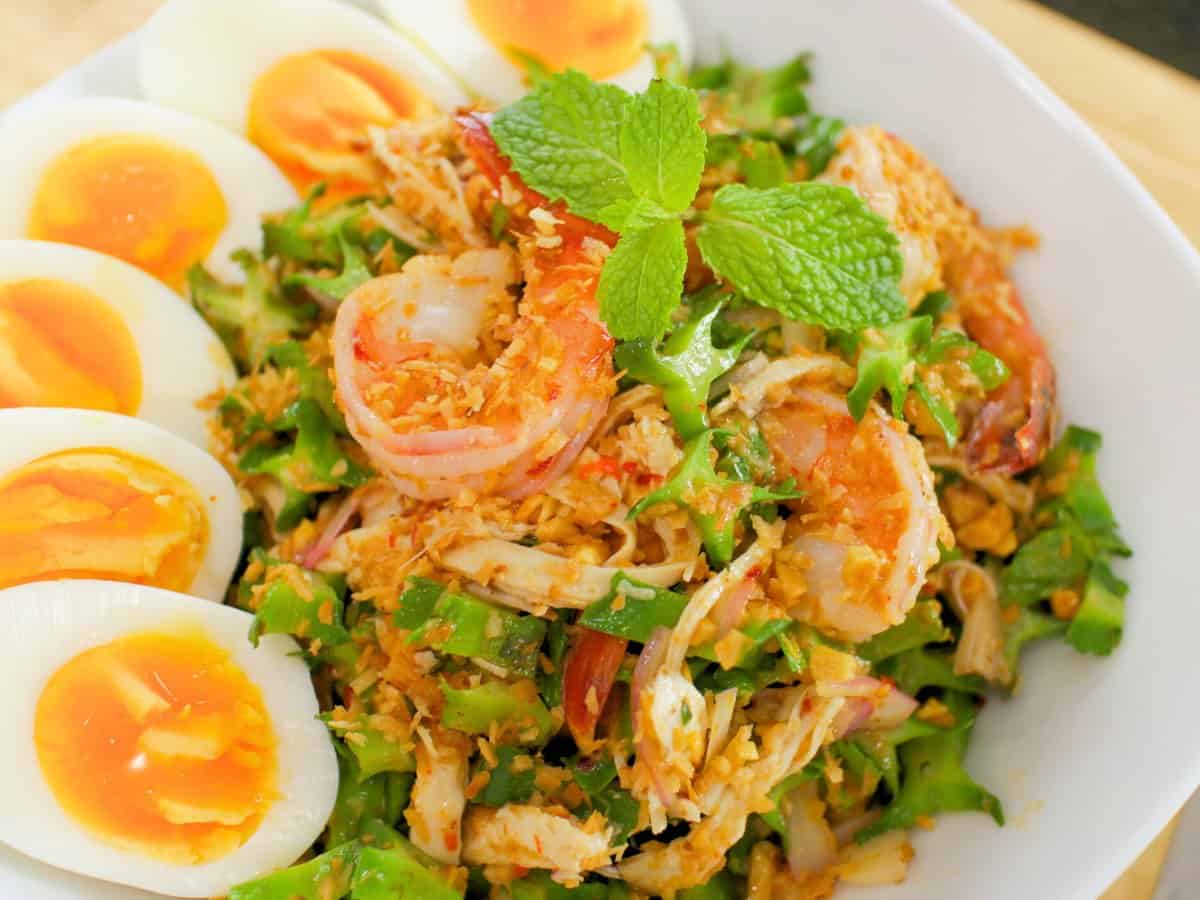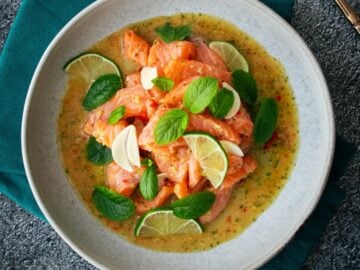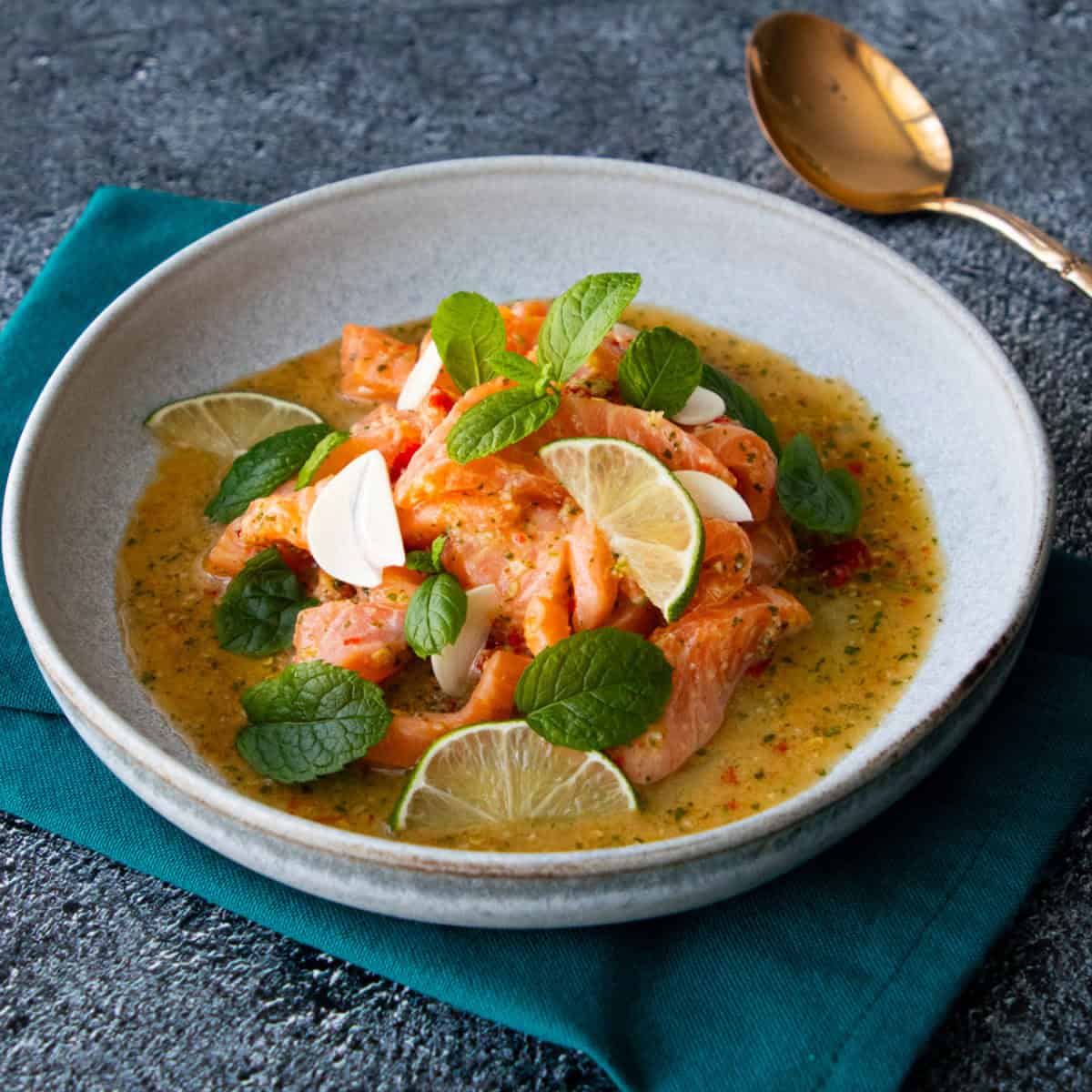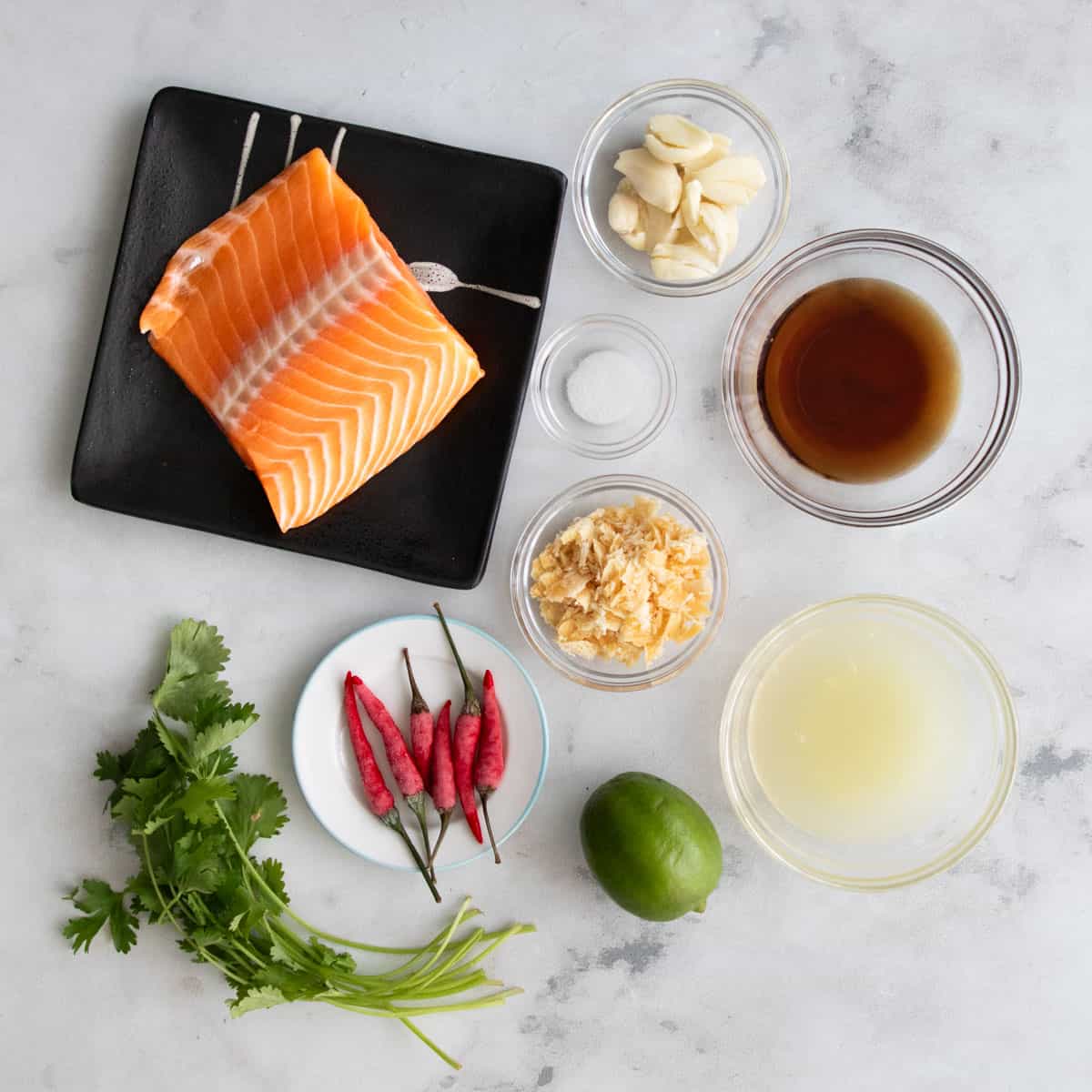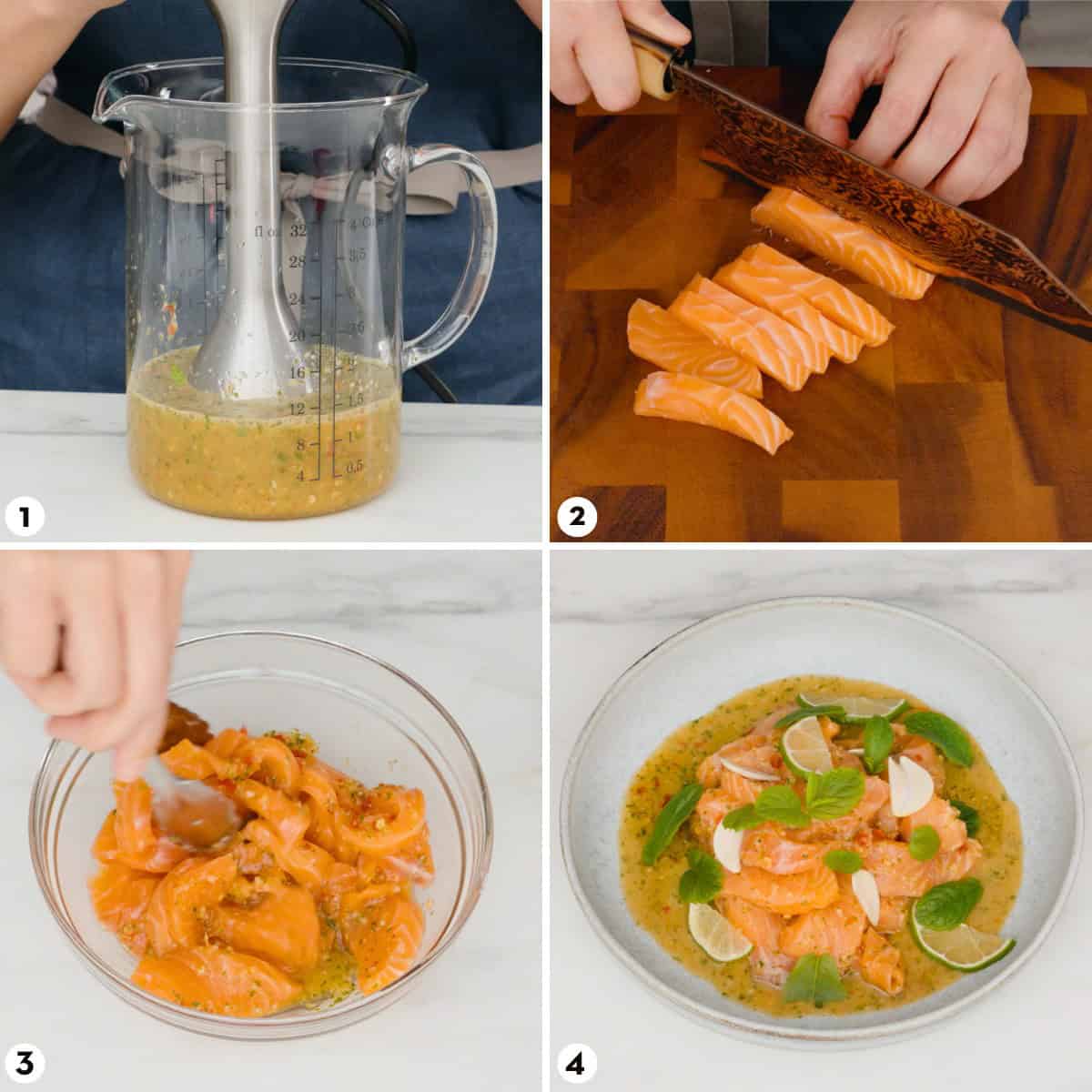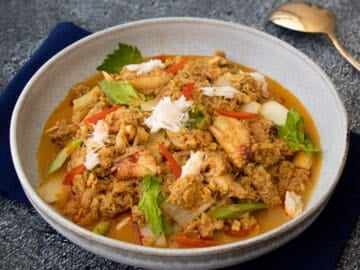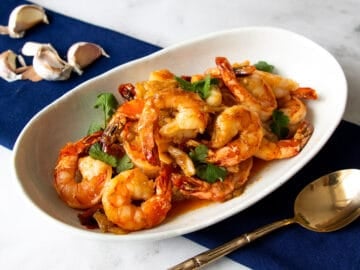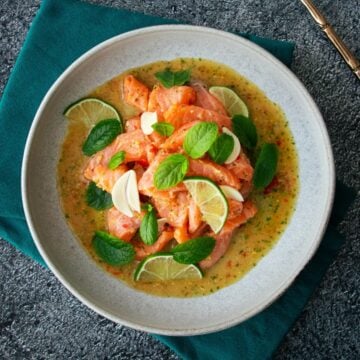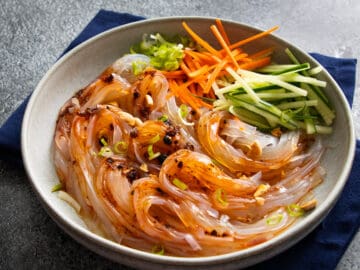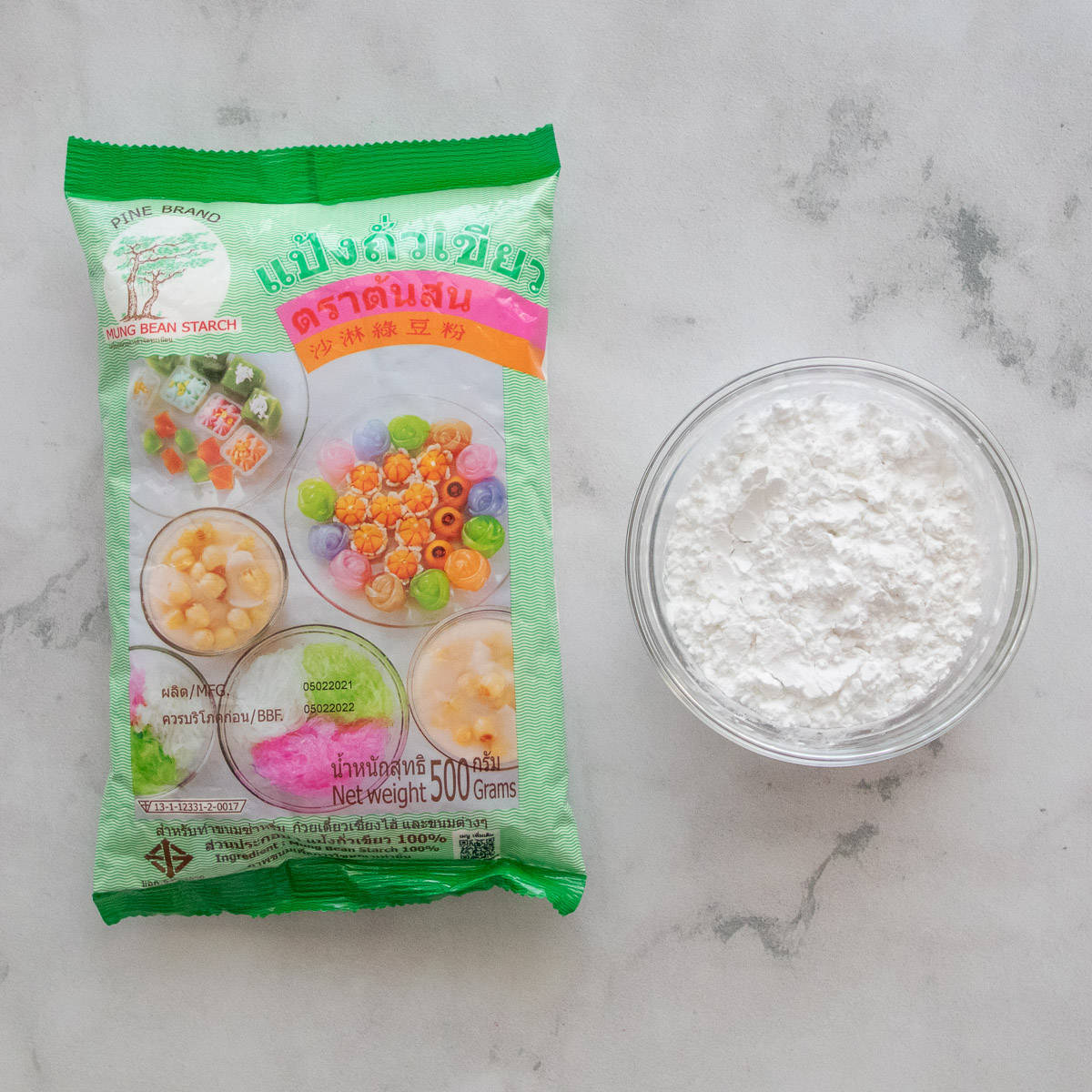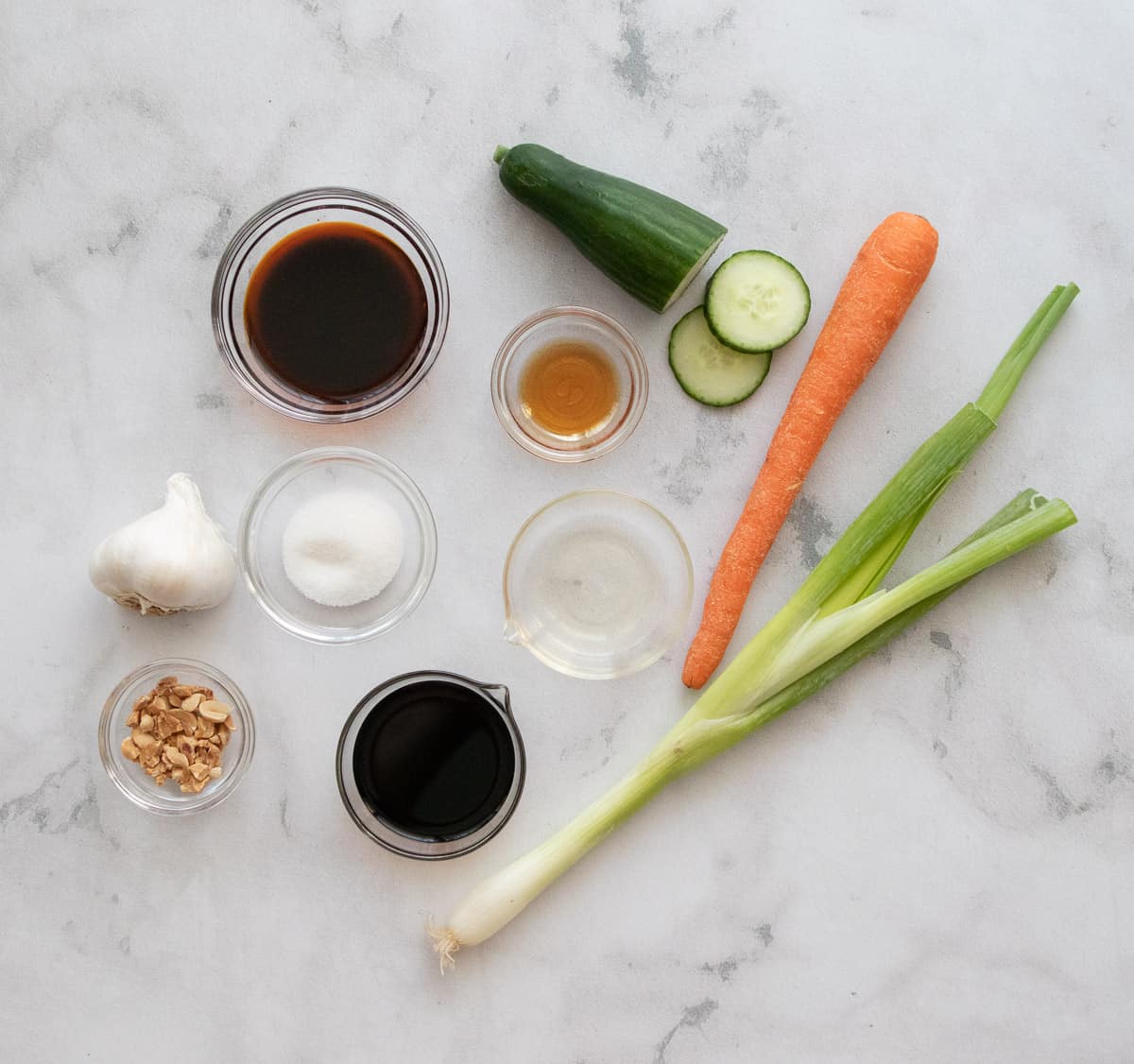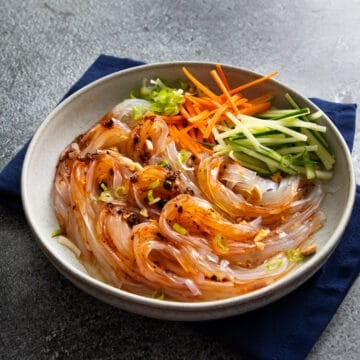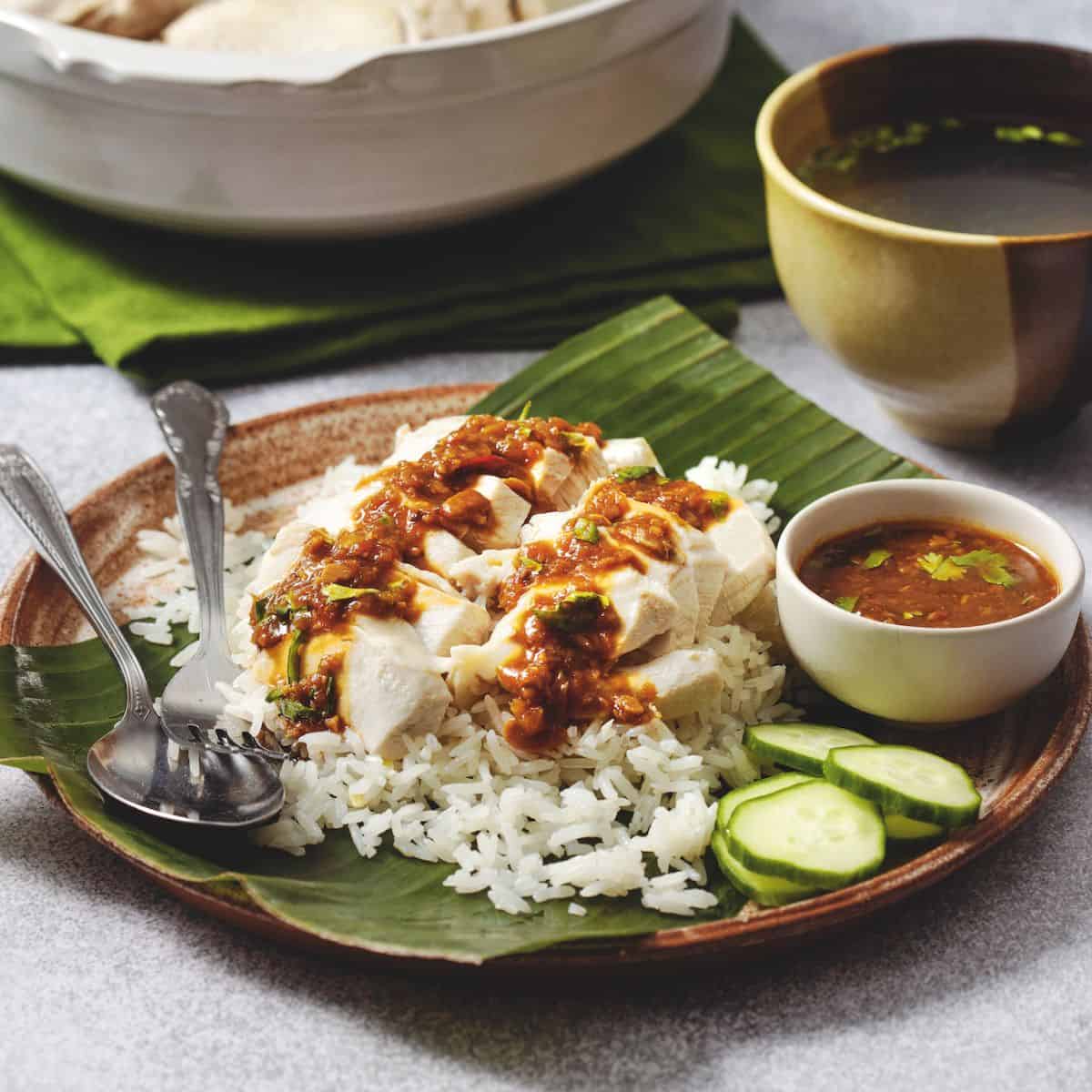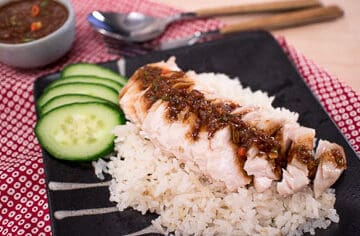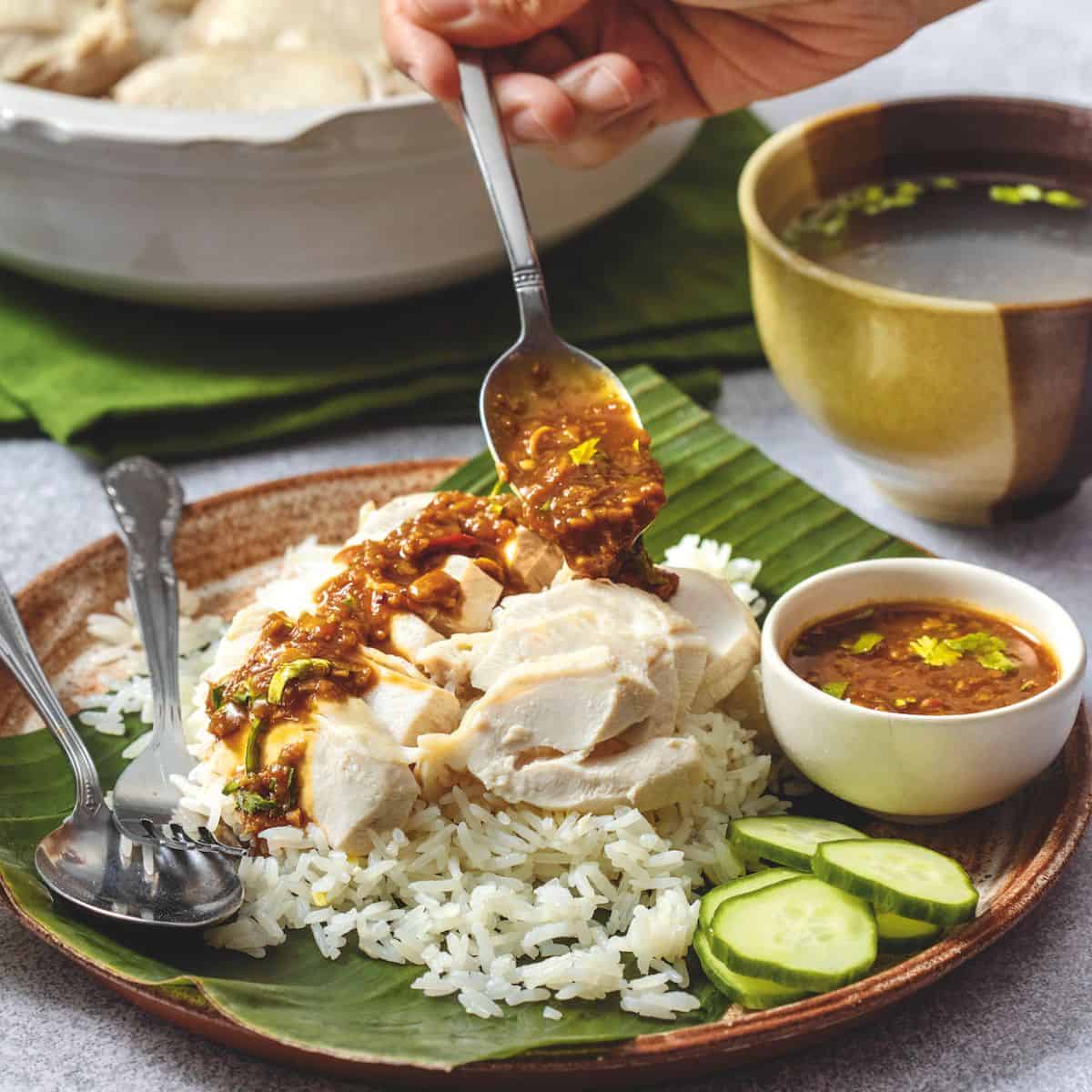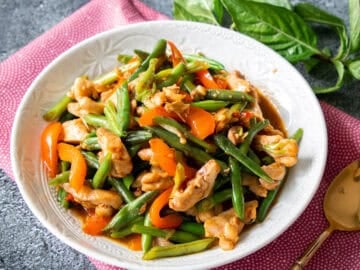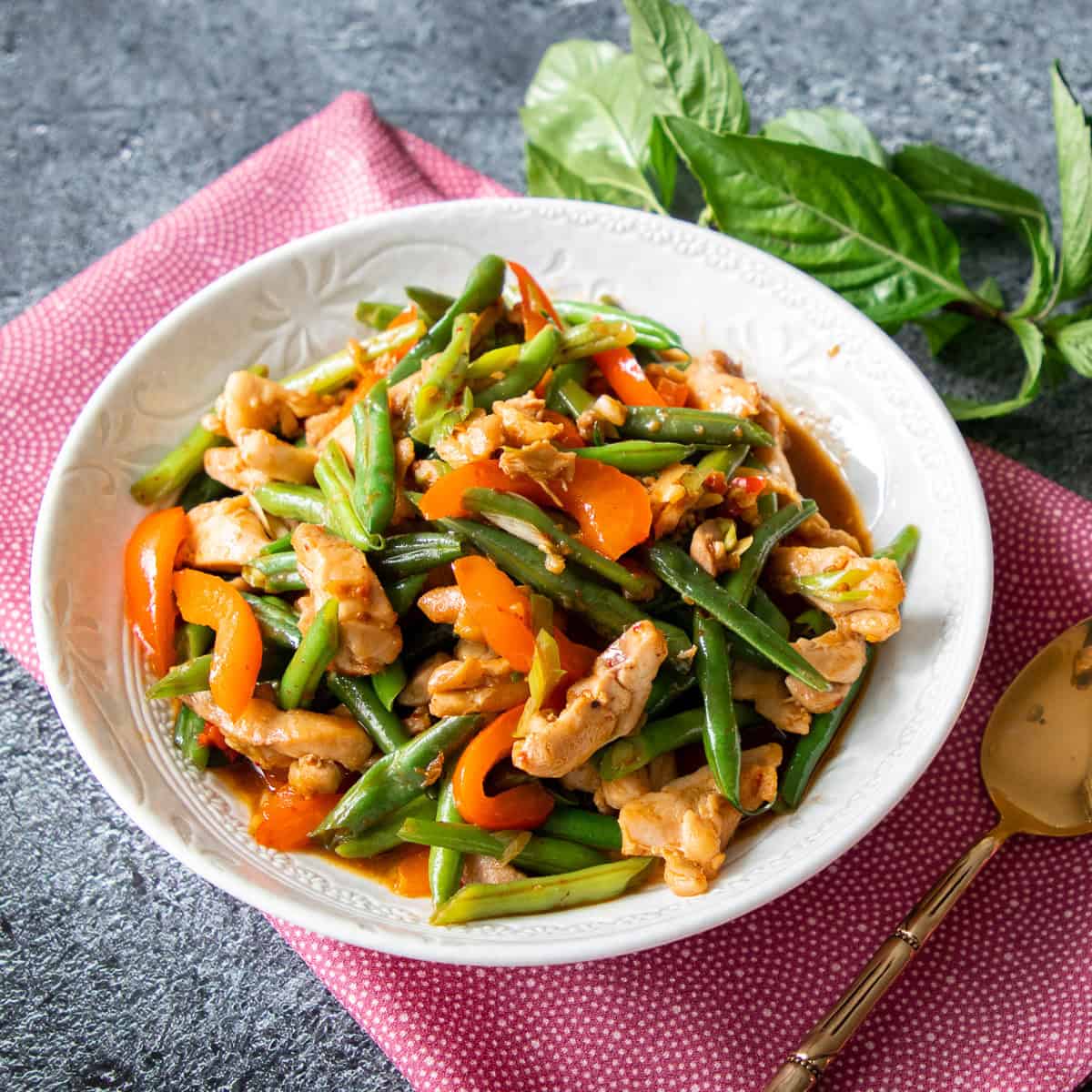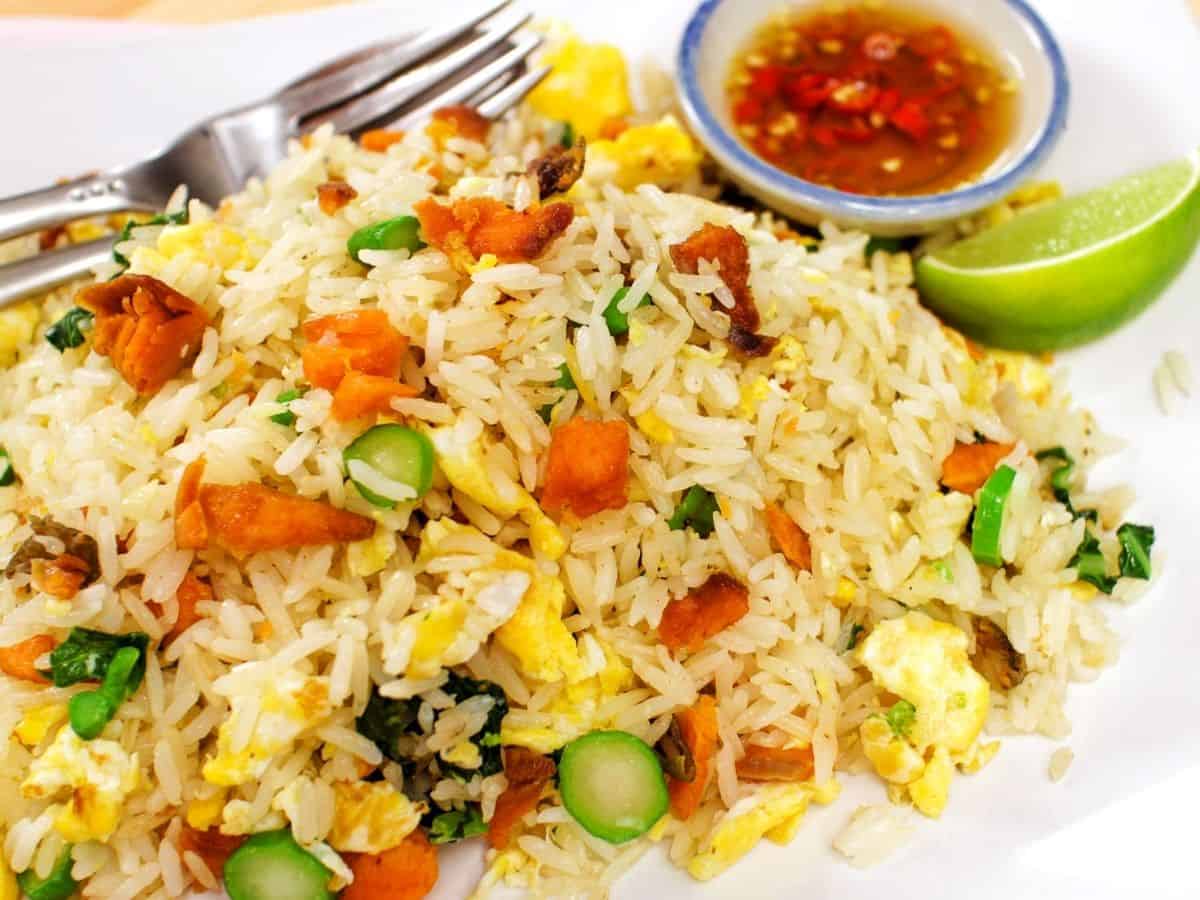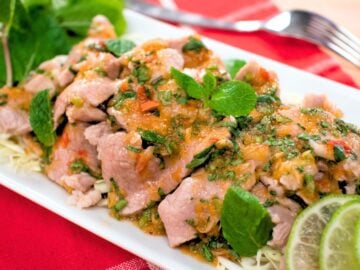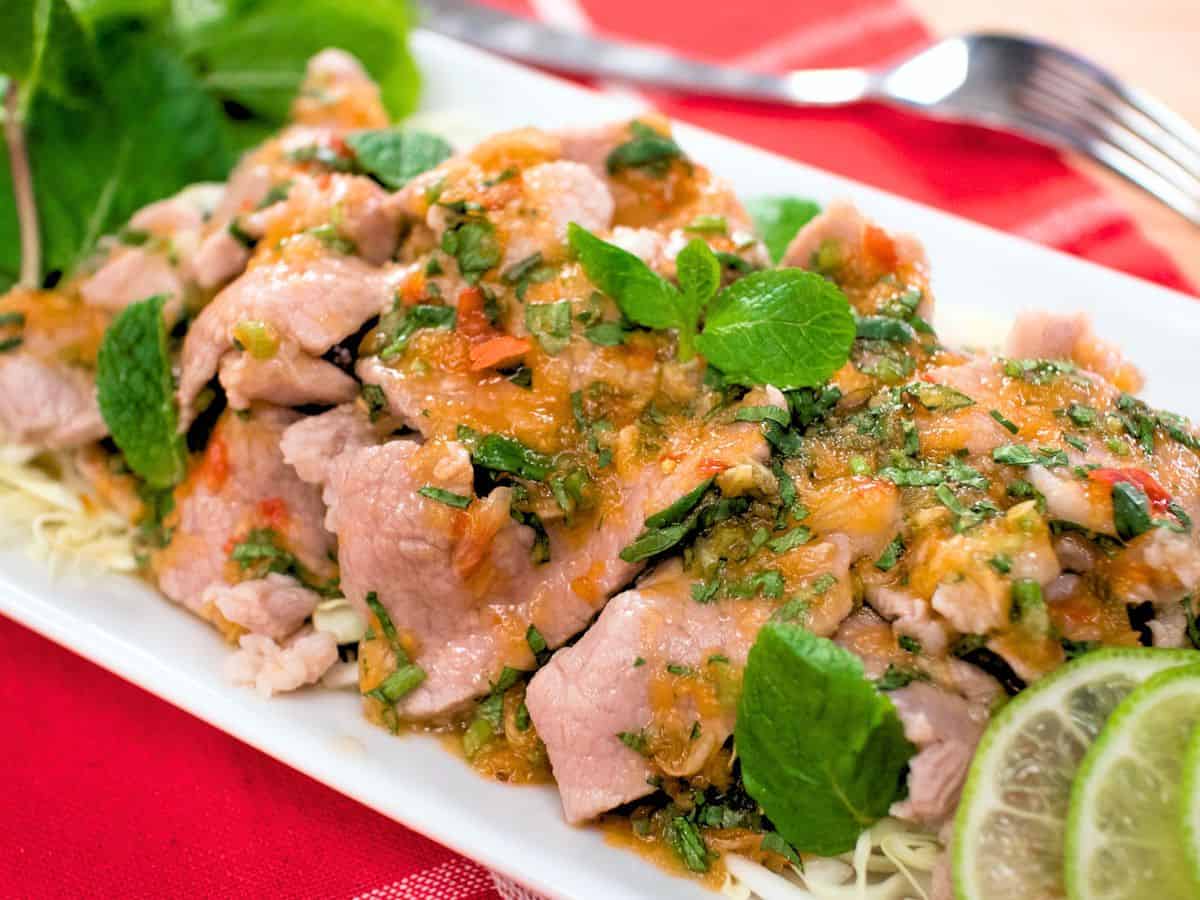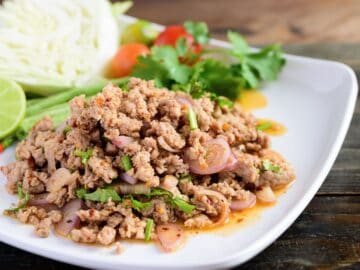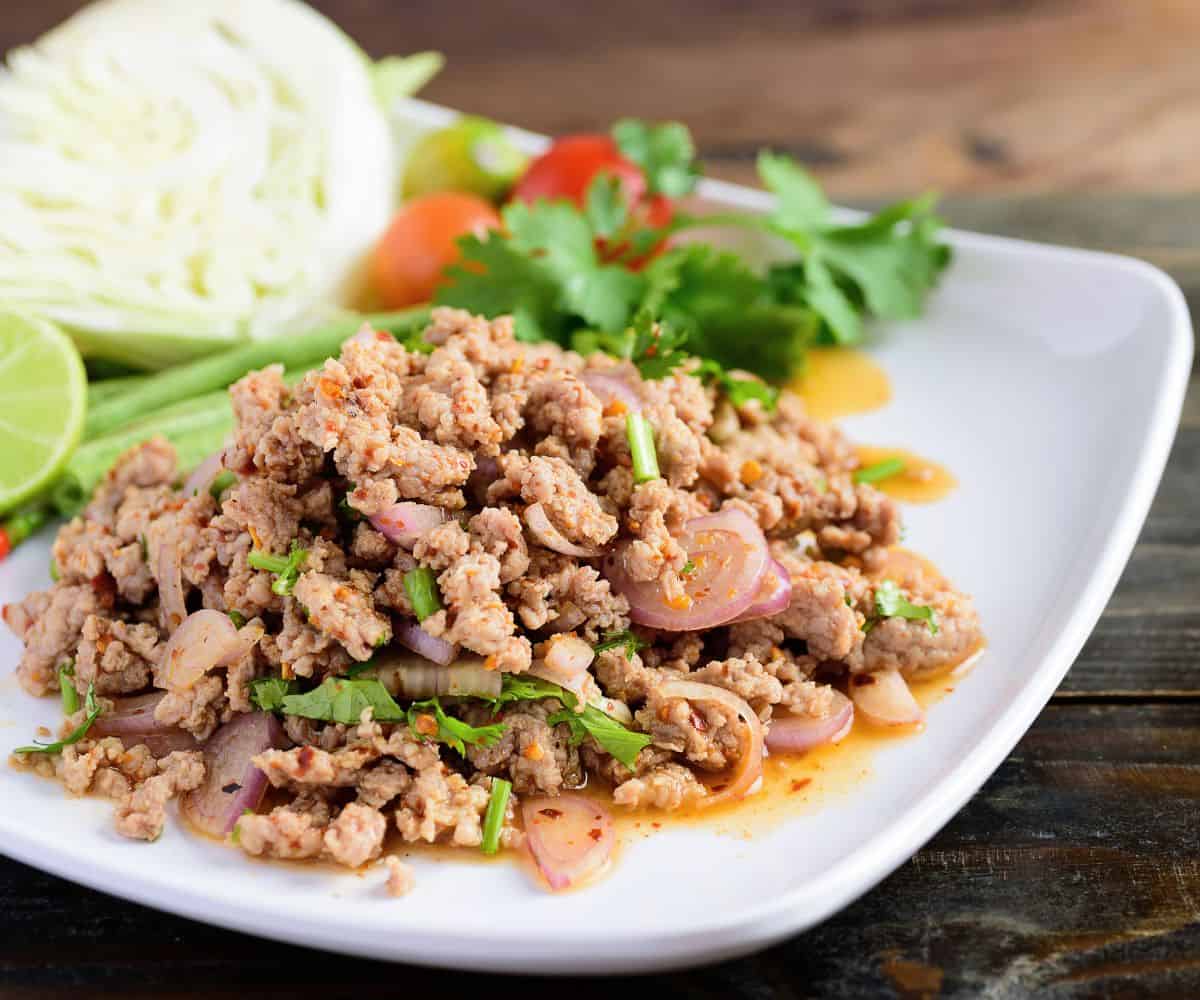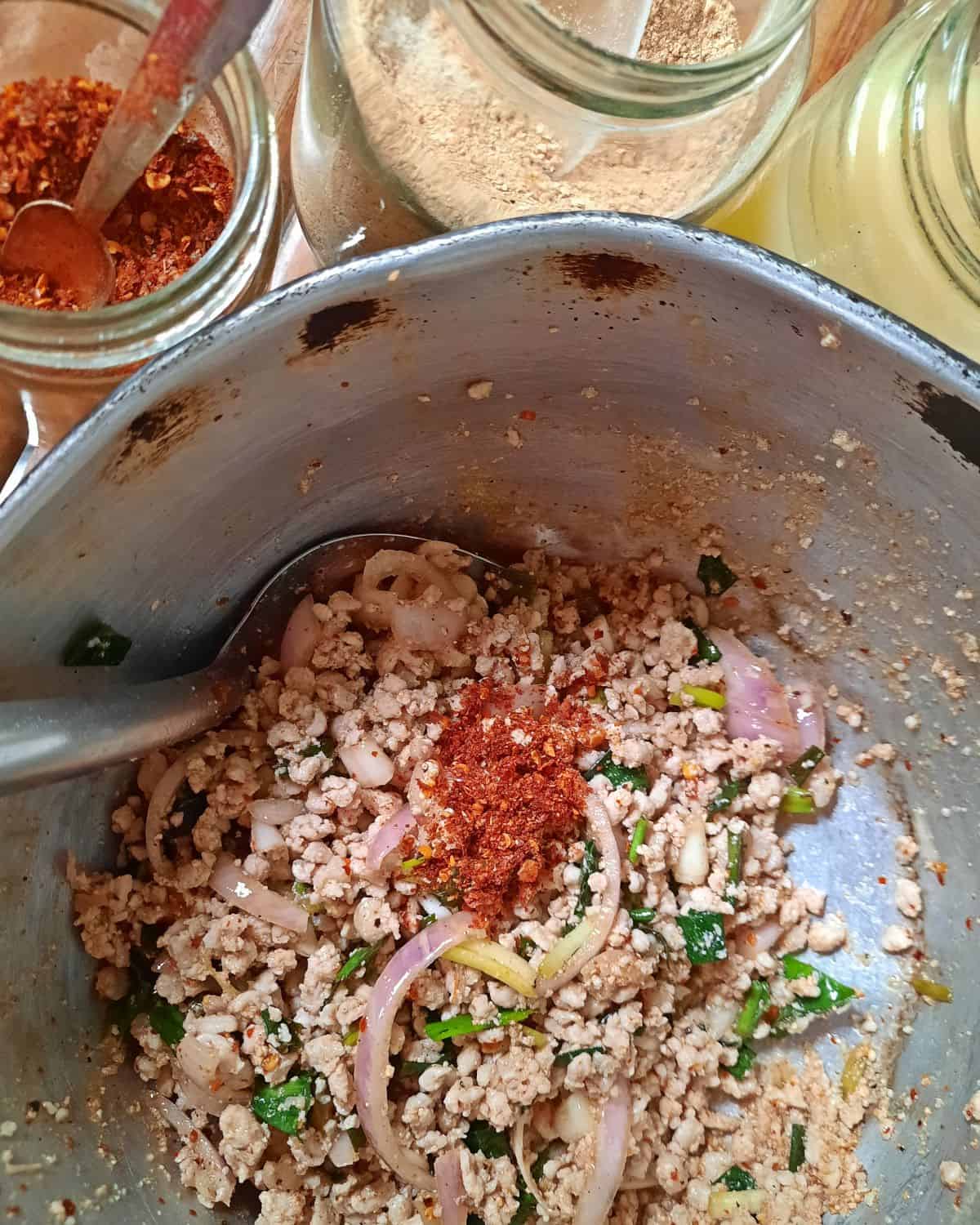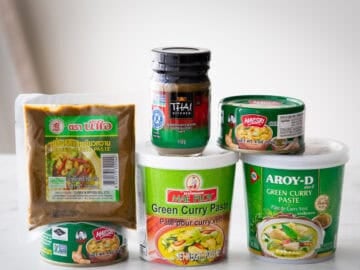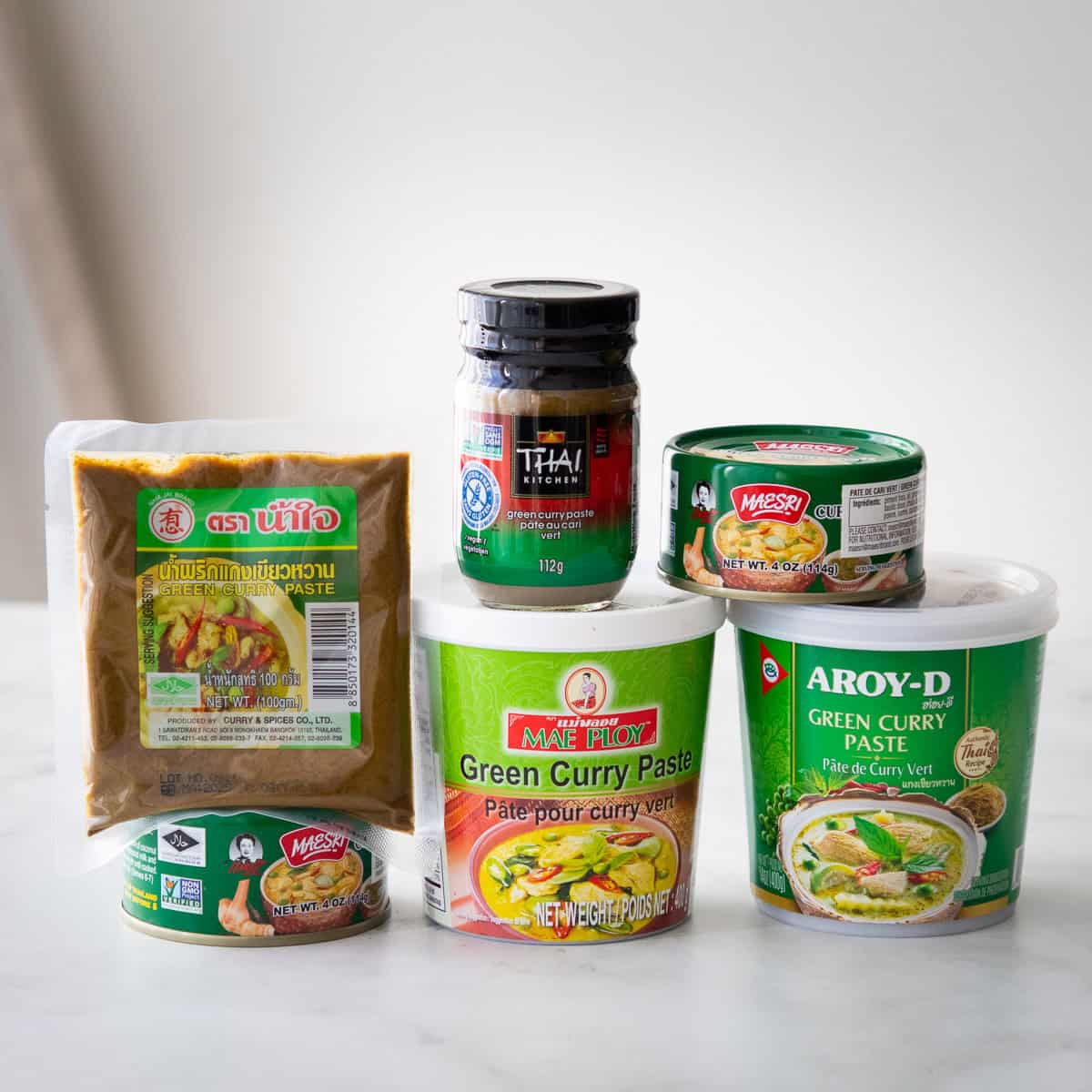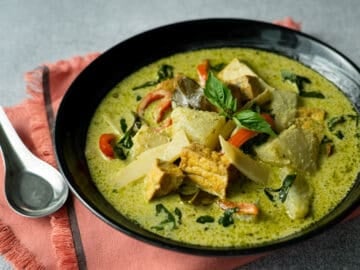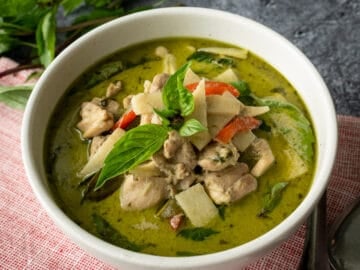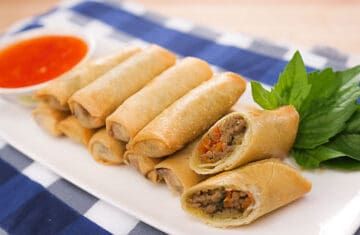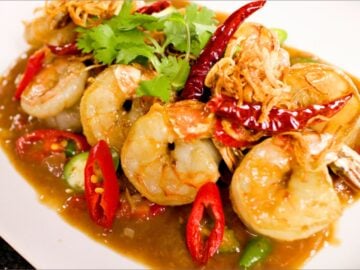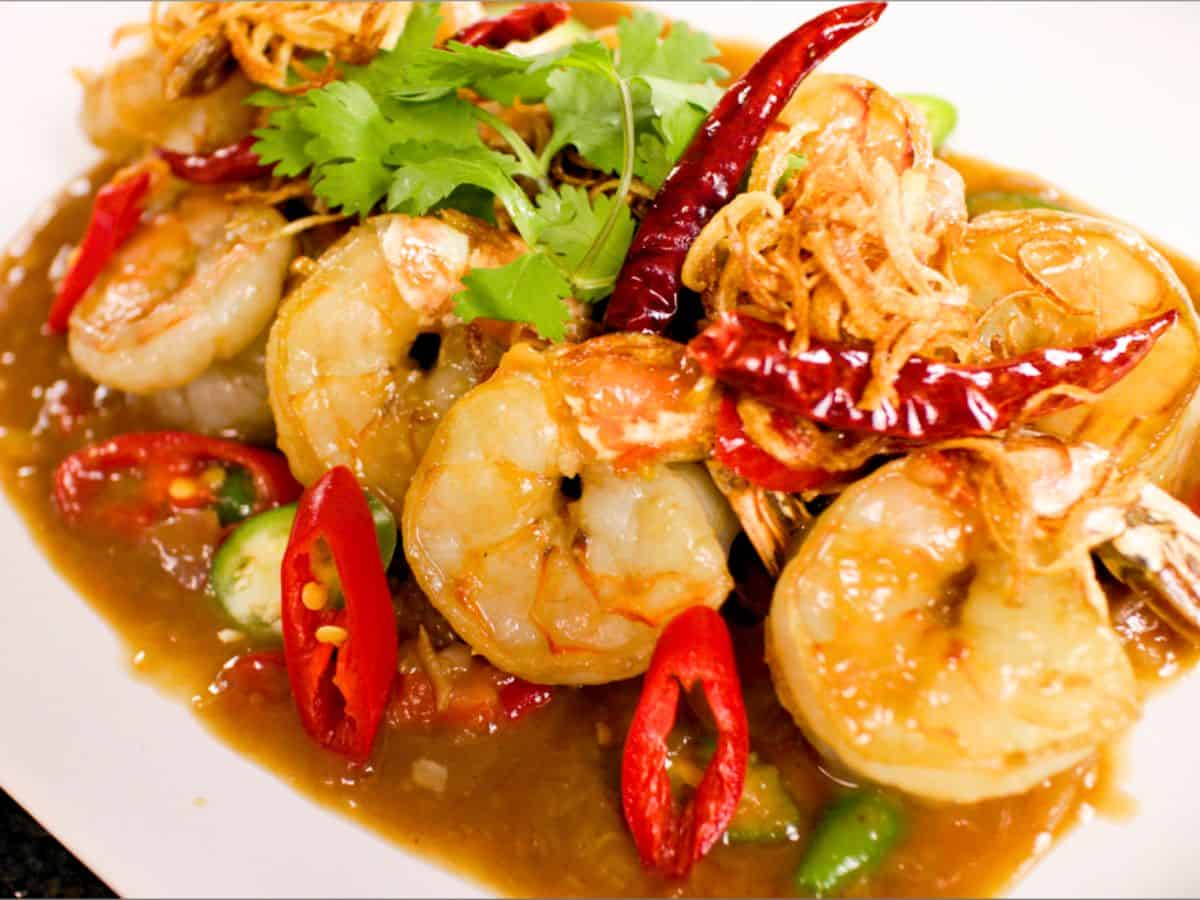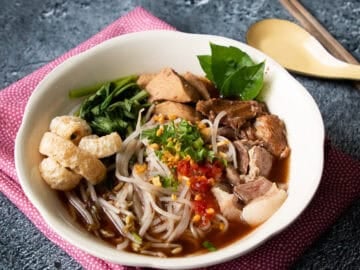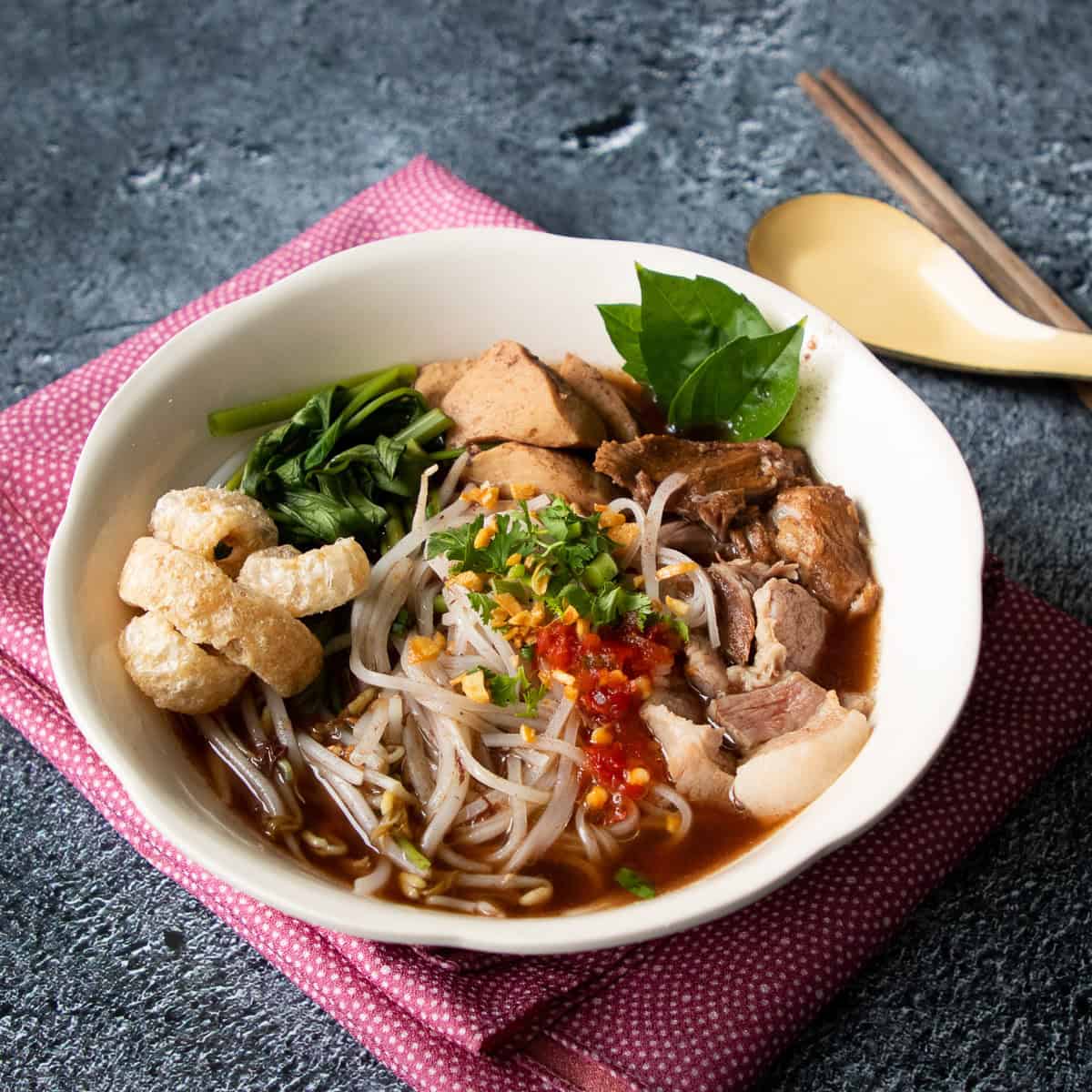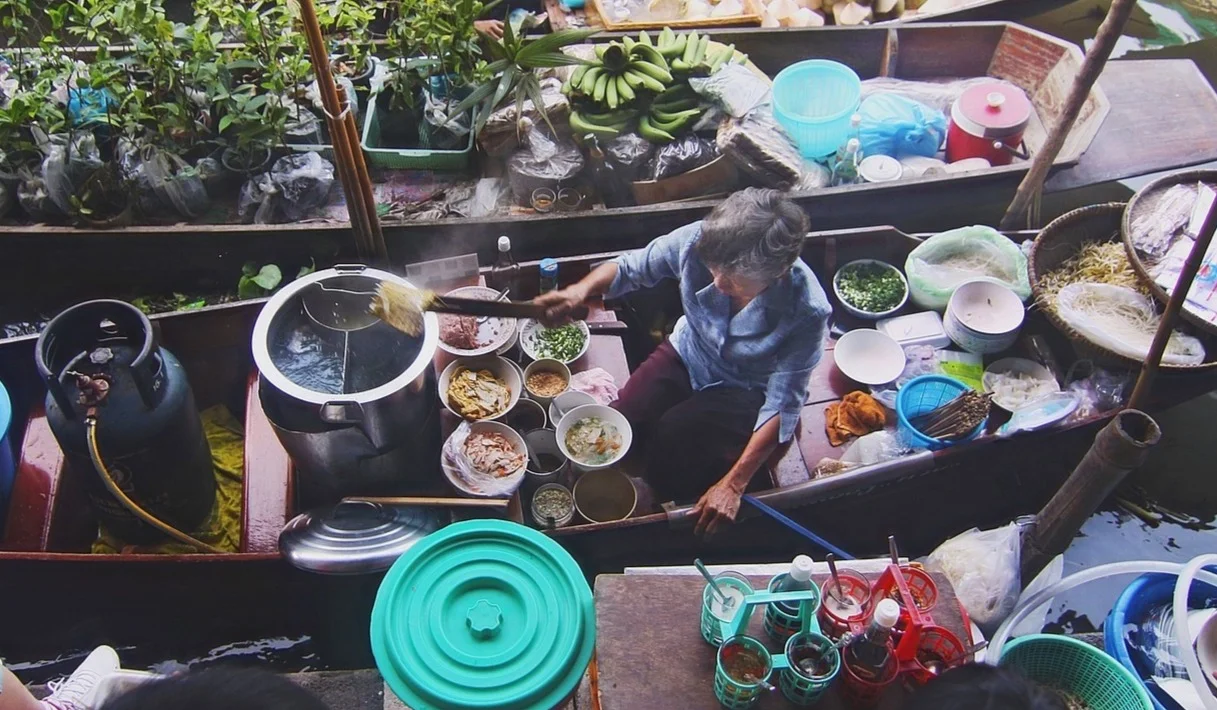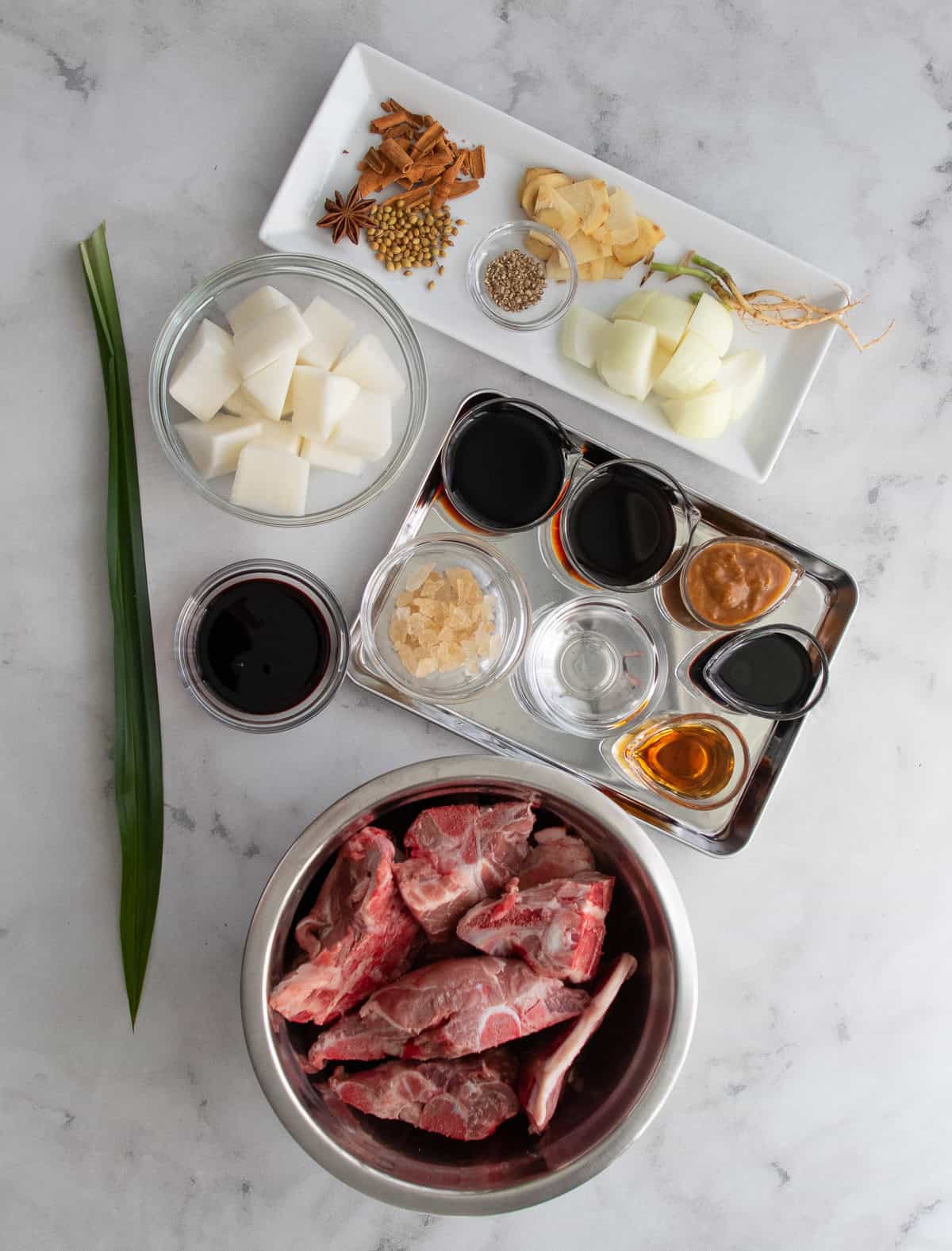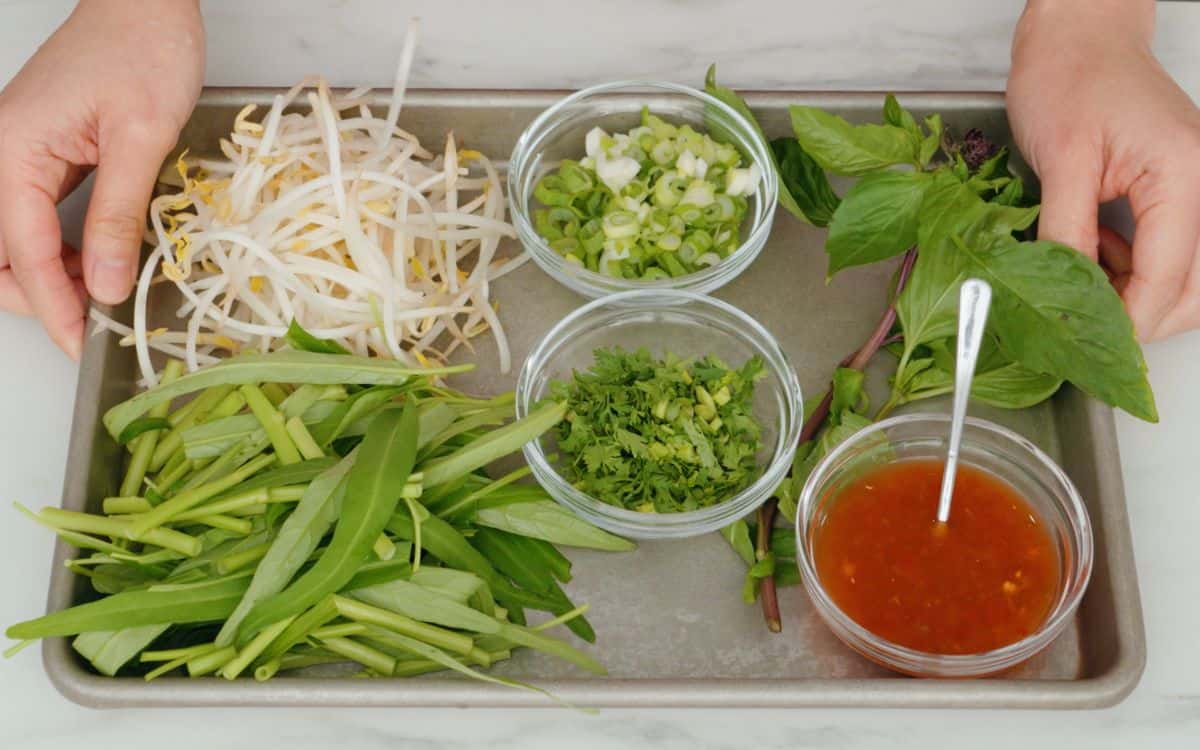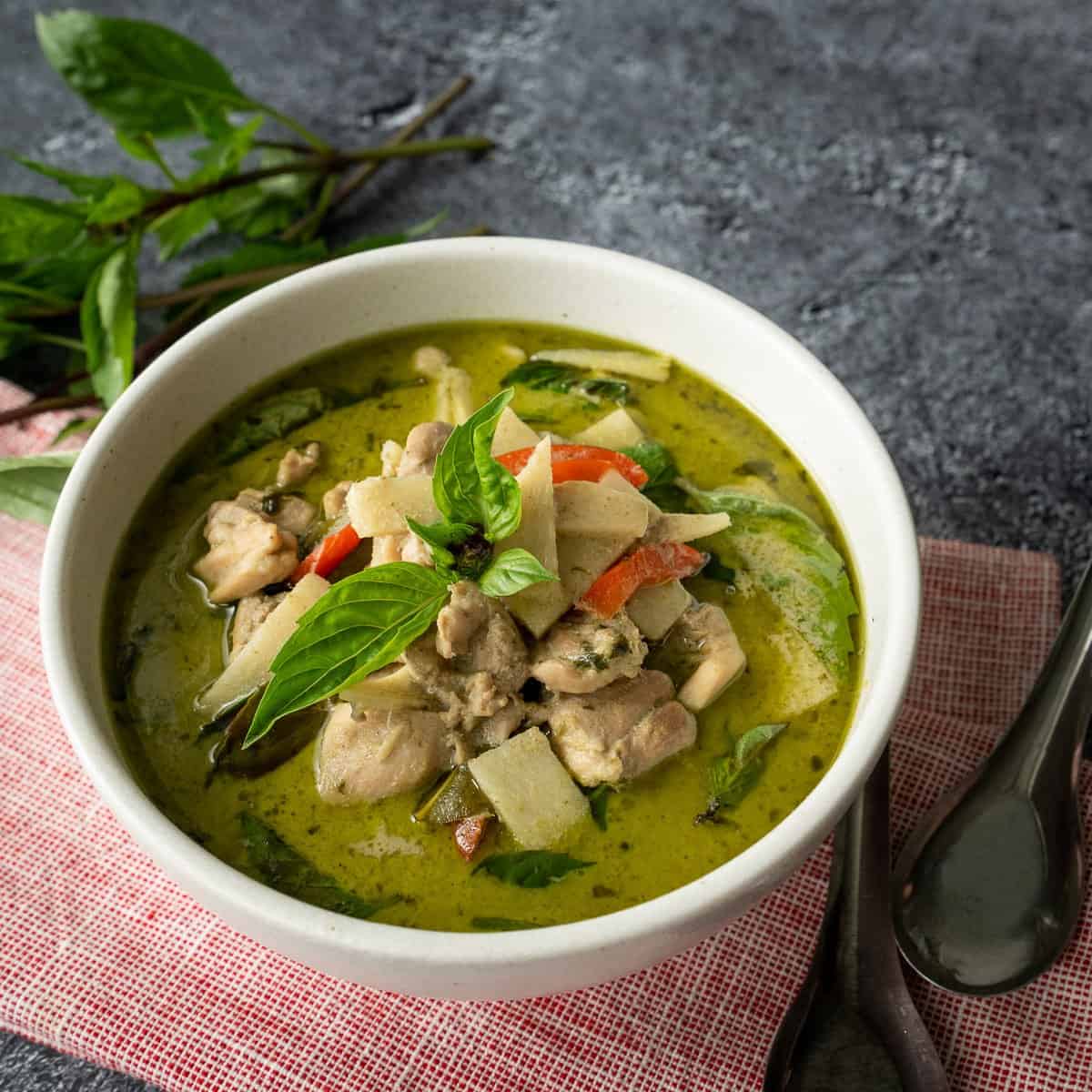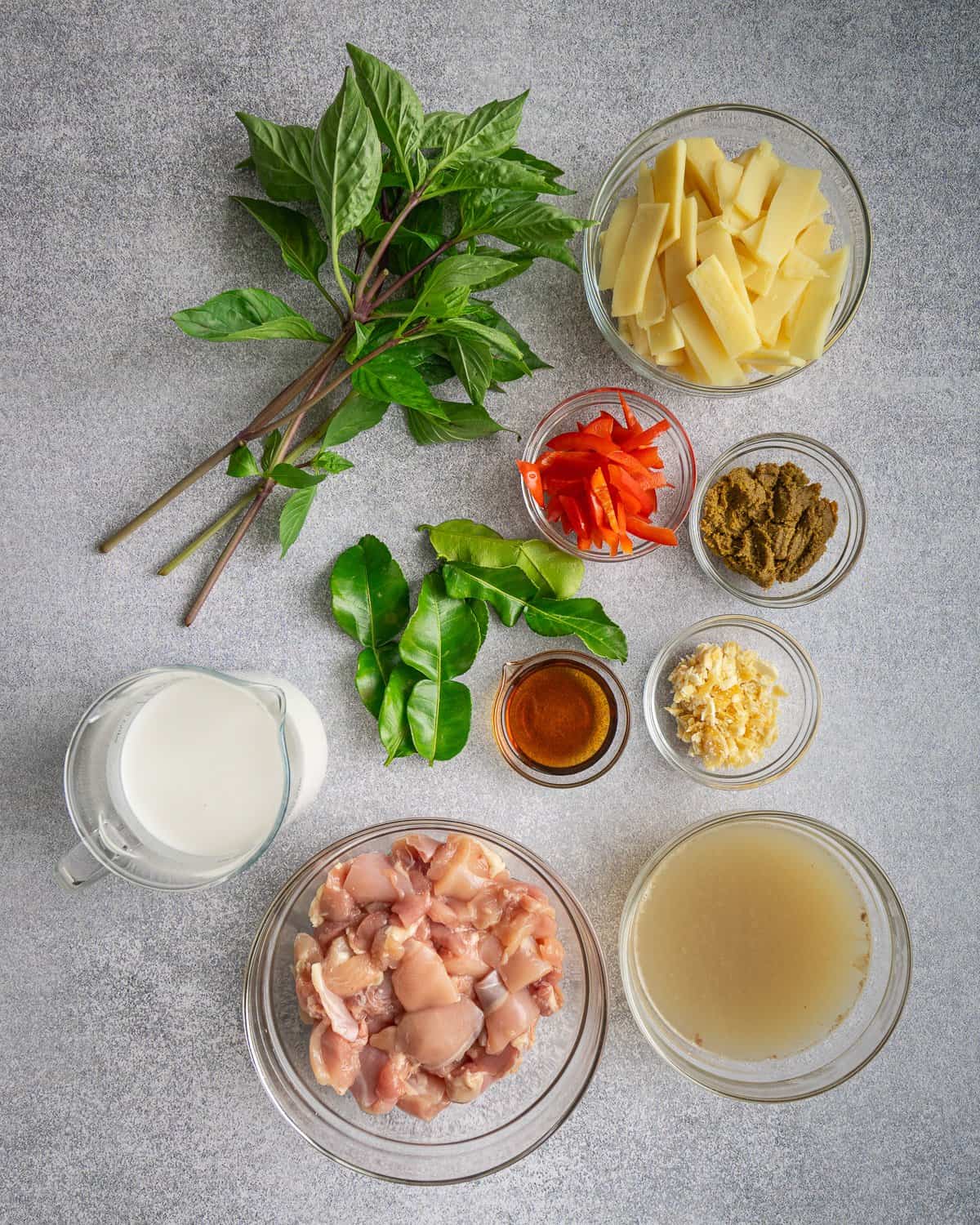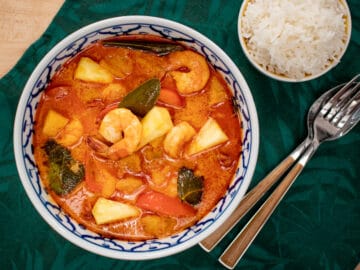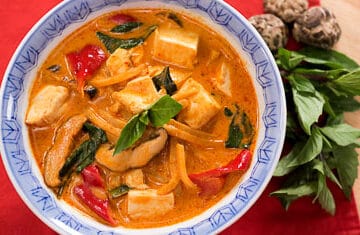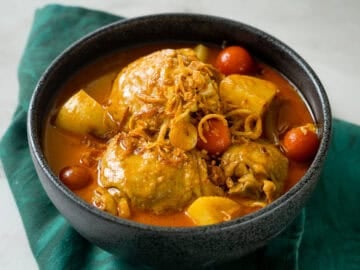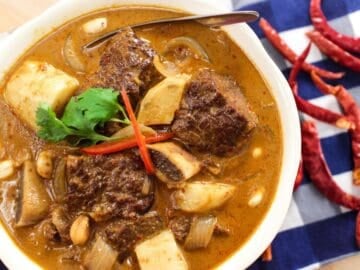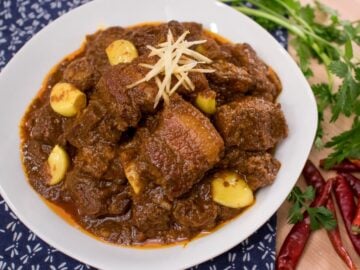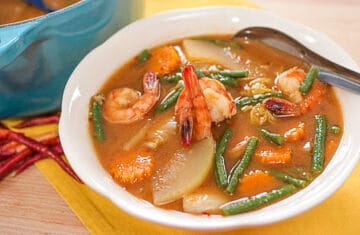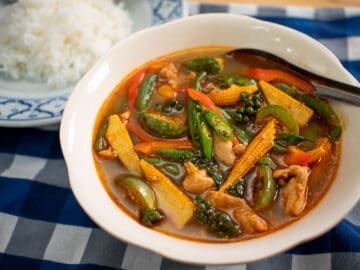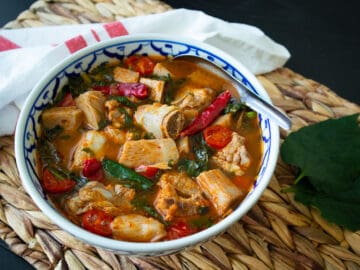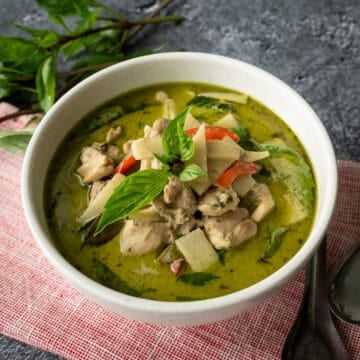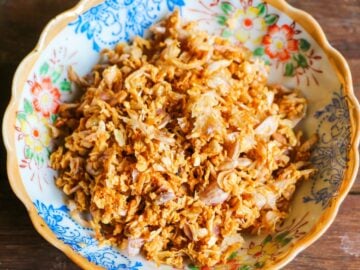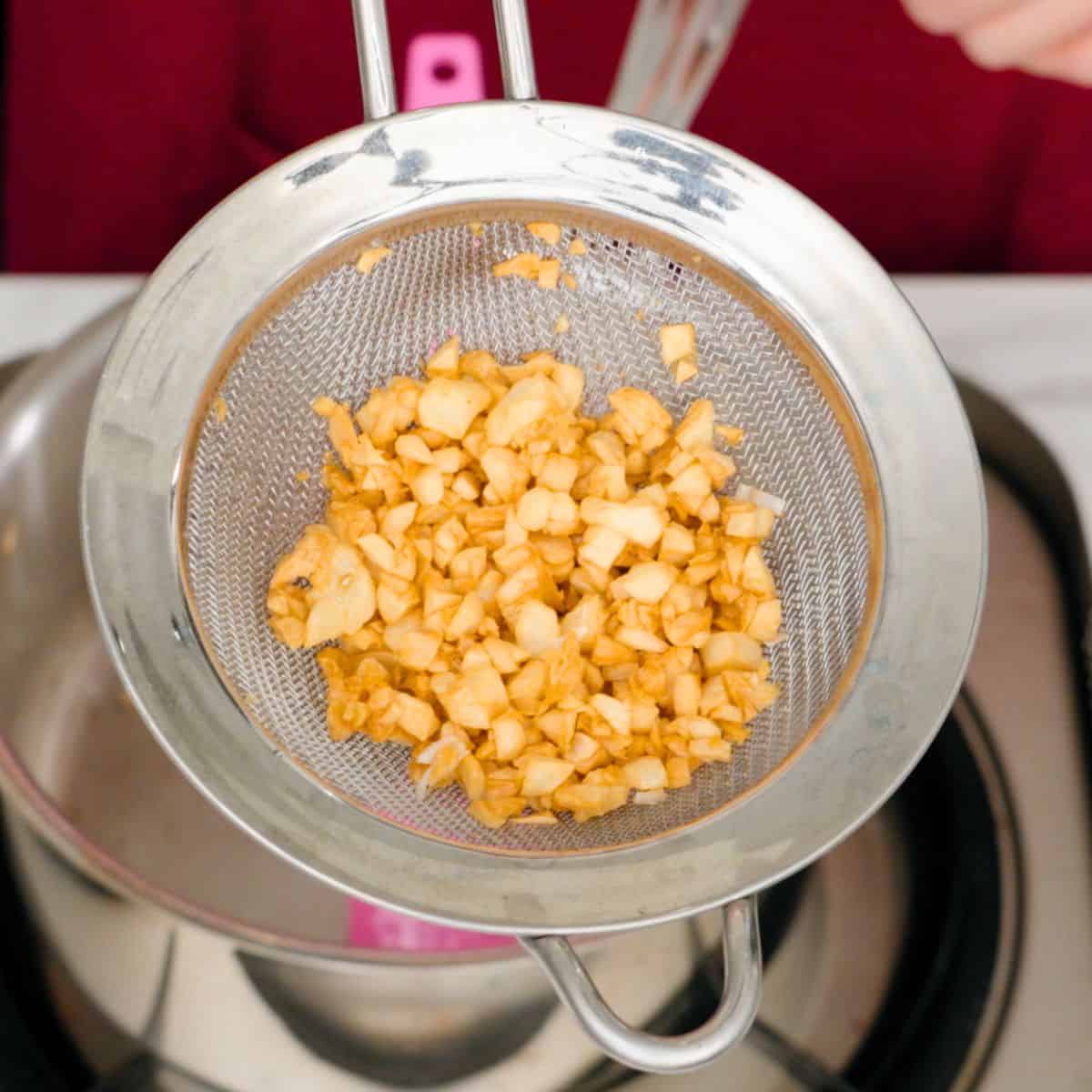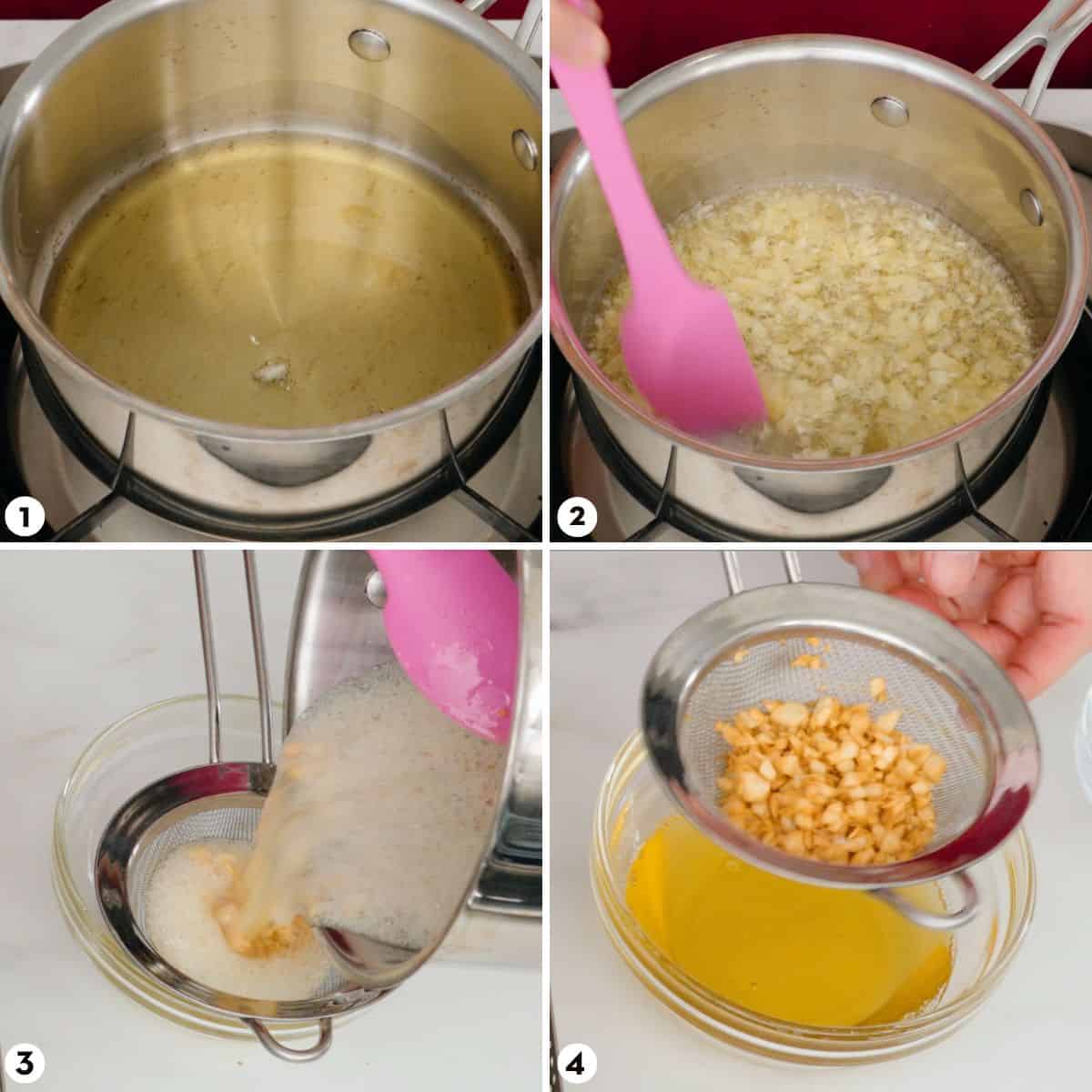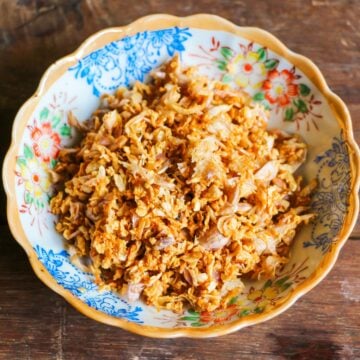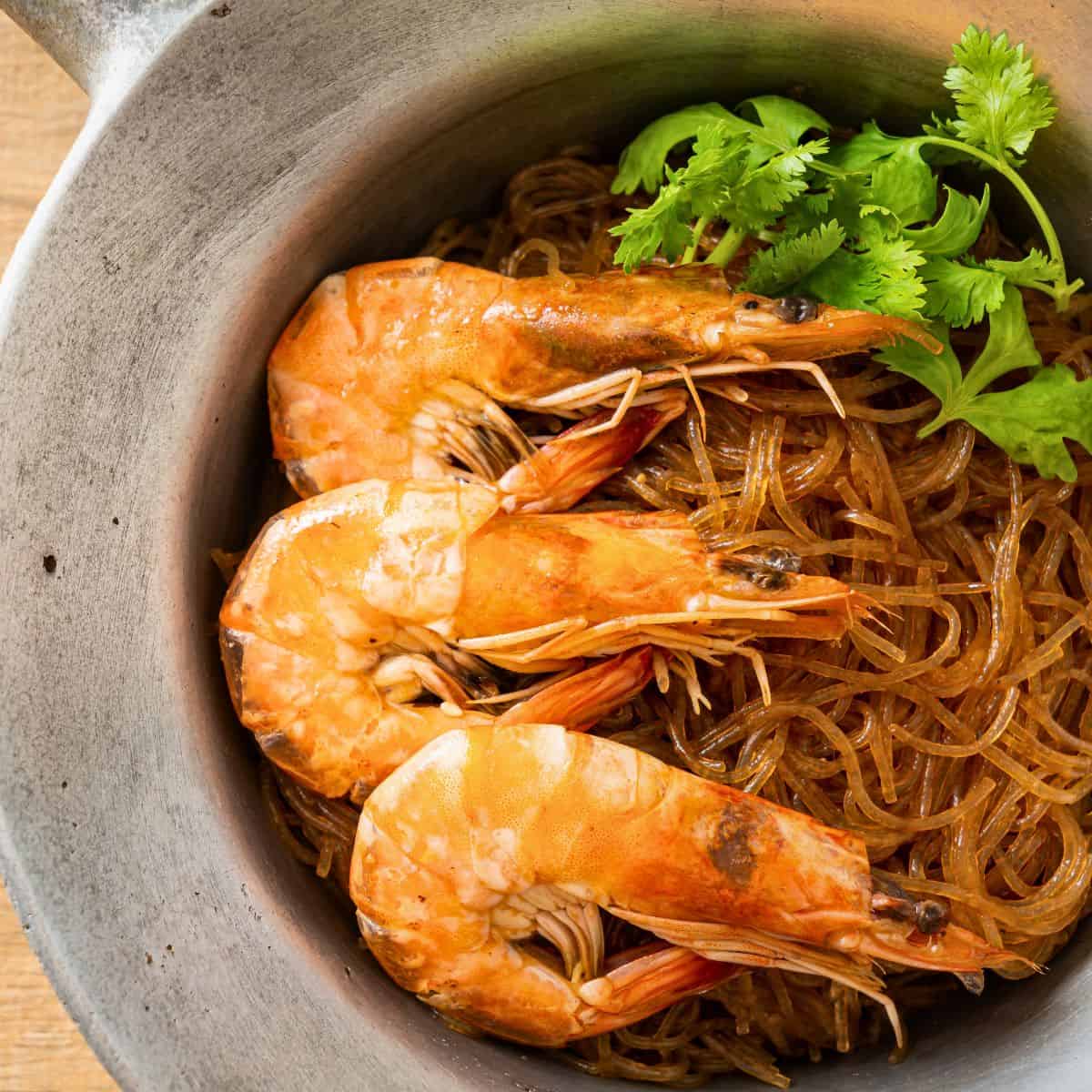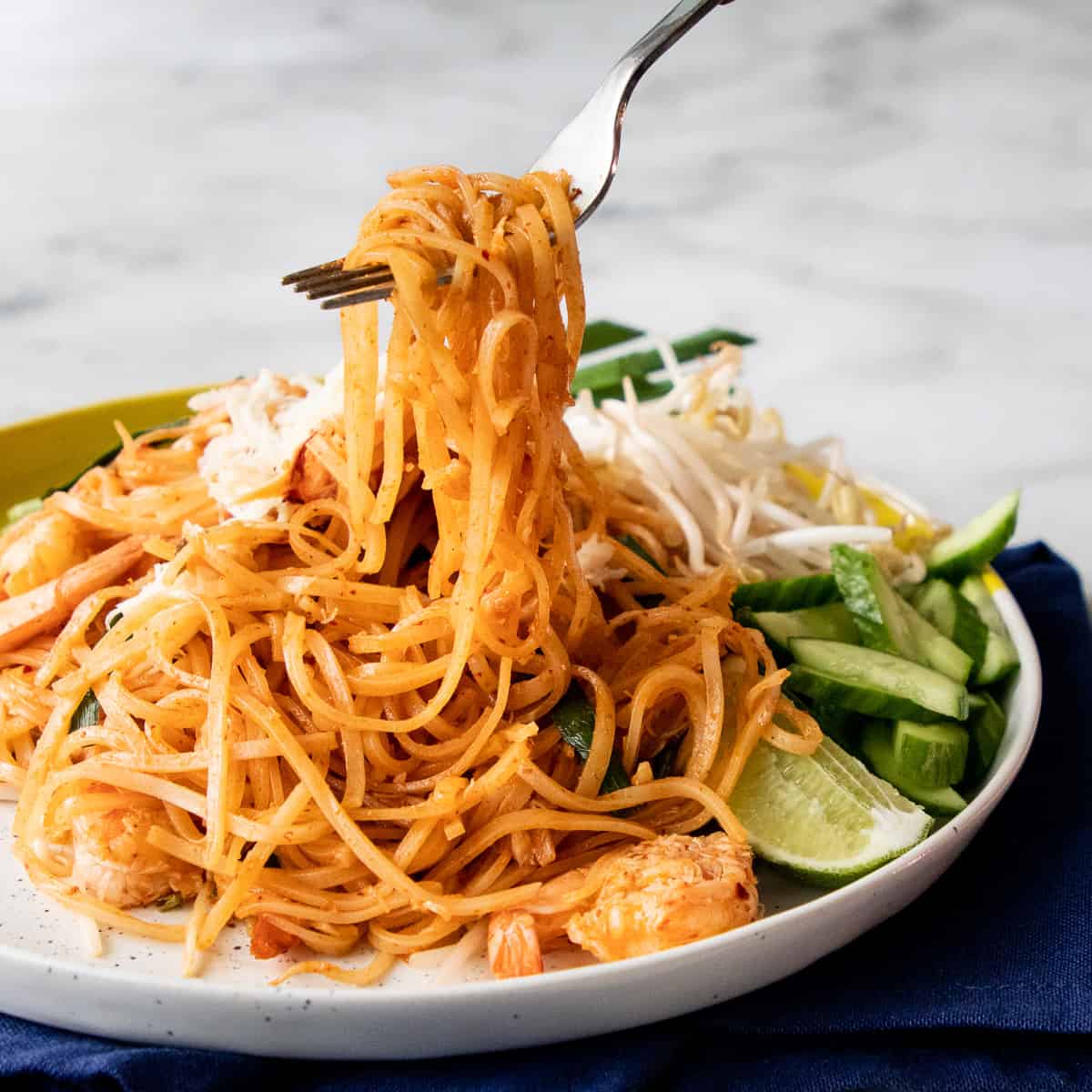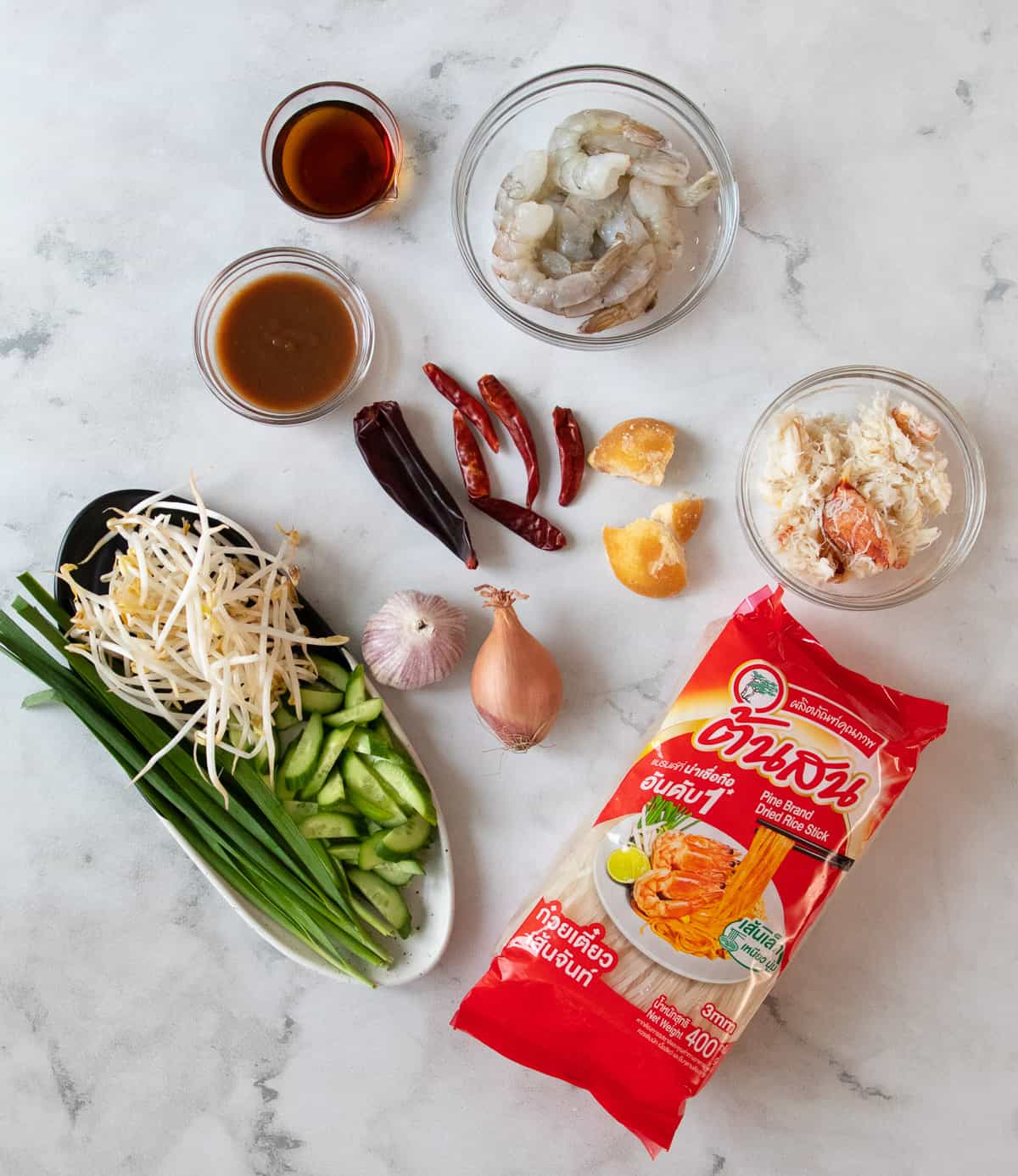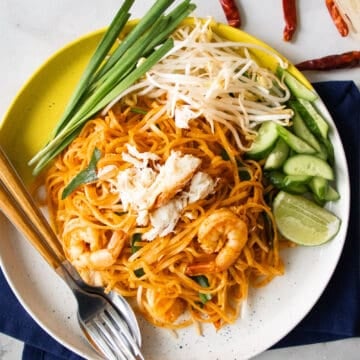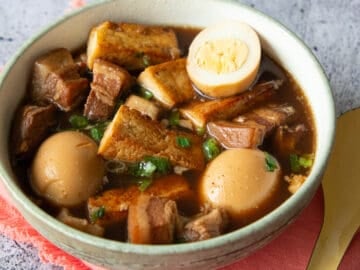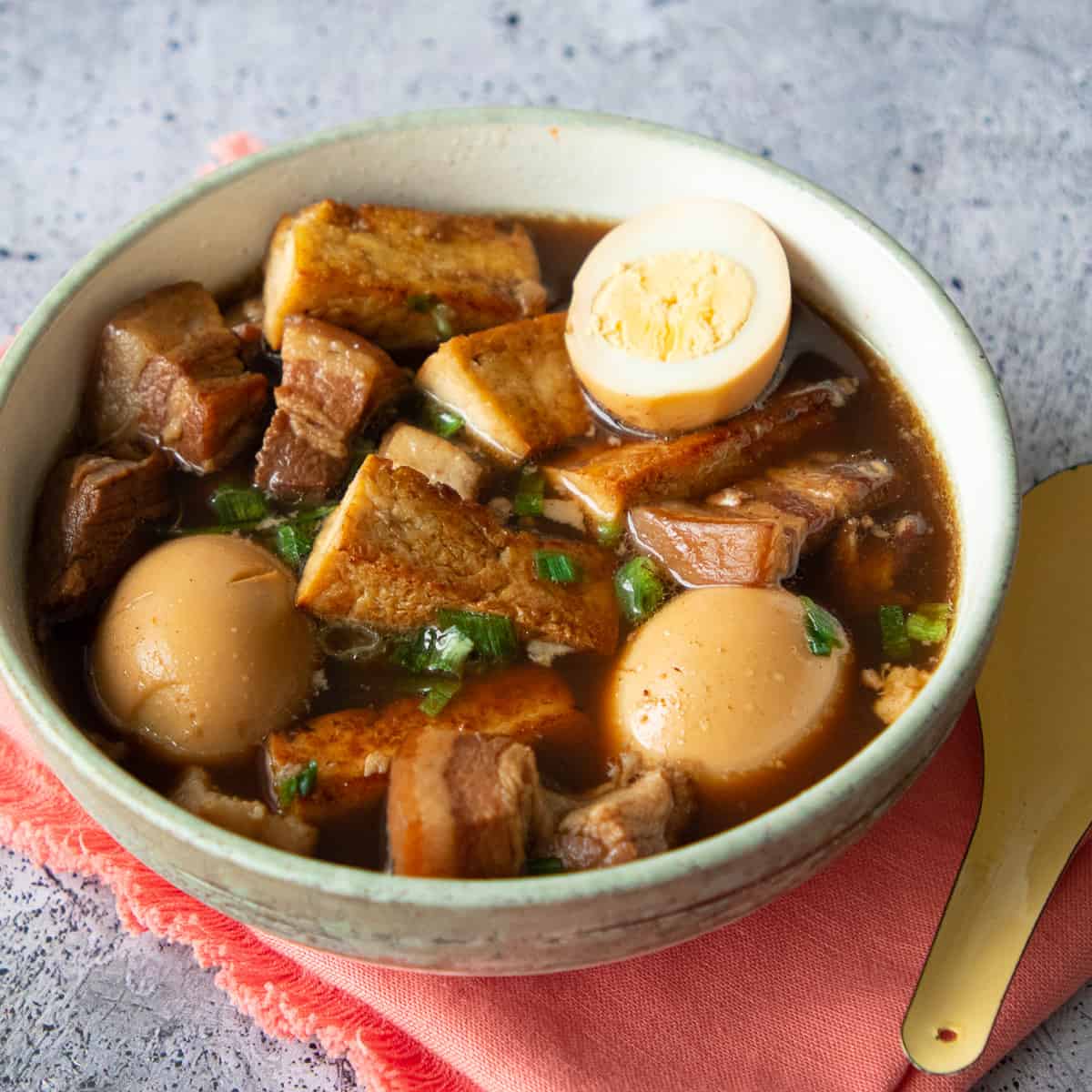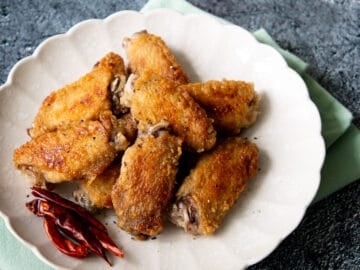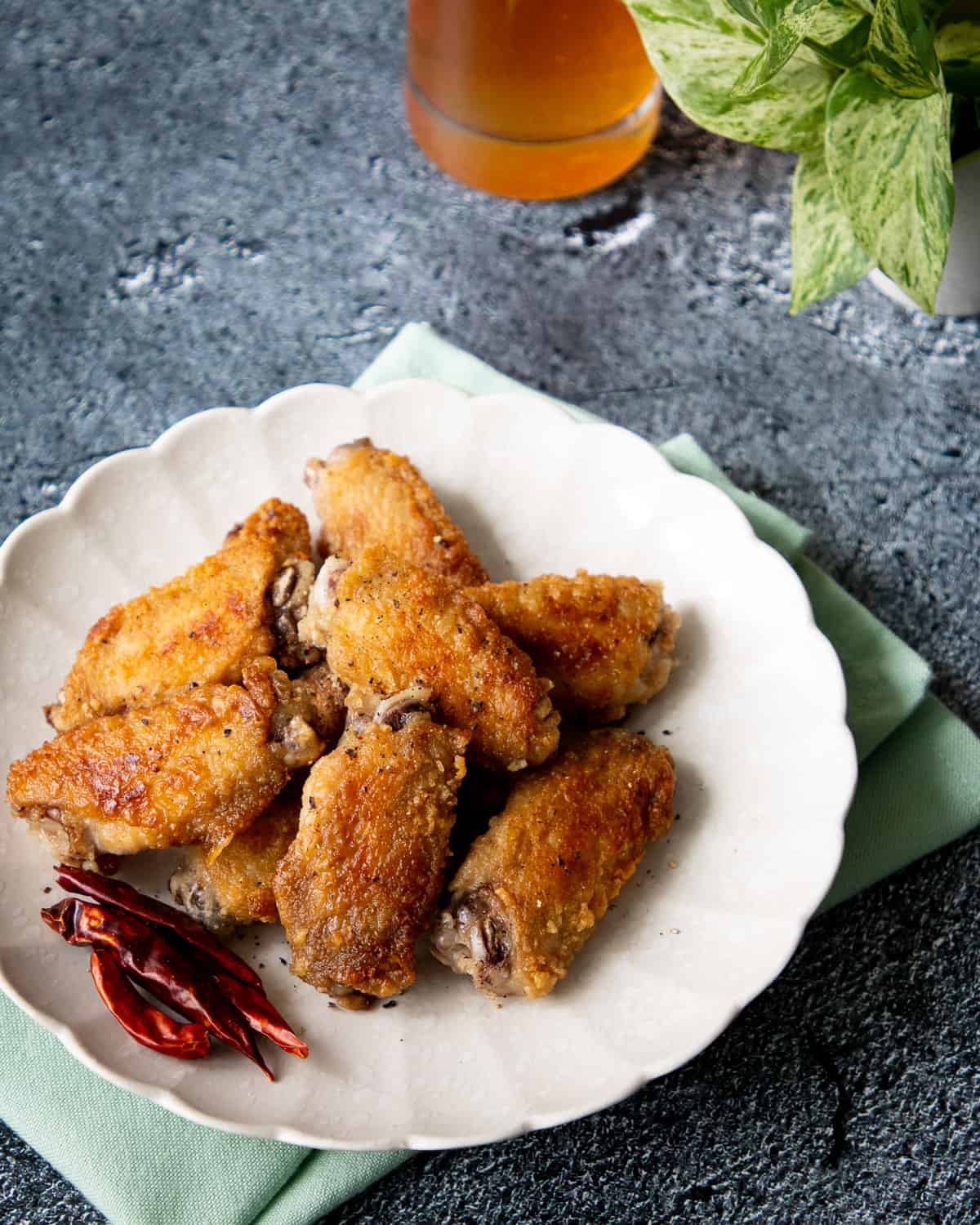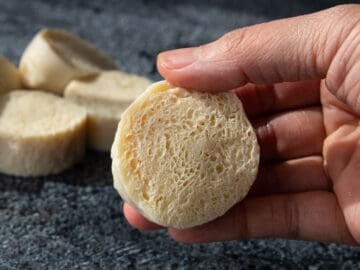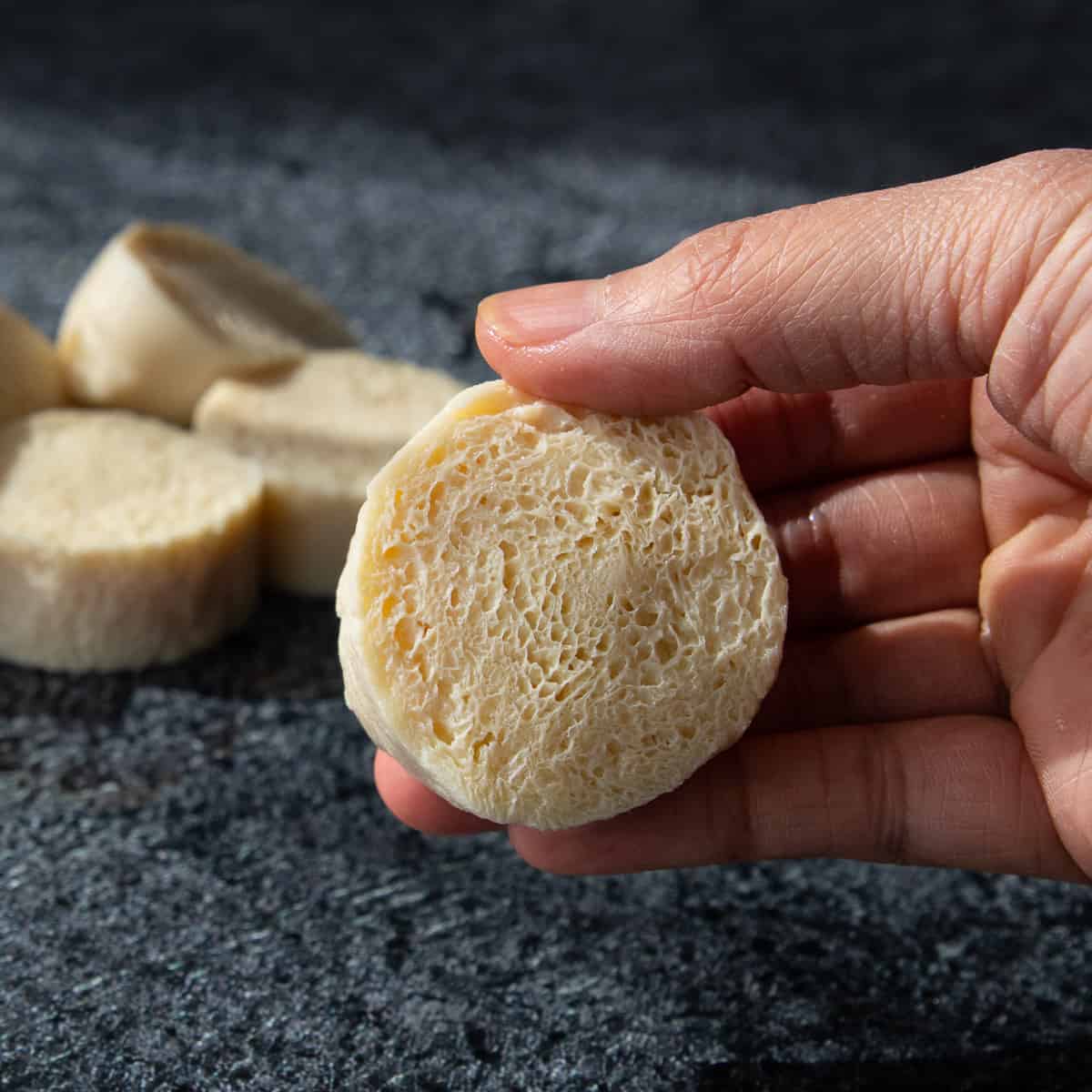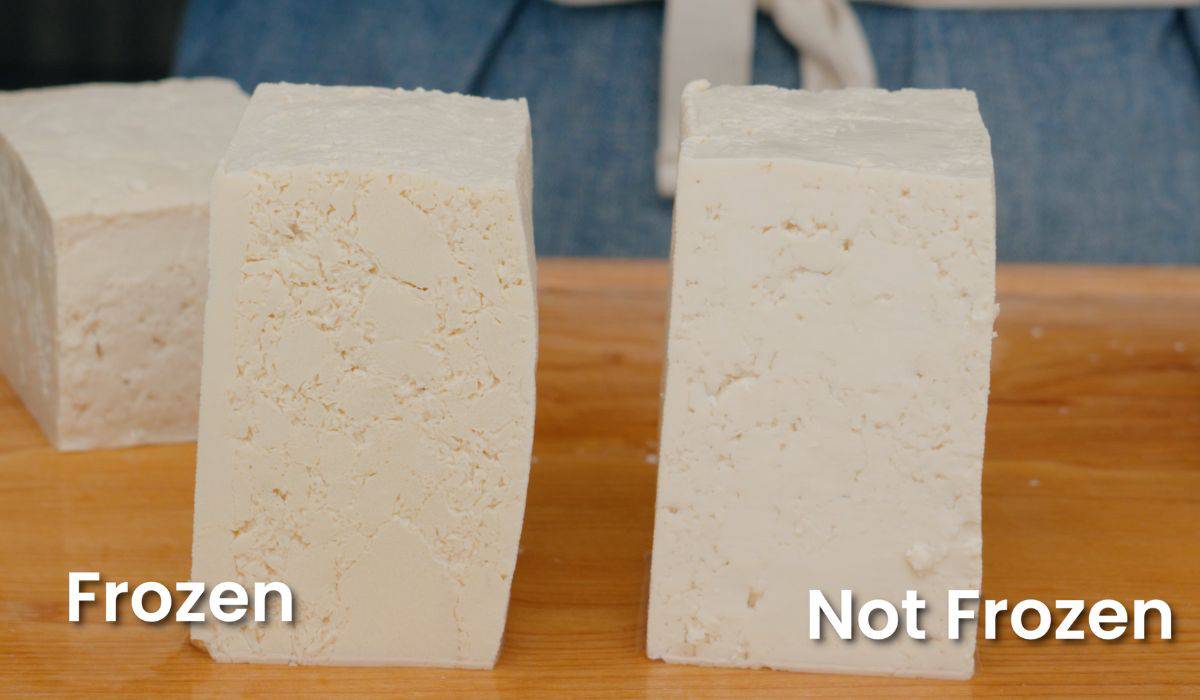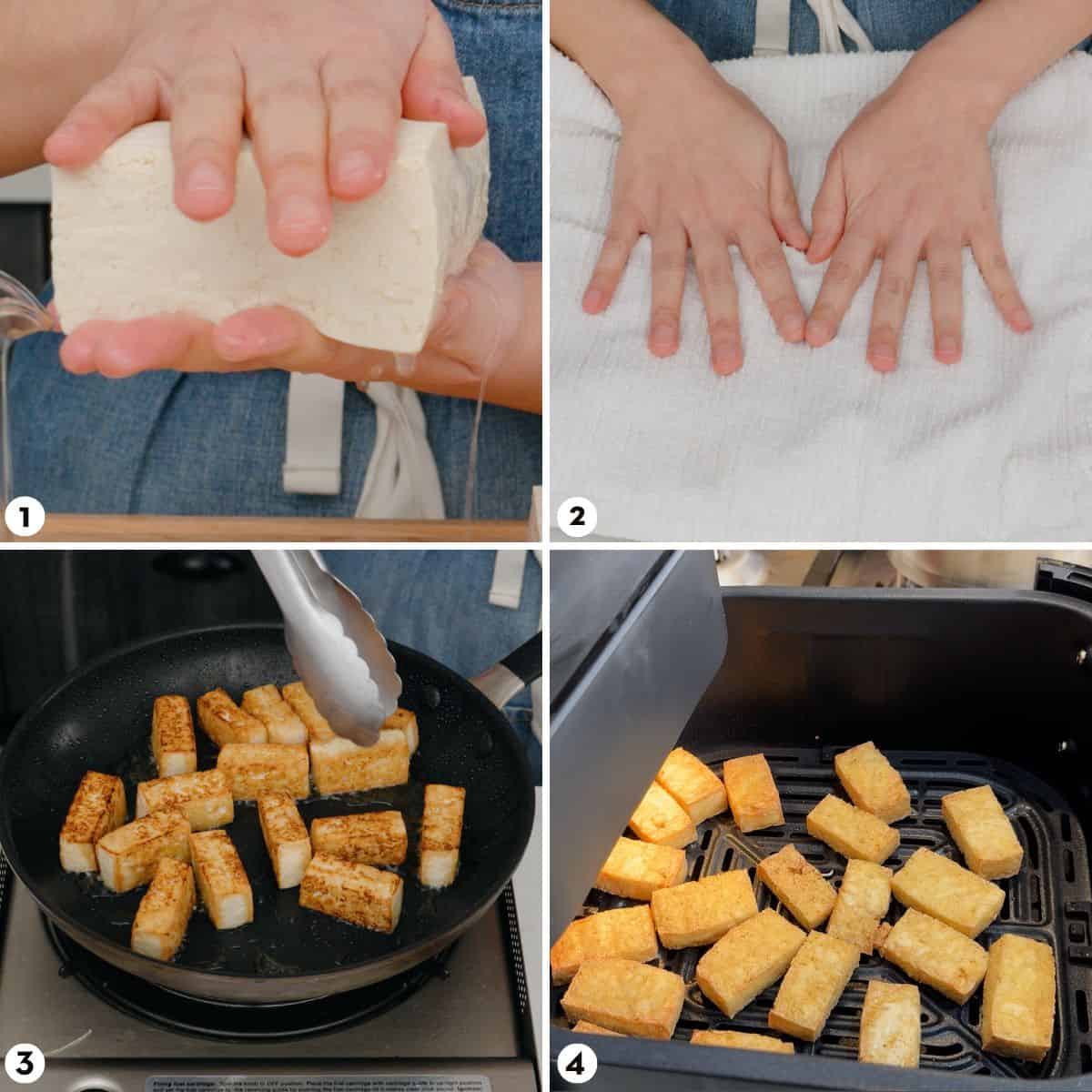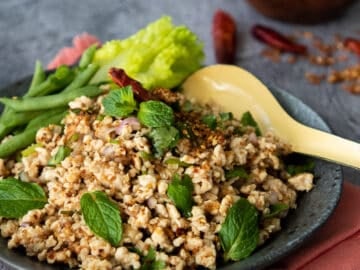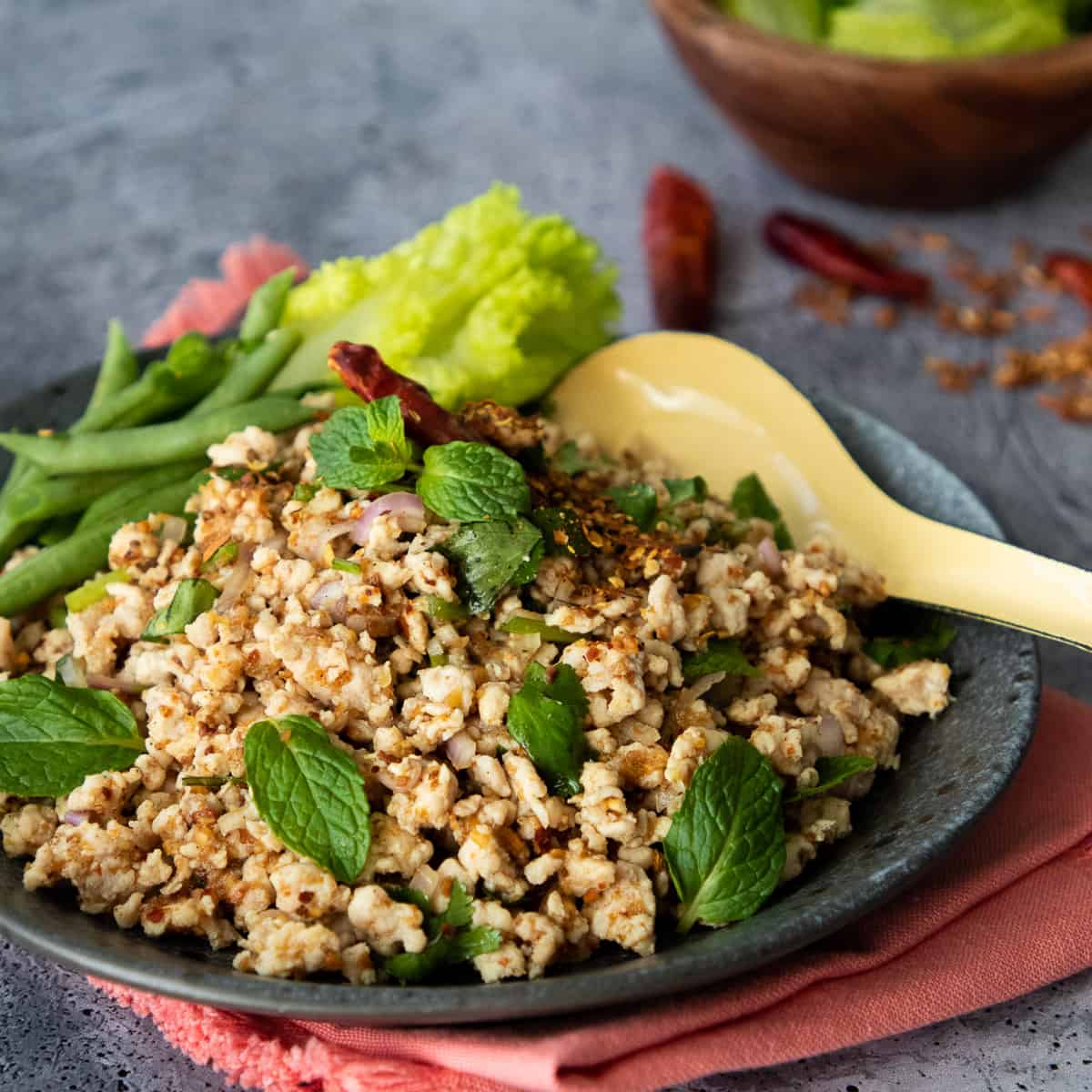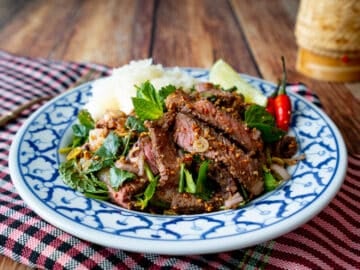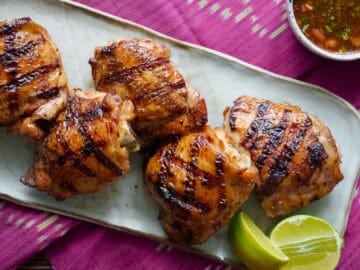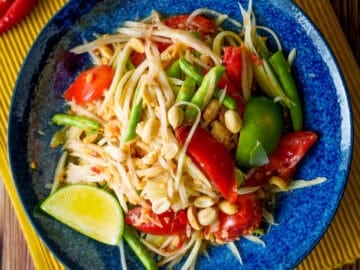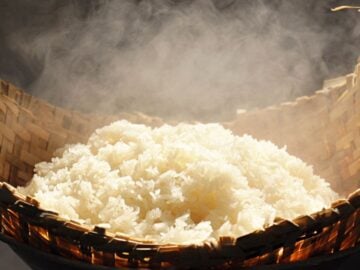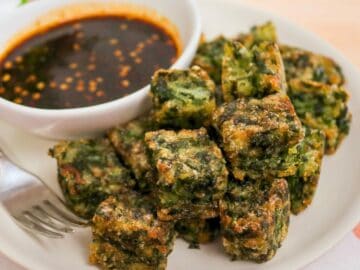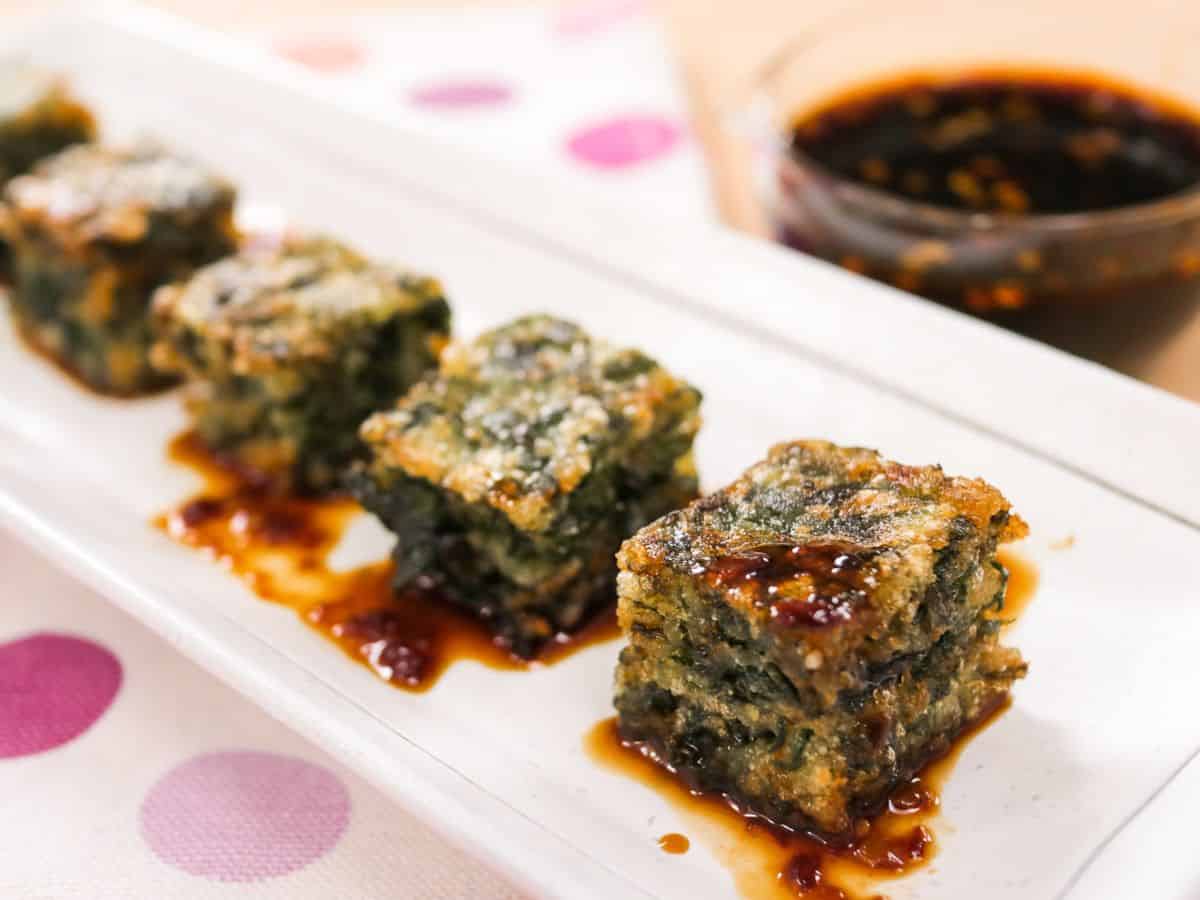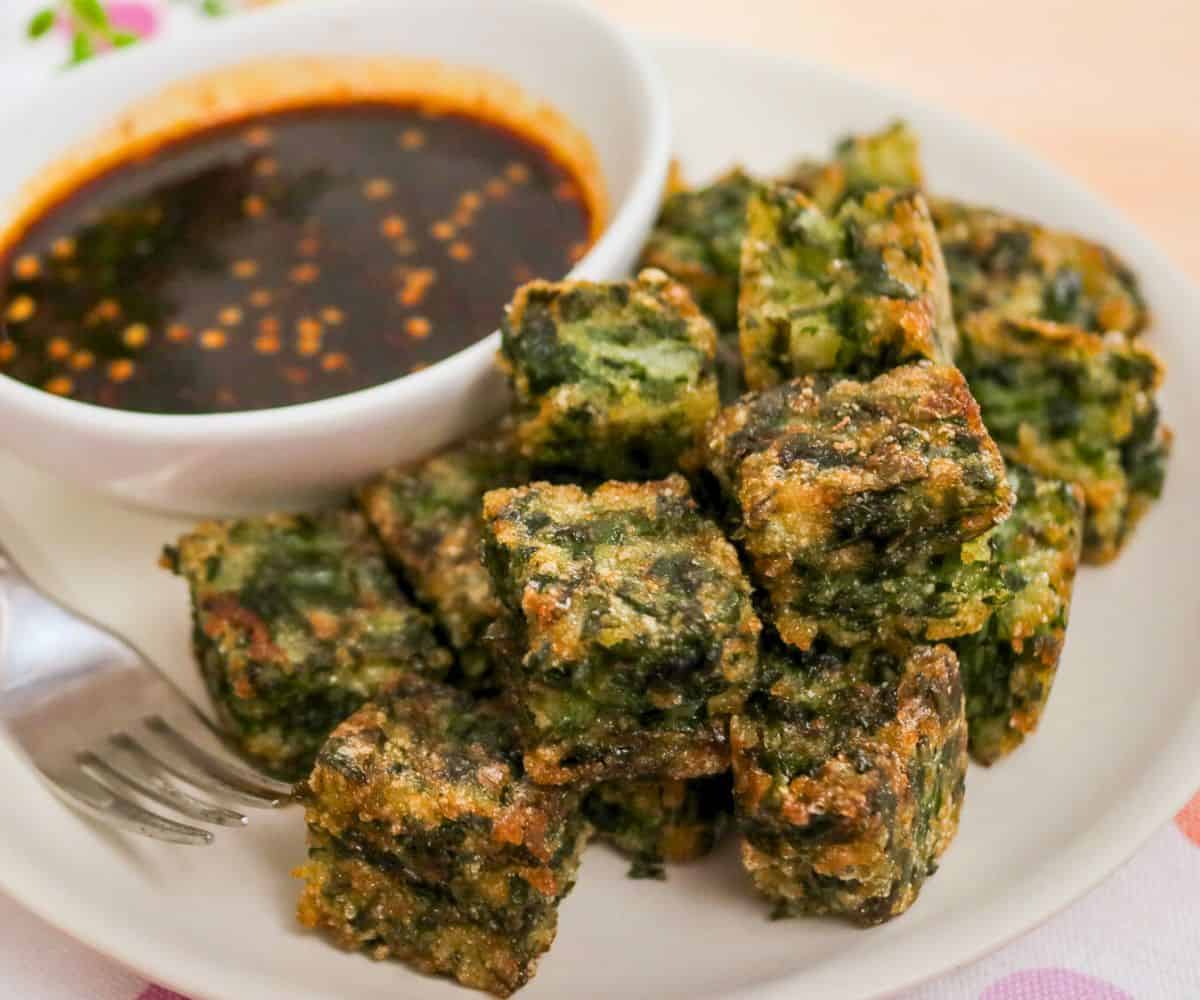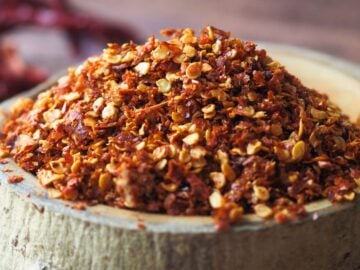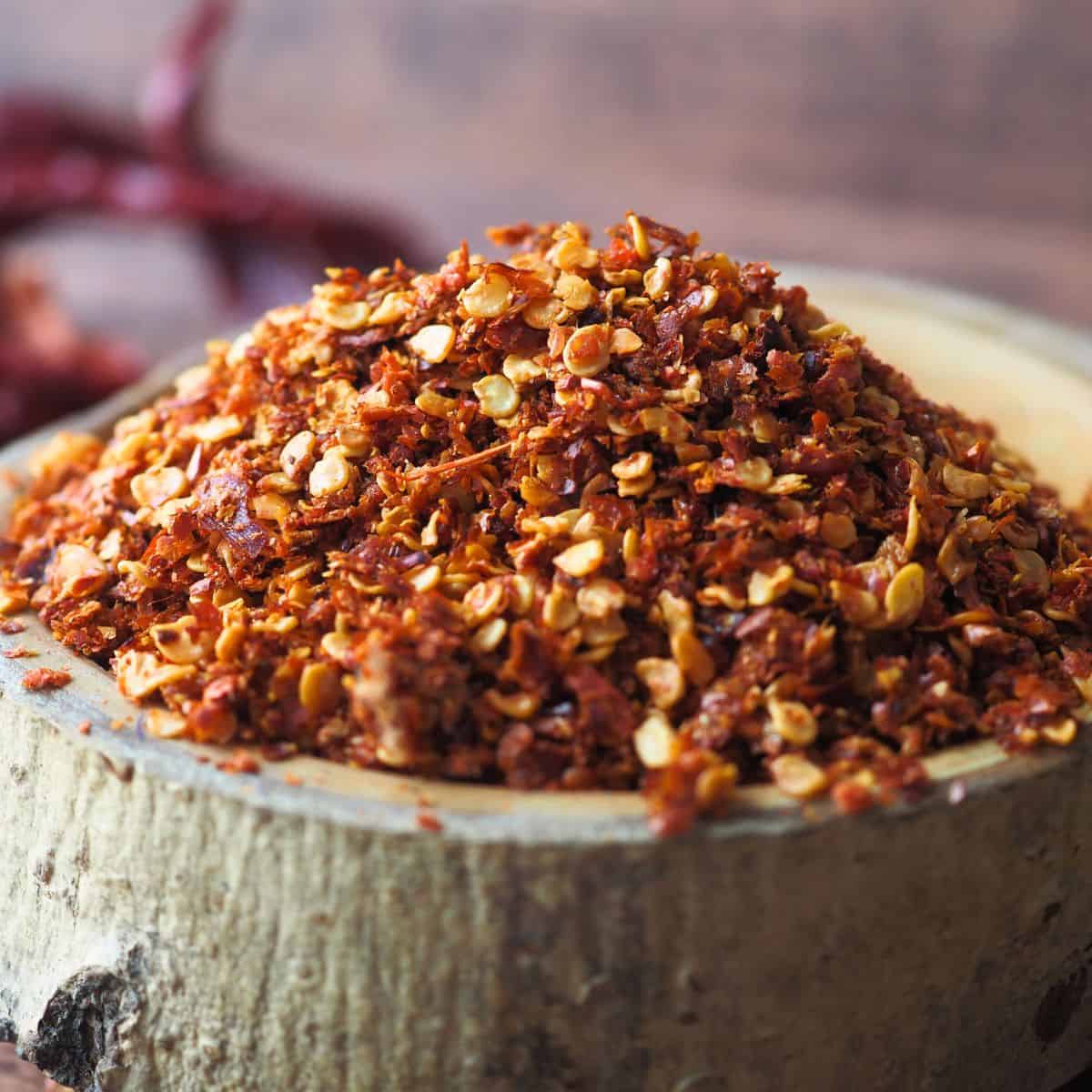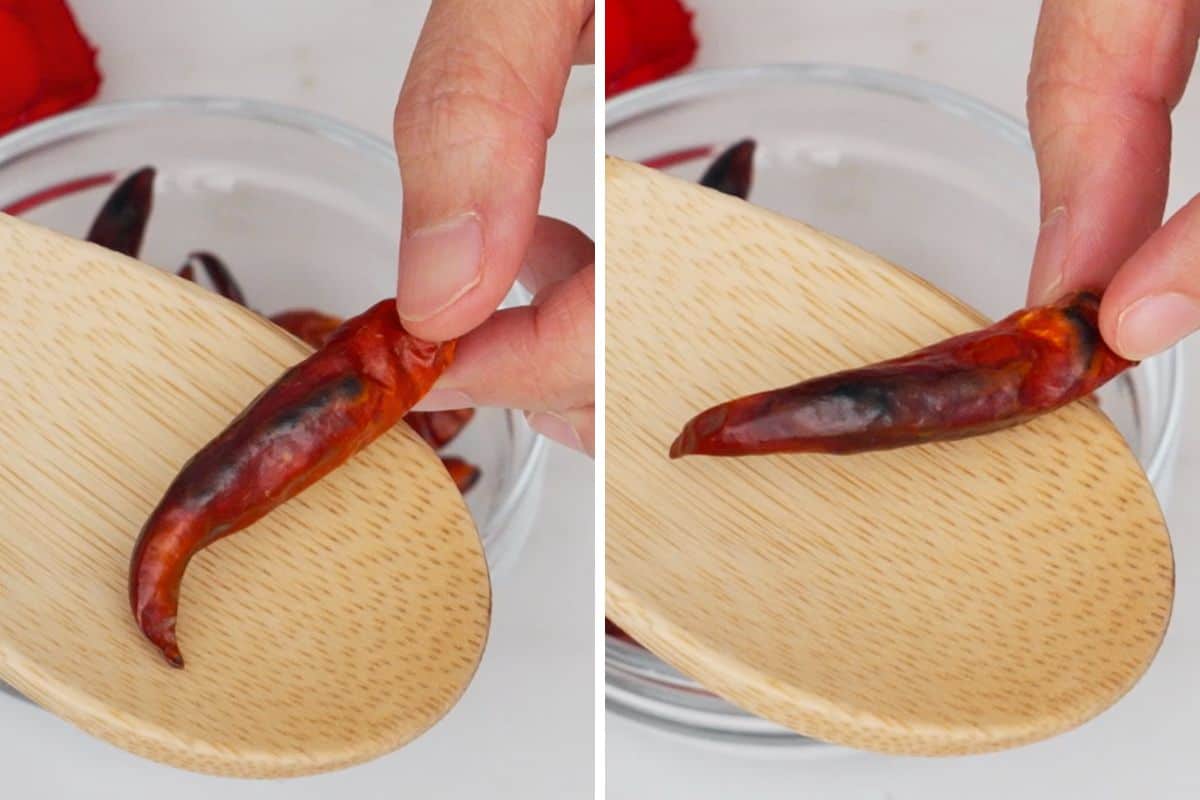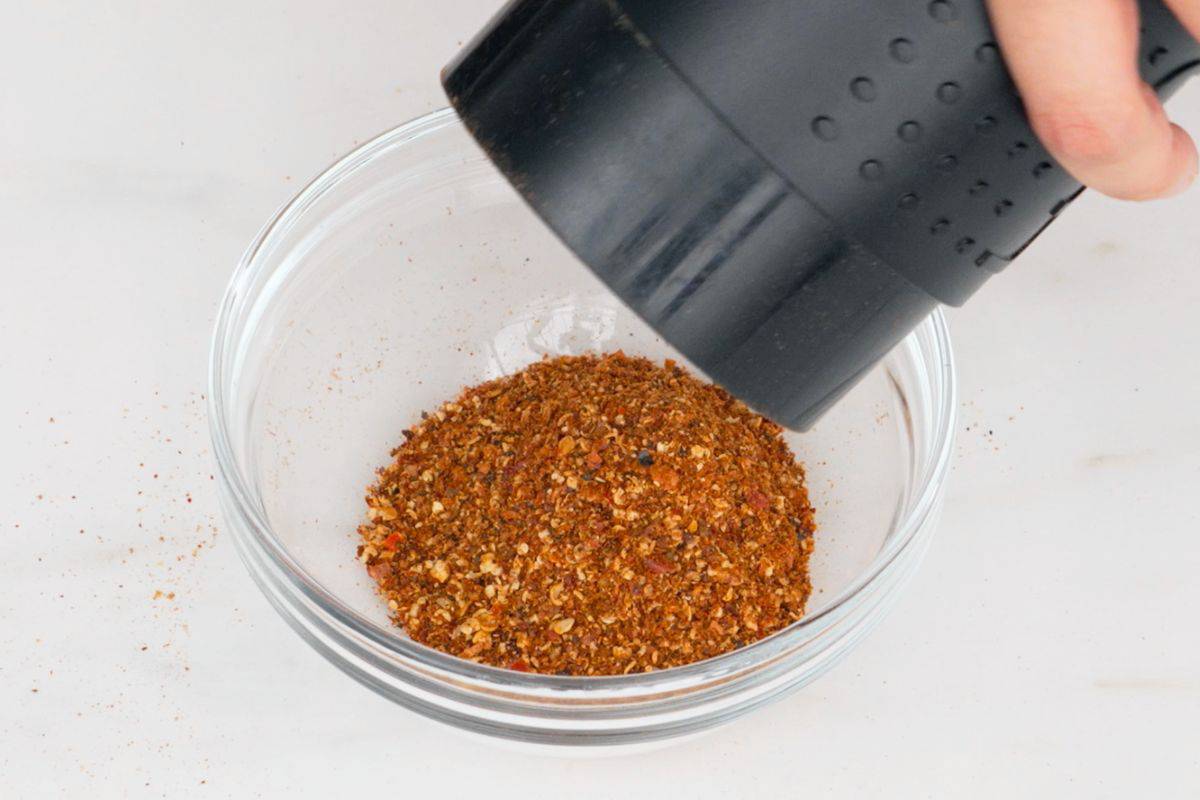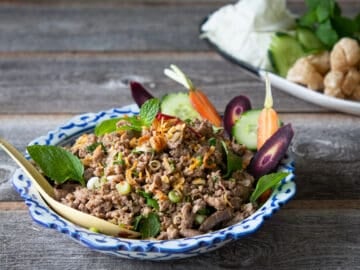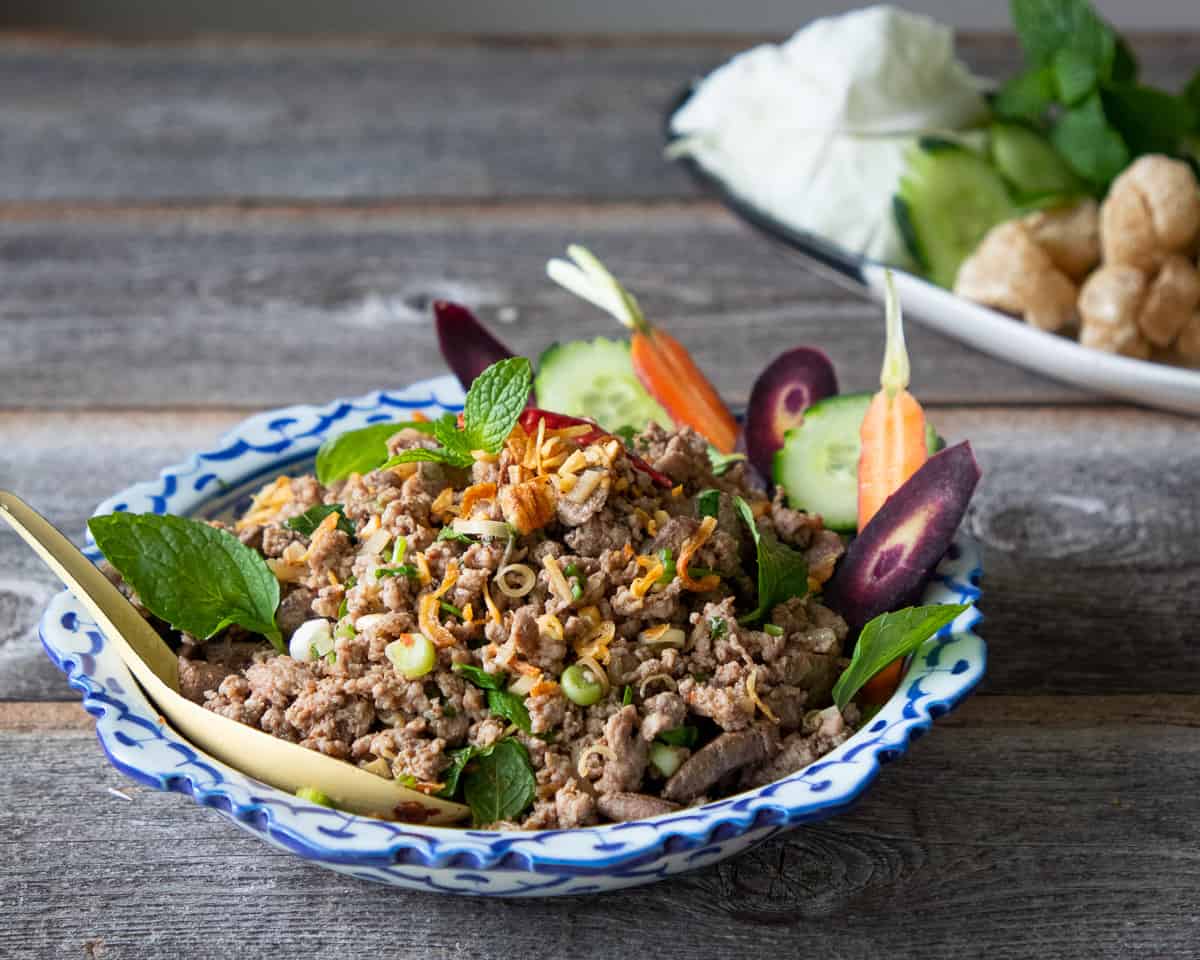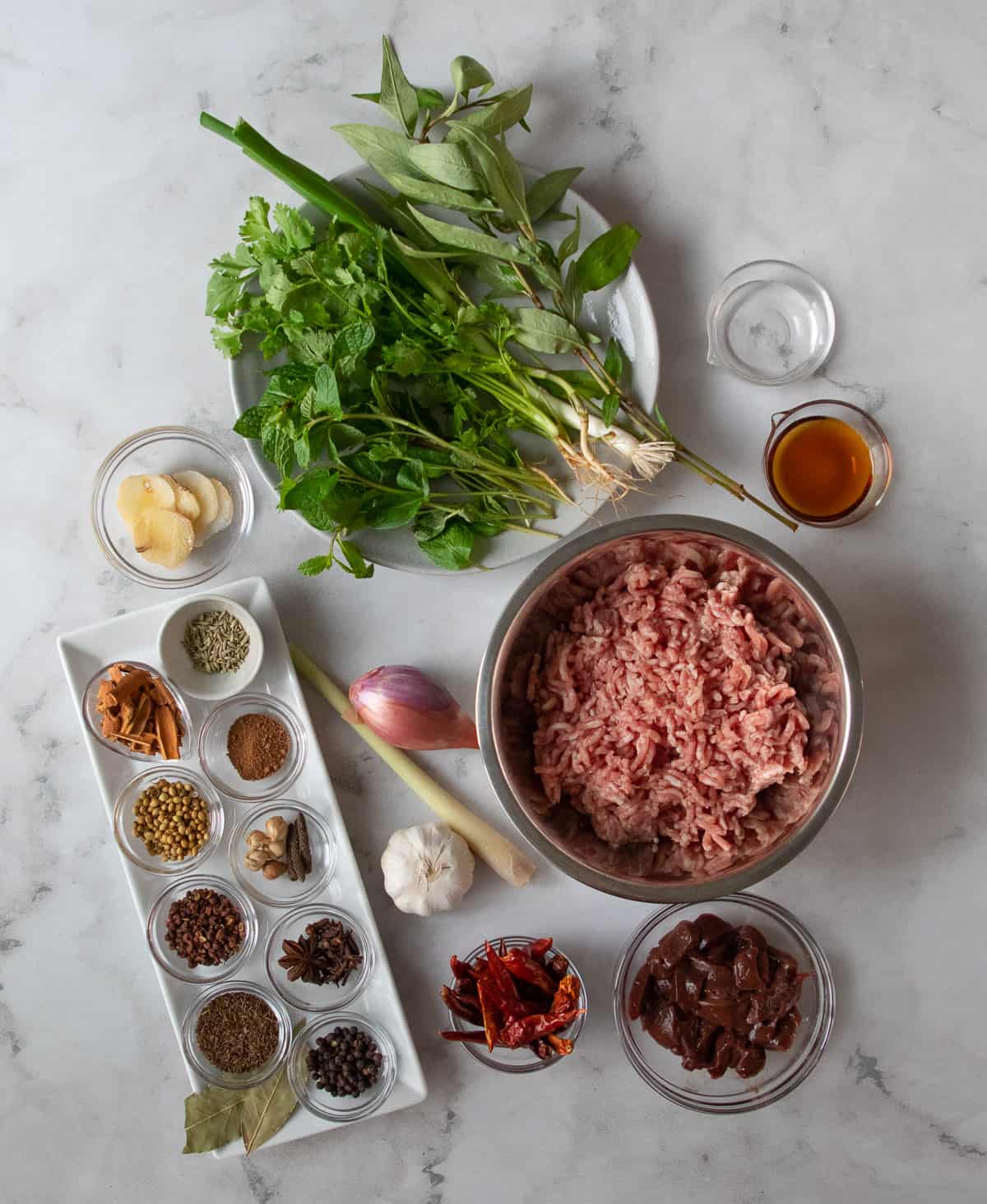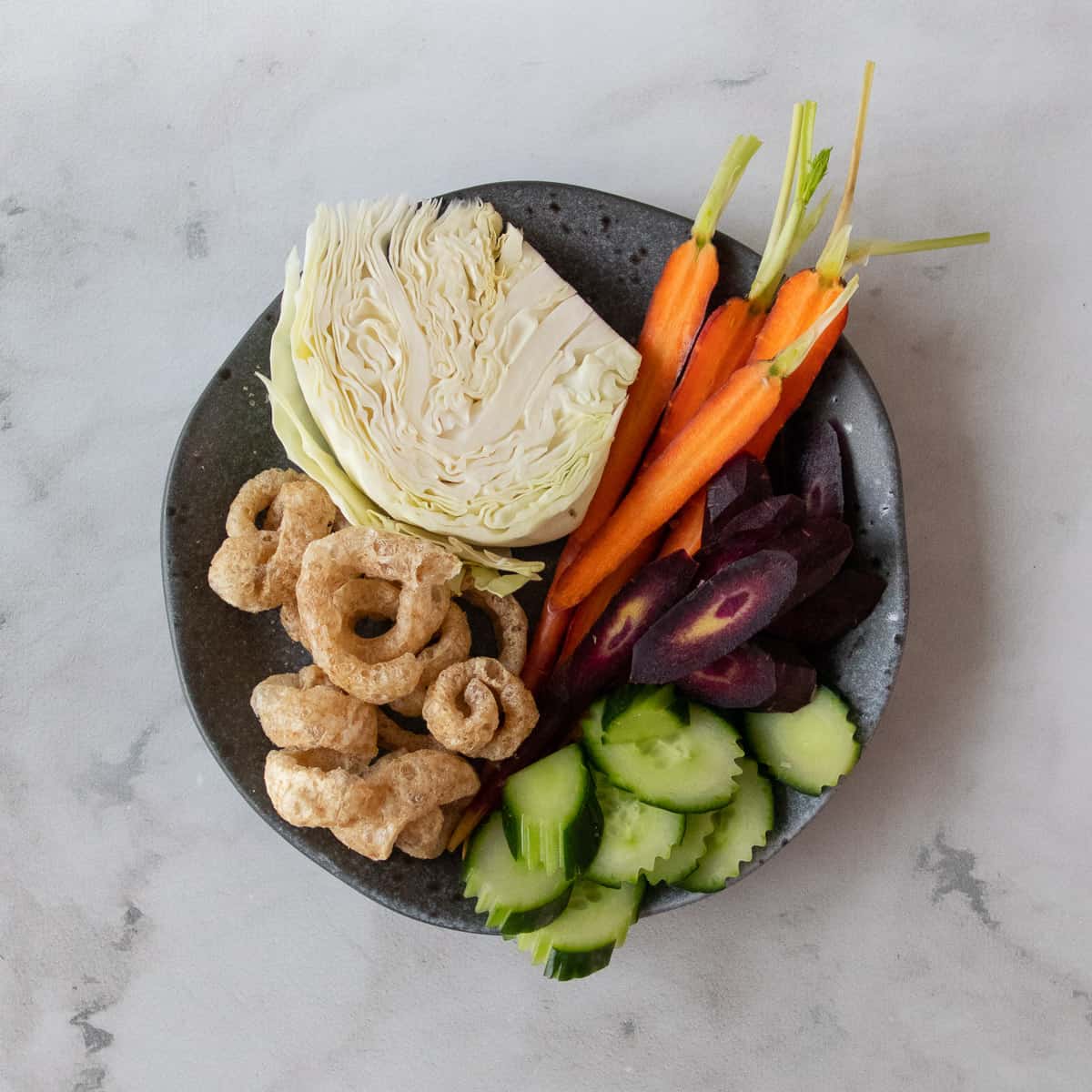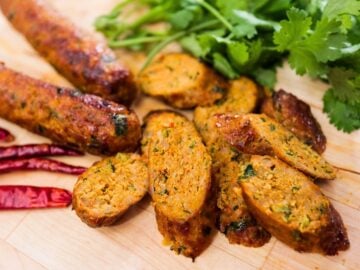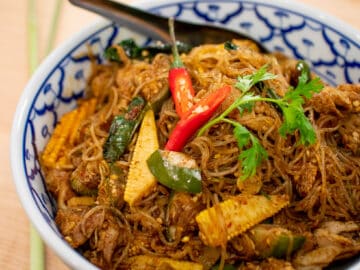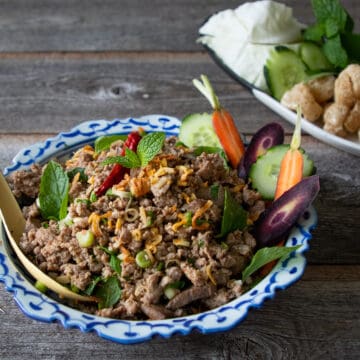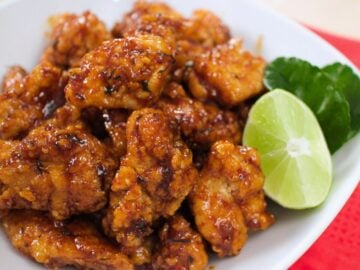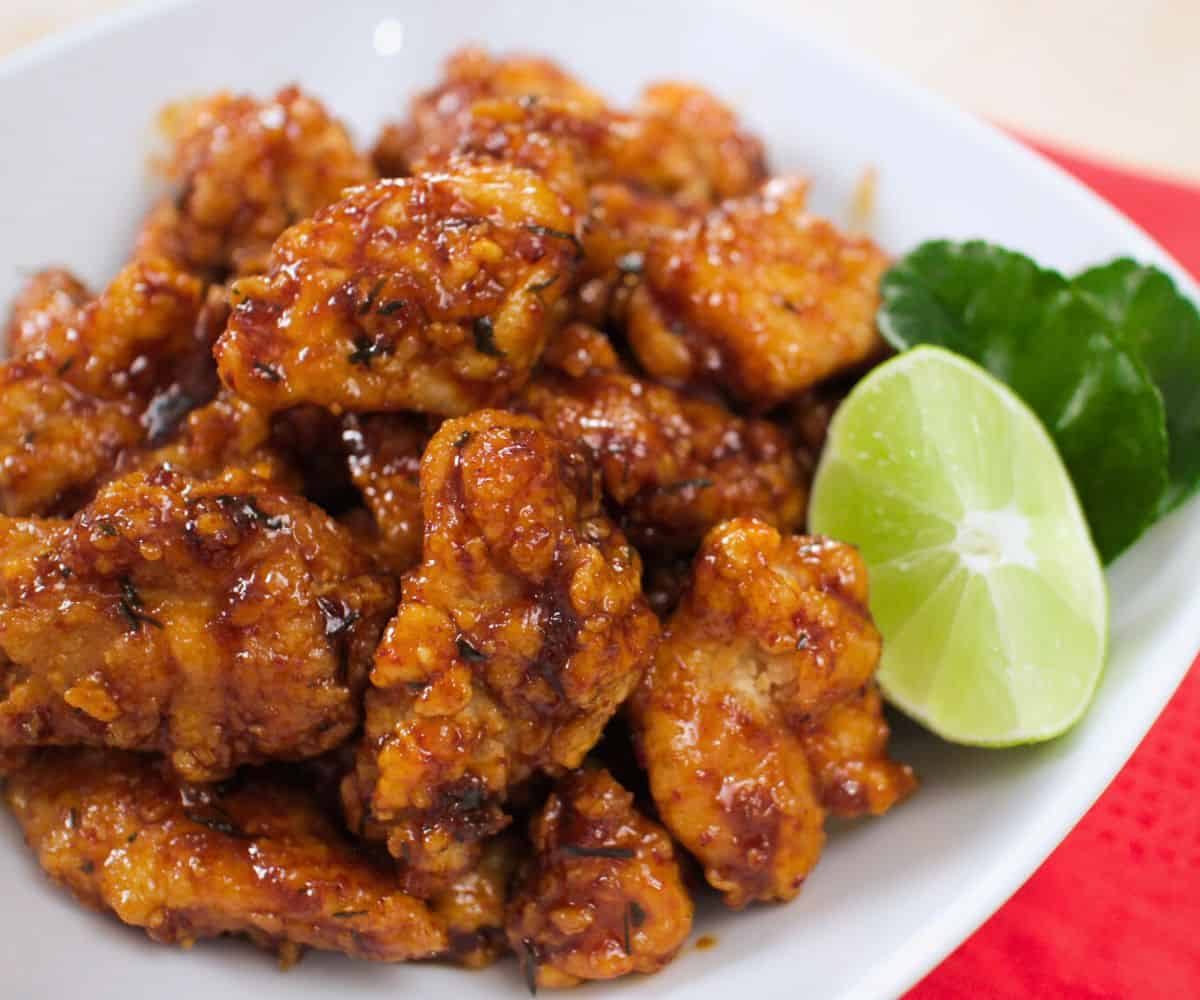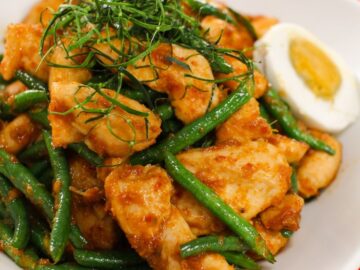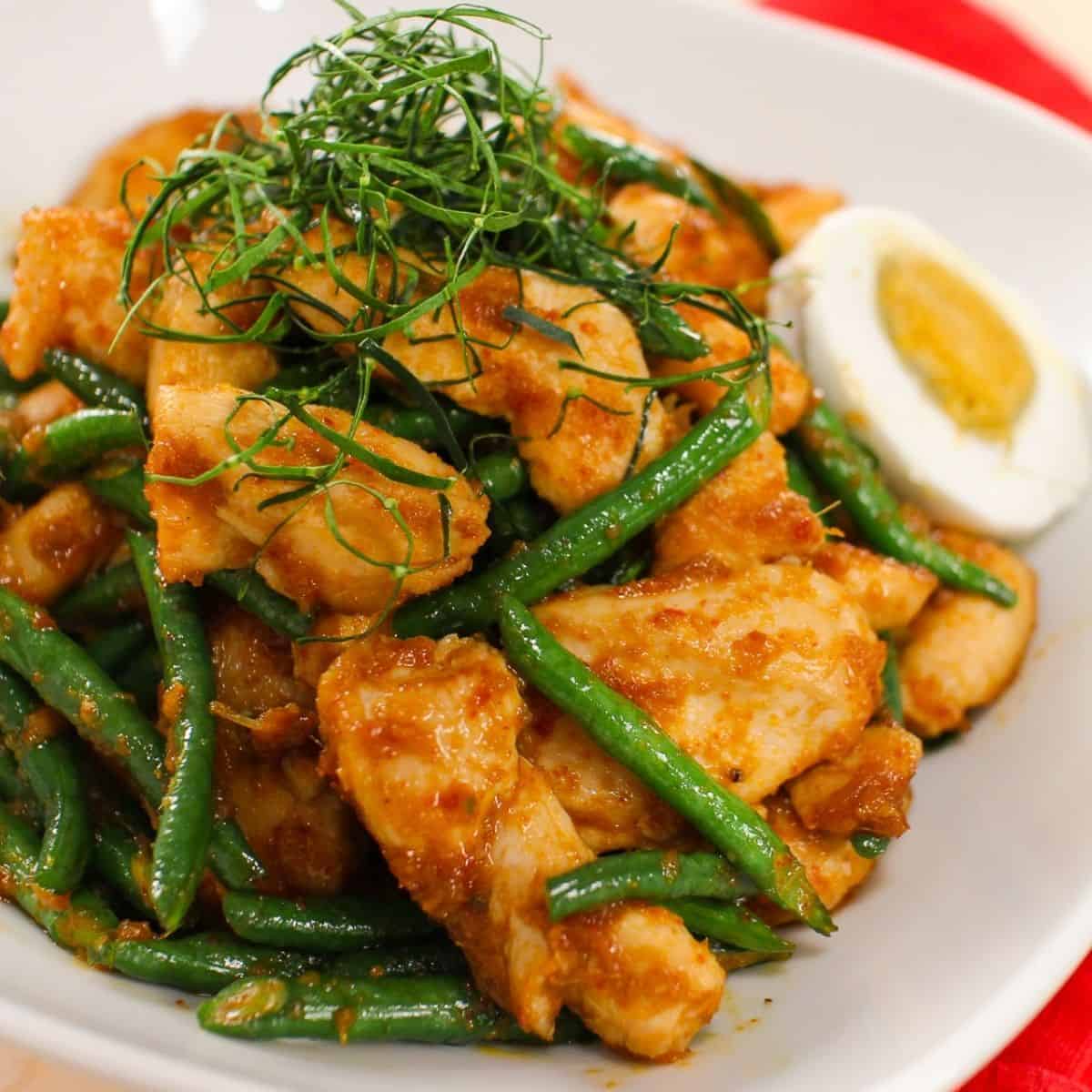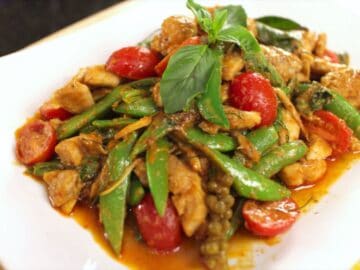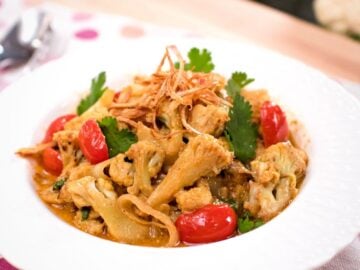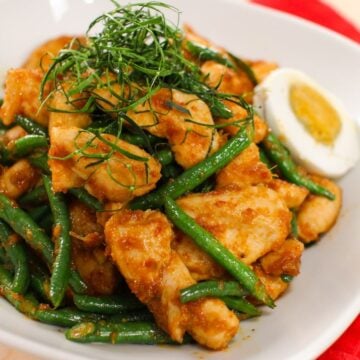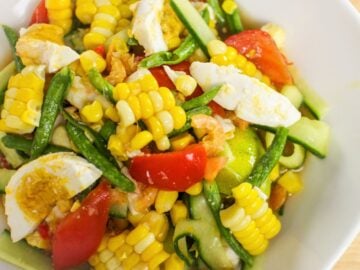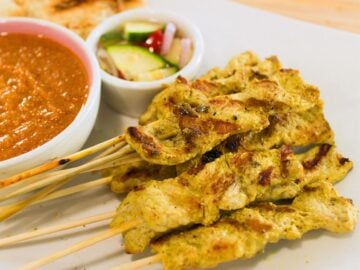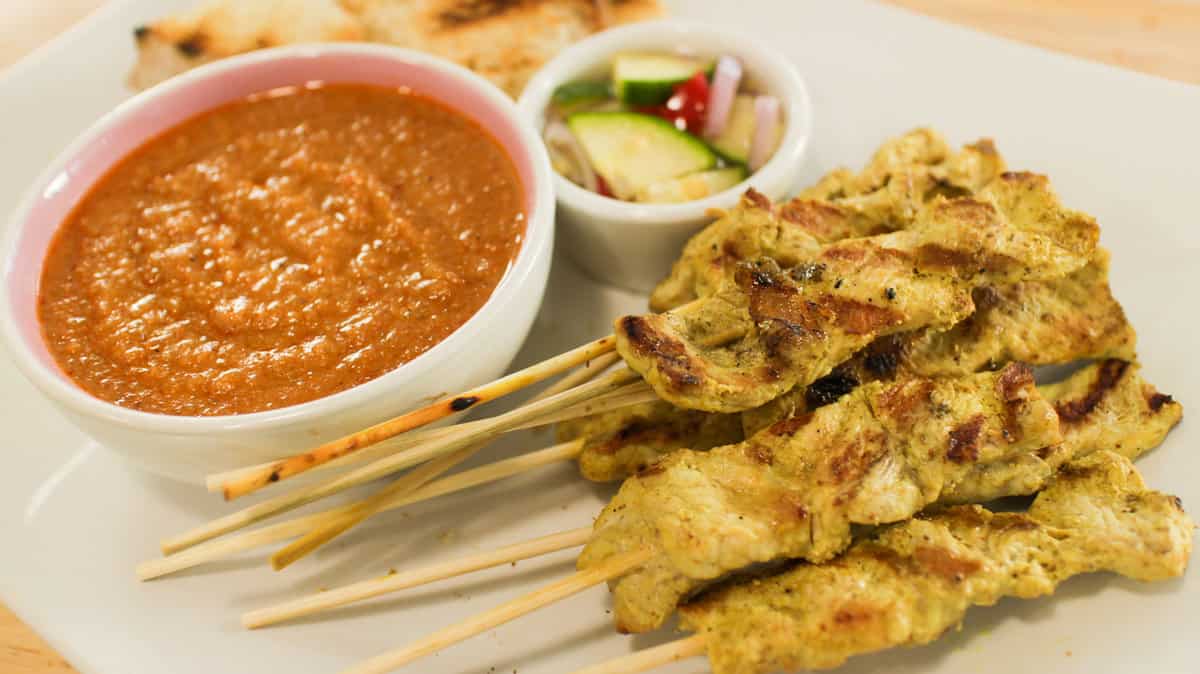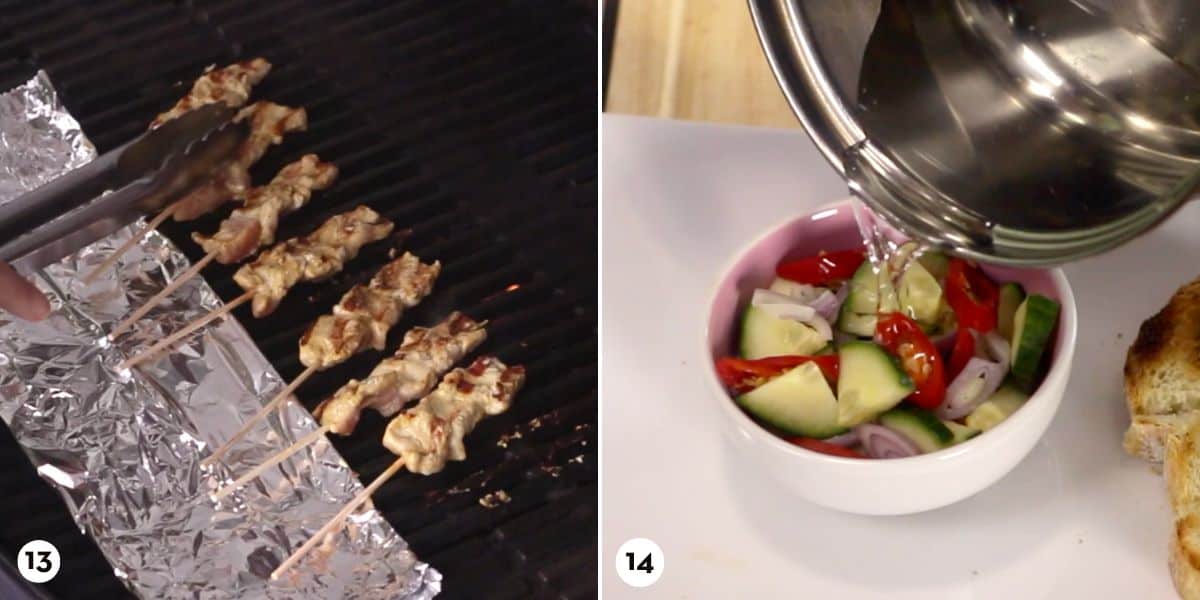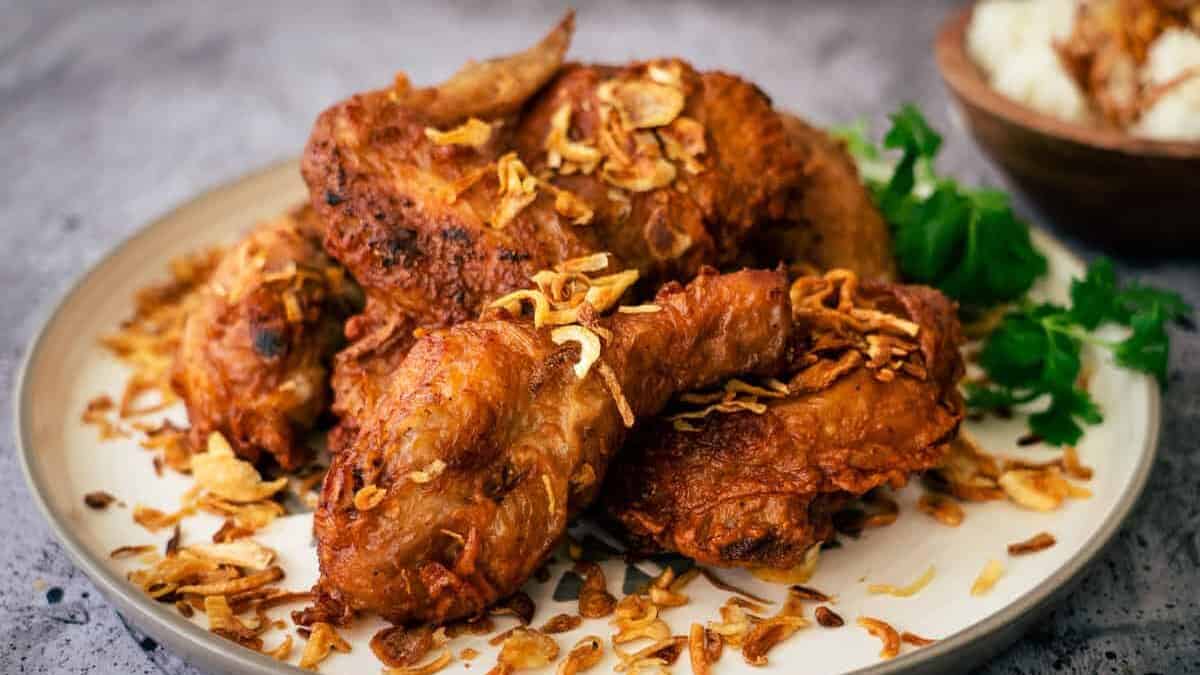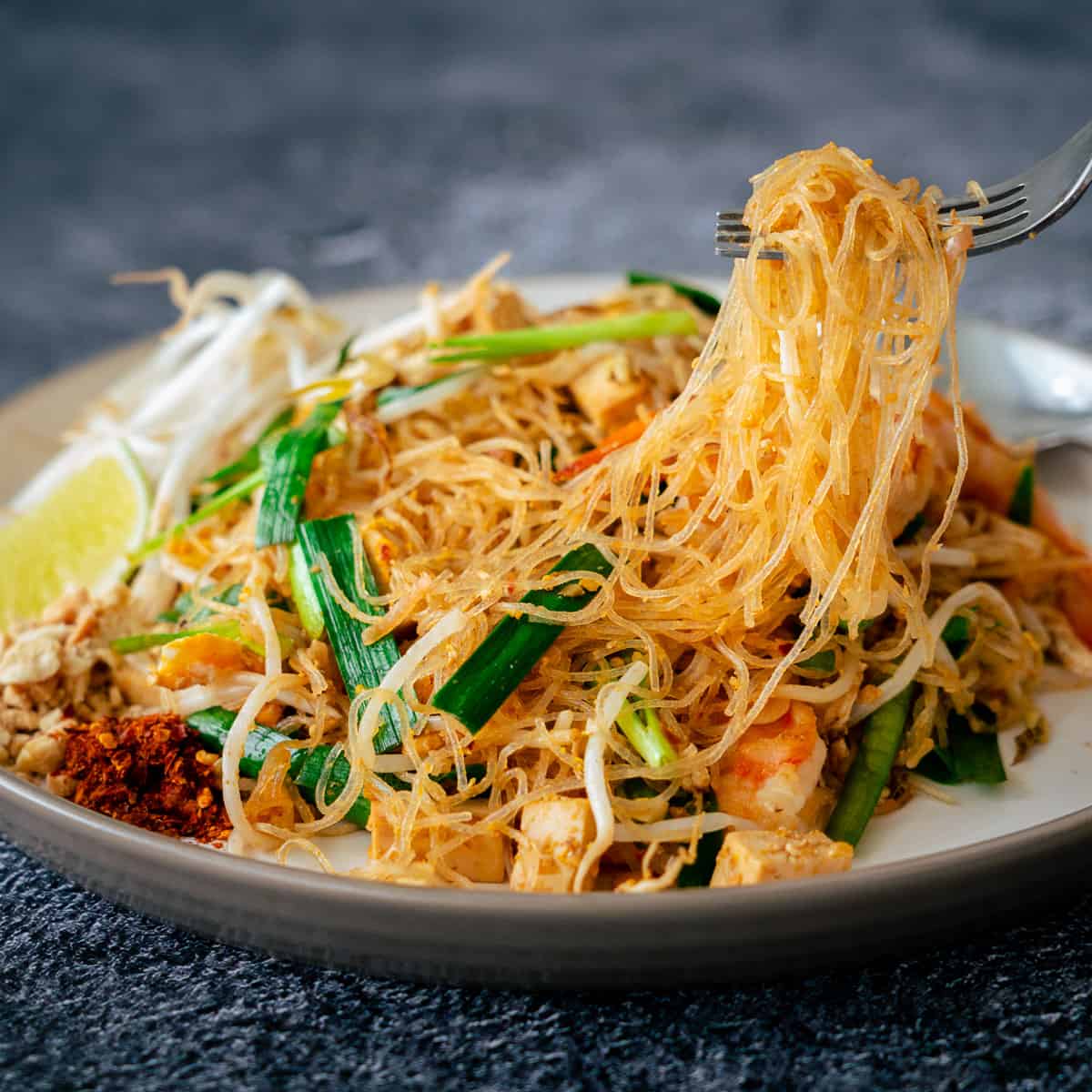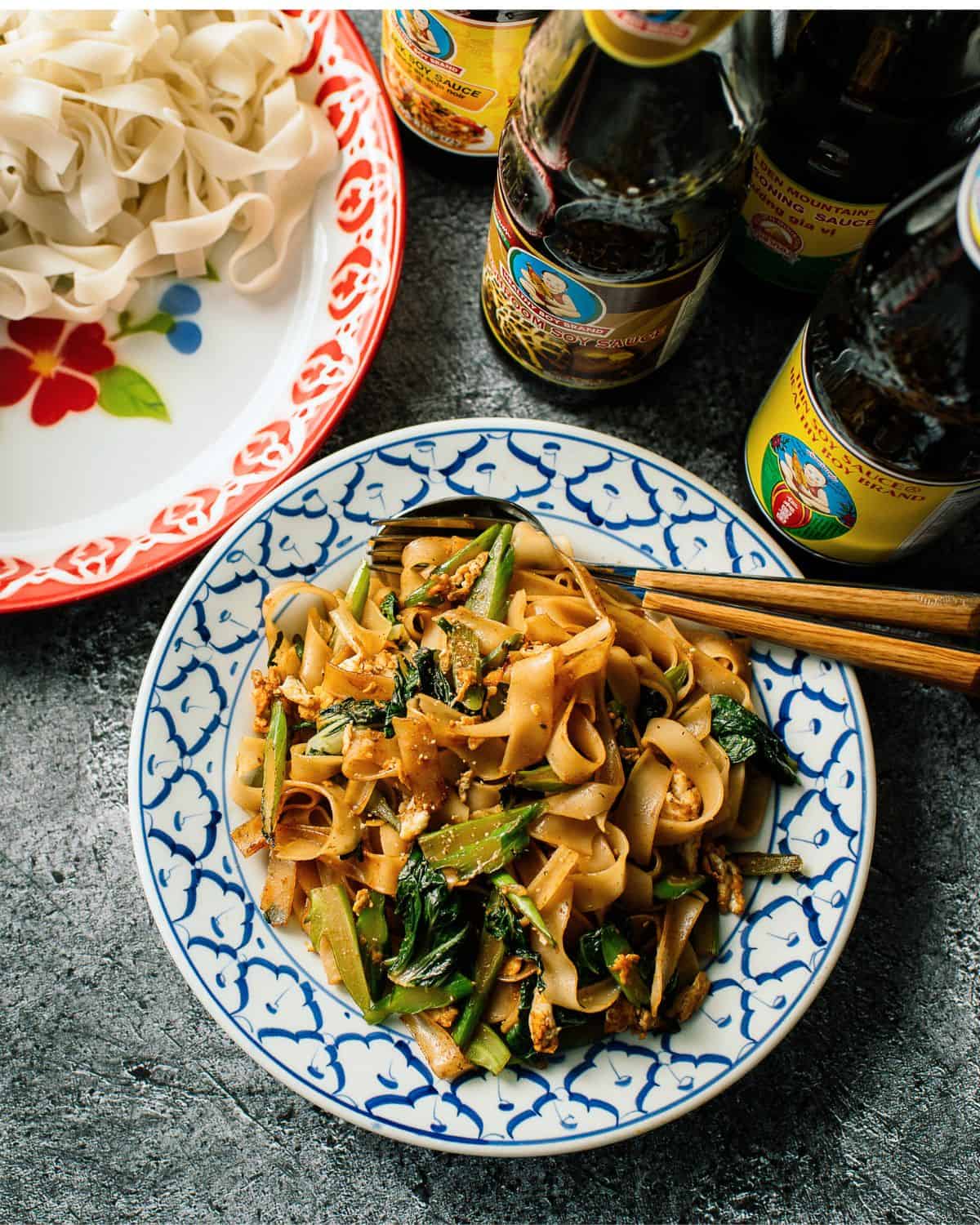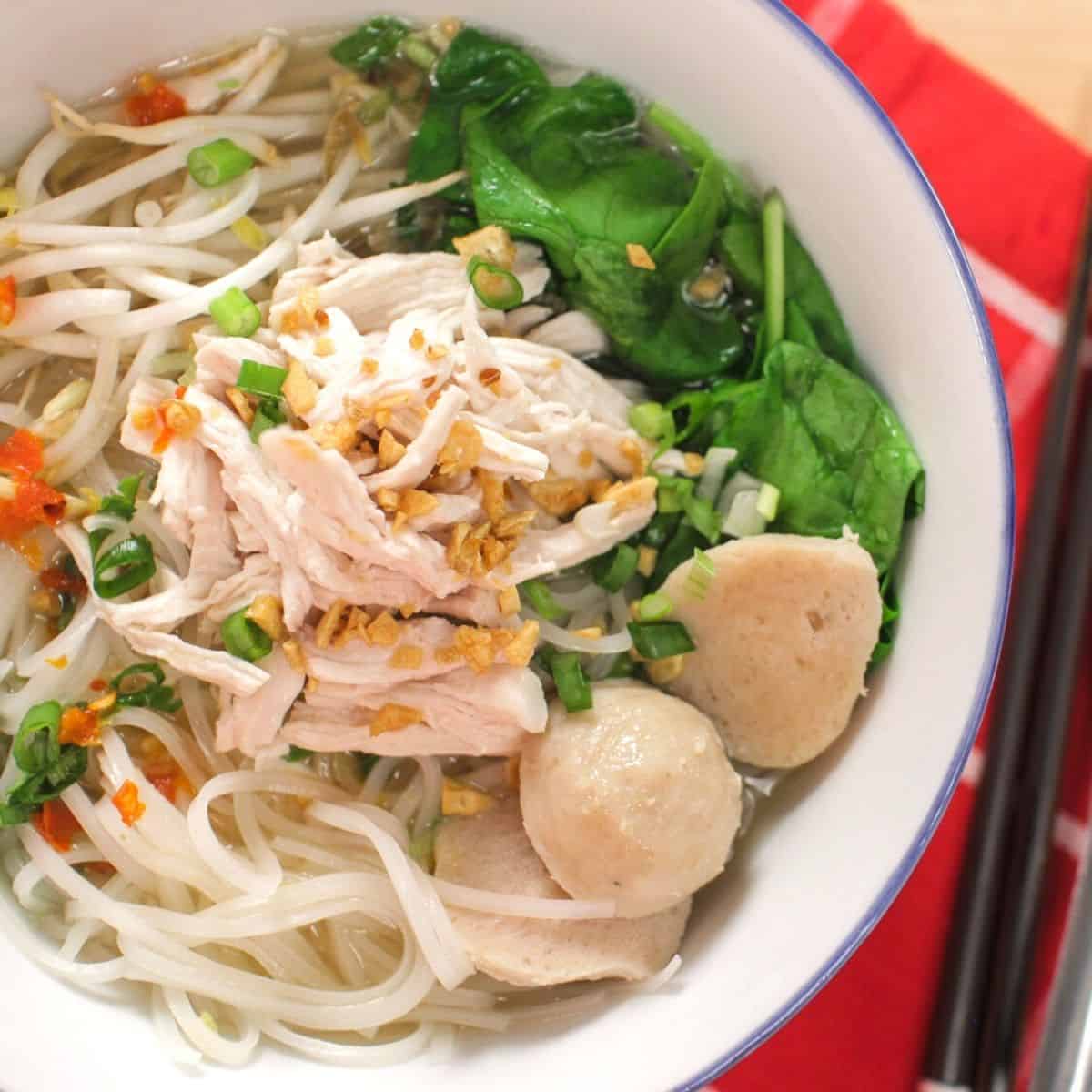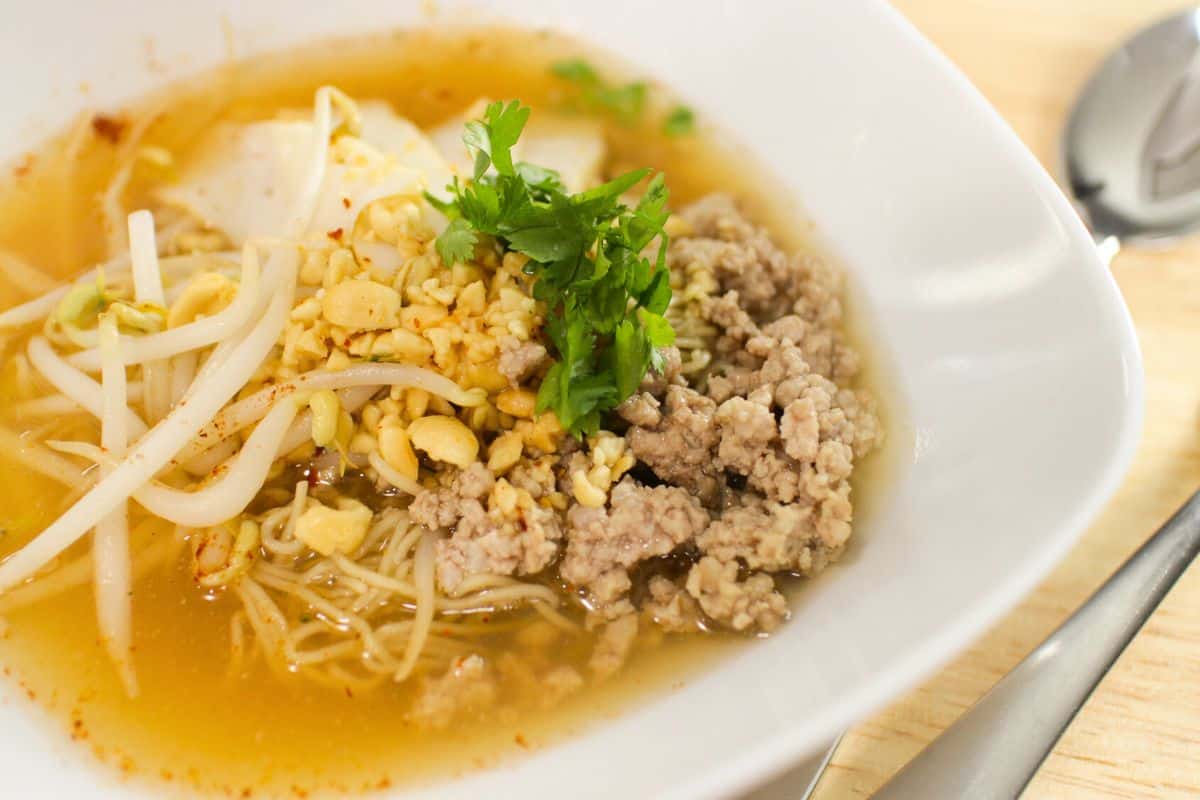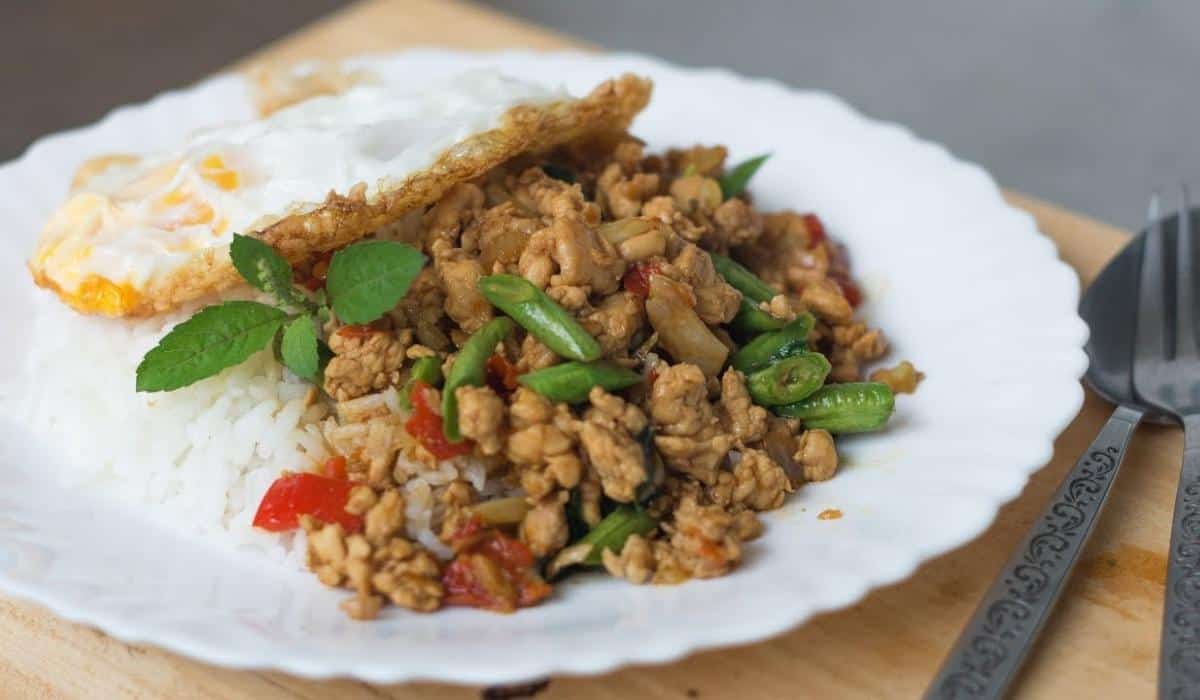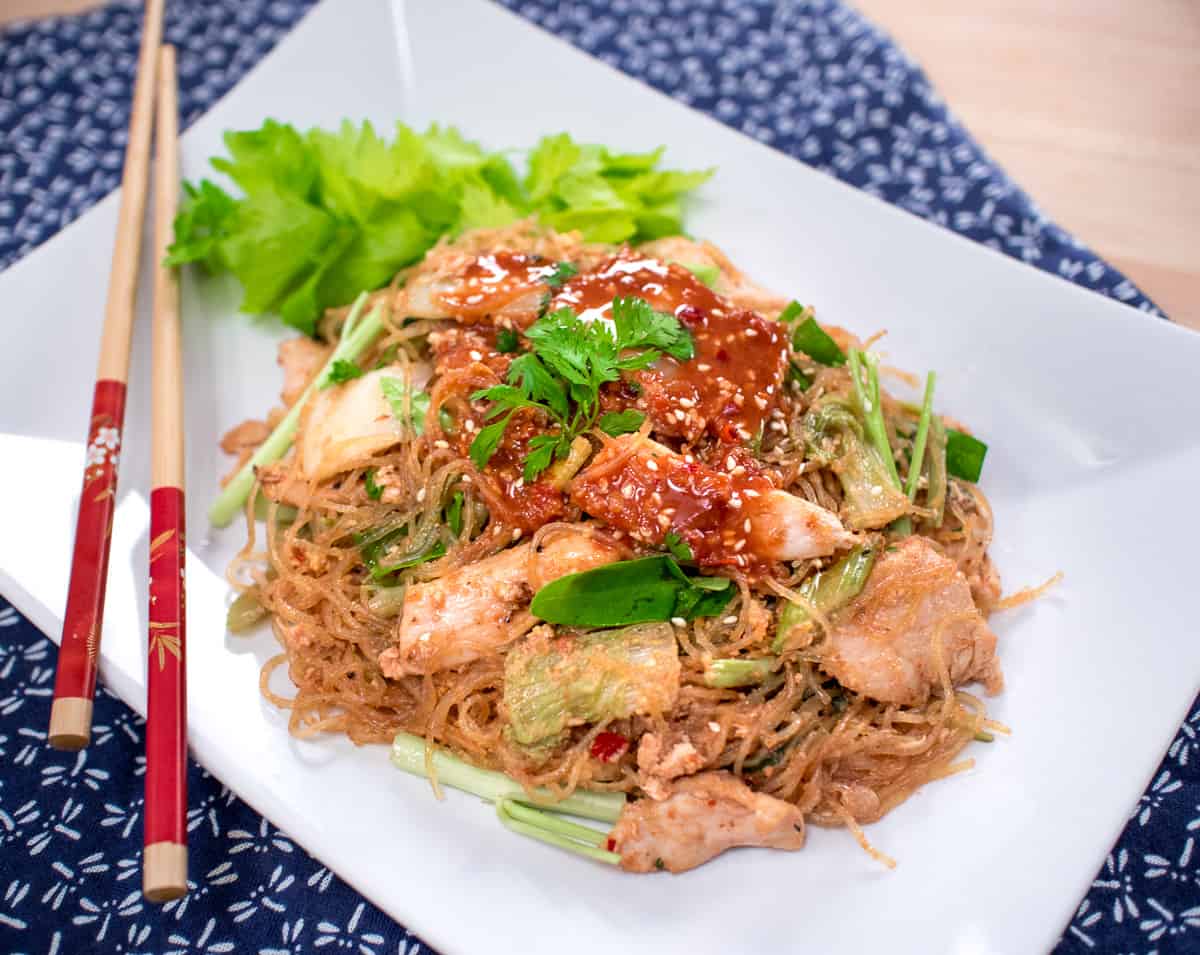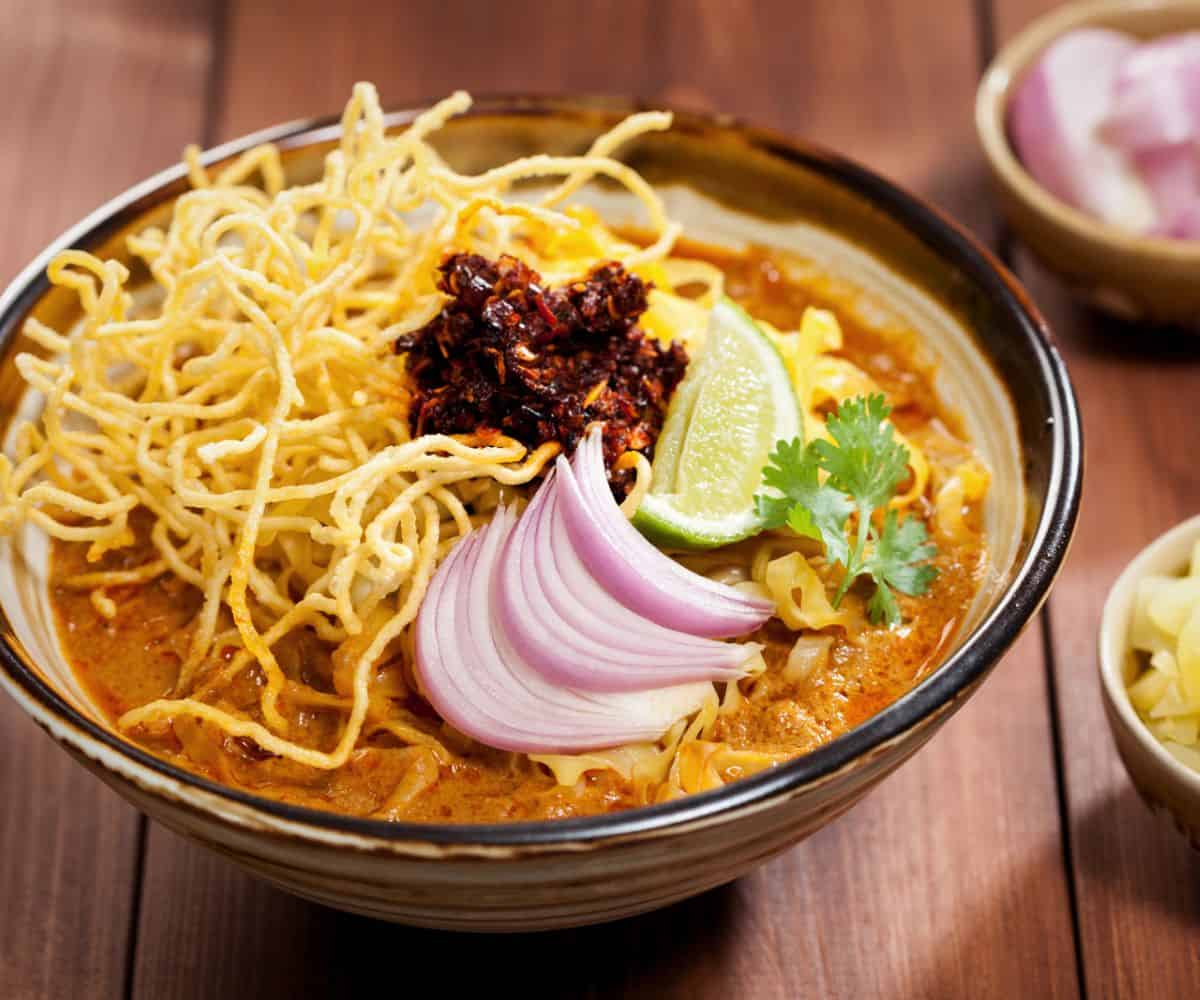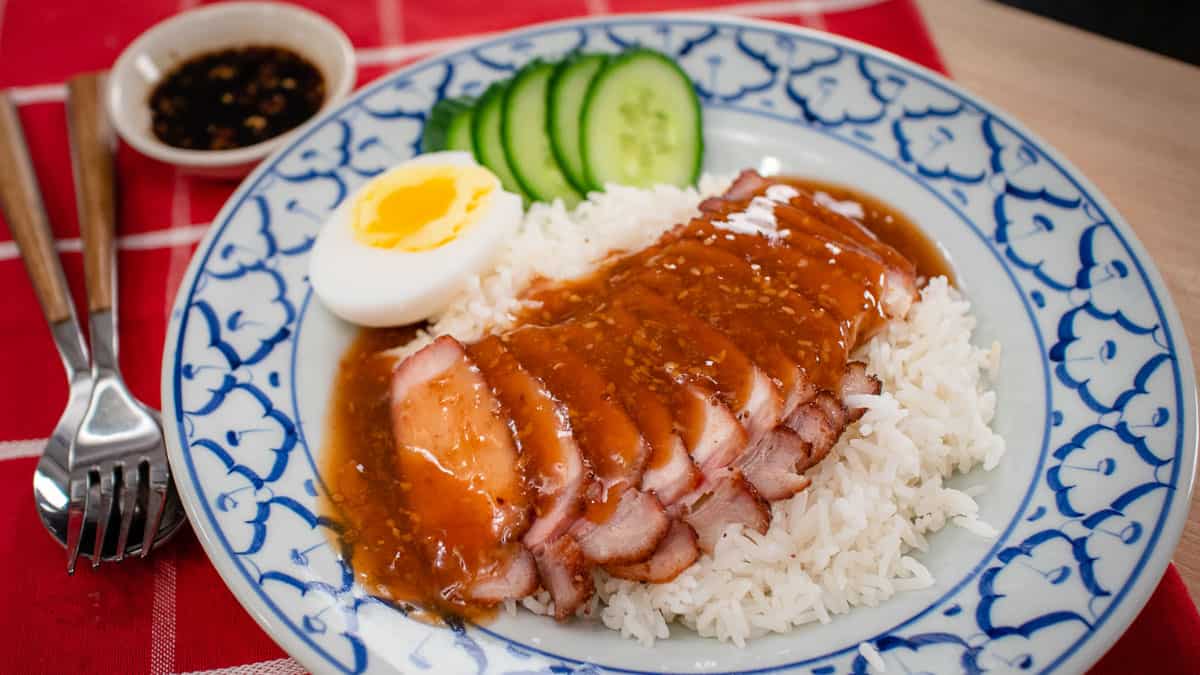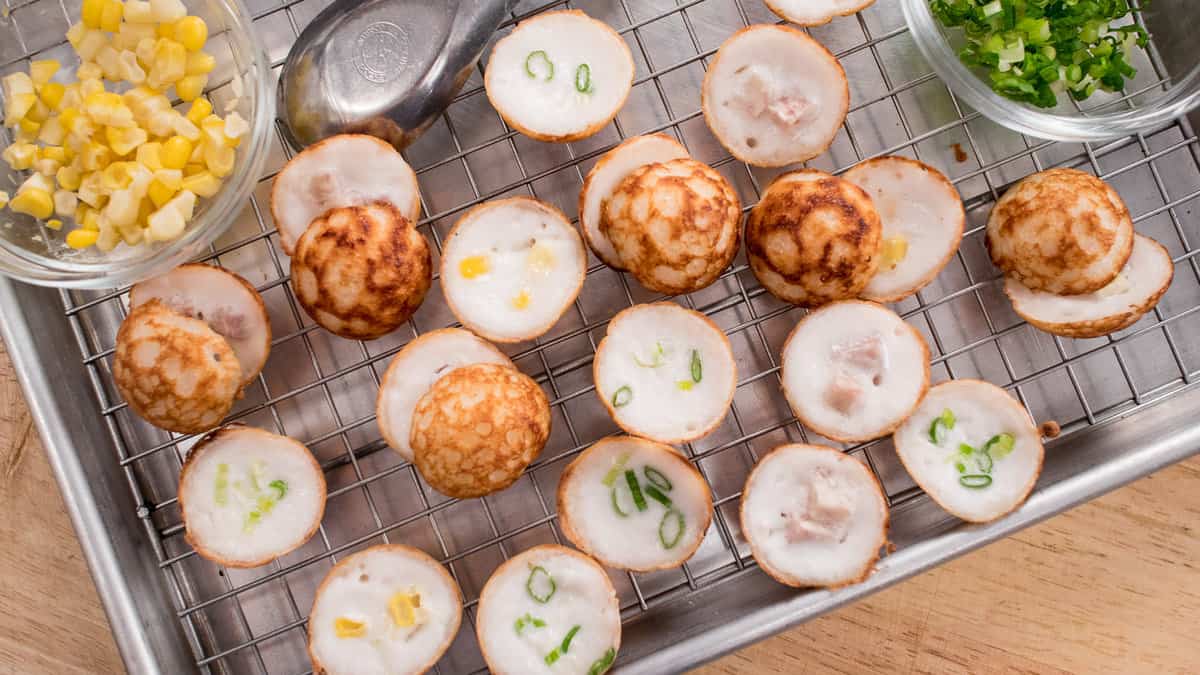Makrut lime leaves, also known as kaffir lime leaves, are an integral part of Thai cuisine. It's a common ingredient that Thai people have in our kitchens, and is crucial in many famous Thai dishes such as tom yum goong, tom kha gai and panang curry. It's also my favourite Thai herb! Its fresh, citrusy aroma is unlike any other citrus fruits, and it can liven up any dish it's added to.
Over the years I've gotten a lot of questions about makrut lime leaves, so in this article I'll cover everything you need to know to cook with them including how to use, choose, store and substitute.

Video: Makrut Lime Leaves 101
If you prefer to watch, everything that's covered in this article is covered in this video, plus you will get to see me demonstrate how to prepare and store them.
Is it Makrut Lime or Kaffir Lime?
First and most importantly, we need to clarify the name of this herb. Makrut and kaffir limes refer to the same plant. Previously, "kaffir lime" was the most common English name, but because the word "kaffir" happens to sound the same as a racially derogatory term in South Africa, its use has been discouraged in favour of its Thai name makrut. (Note that the plant was not named after the derogatory term; they have different roots. You can read more about in this National Geographic article.)
In my recipe writing, I have switched over to using makrut in the past few years, but older recipes on the website may still have the old name which I try to update as I come across them. But because I am an educator of Thai cooking, it's important for me to educate people on both these names because in most Asian grocery stores today, the leaves and fruits are still being labeled as kaffir, which can cause confusion when people are shopping if they're not aware.
What is a Makrut Lime?

Makrut lime is a type of citrus fruits native to Thailand. It has fruits that are green, about the size of a golf ball, and has bumps on the skin which make them look a bit like a cartoon brain!
The leaves and the zest have very similar aroma to each other, so for Thai cooking, we mostly use just the leaves because they're so much more abundant and easier to use. We do use the zest in situations where we want to incorporate it into a fine paste, such as in red curry paste, because the leaves are tough and much harder to grind down.
Makrut lime juice, on the other hand, is not used much as makrut limes do not have much juice to offer, have lots of seeds (see pic above), and the juice tends to be bitter.
Fun Fact: Makrut Lime for Your Hair
In Thailand, it is believed that makrut lime is good for your hair! You can buy makrut lime shampoo that is supposed to prevent hair loss, whether or not it works I love it because it smells amazing.
My great grandmother and grandmother used to burn makrut limes over fire, squeeze out the juice and the essential oils from the skin, and use that to wash their hair. Apparently my great grandmother had a head full of black hair till her old age, and my grandmother who's now 96 still miraculously have some black hair on her head!
How to Cook with Makrut Lime Leaves
Lime leaves are incredibly versatile, and can be used in just about anything from soups, salads, curries, stir fries, even infused into drinks! Here are a few ways to use makrut lime leaves.
1. Infuse into liquids.
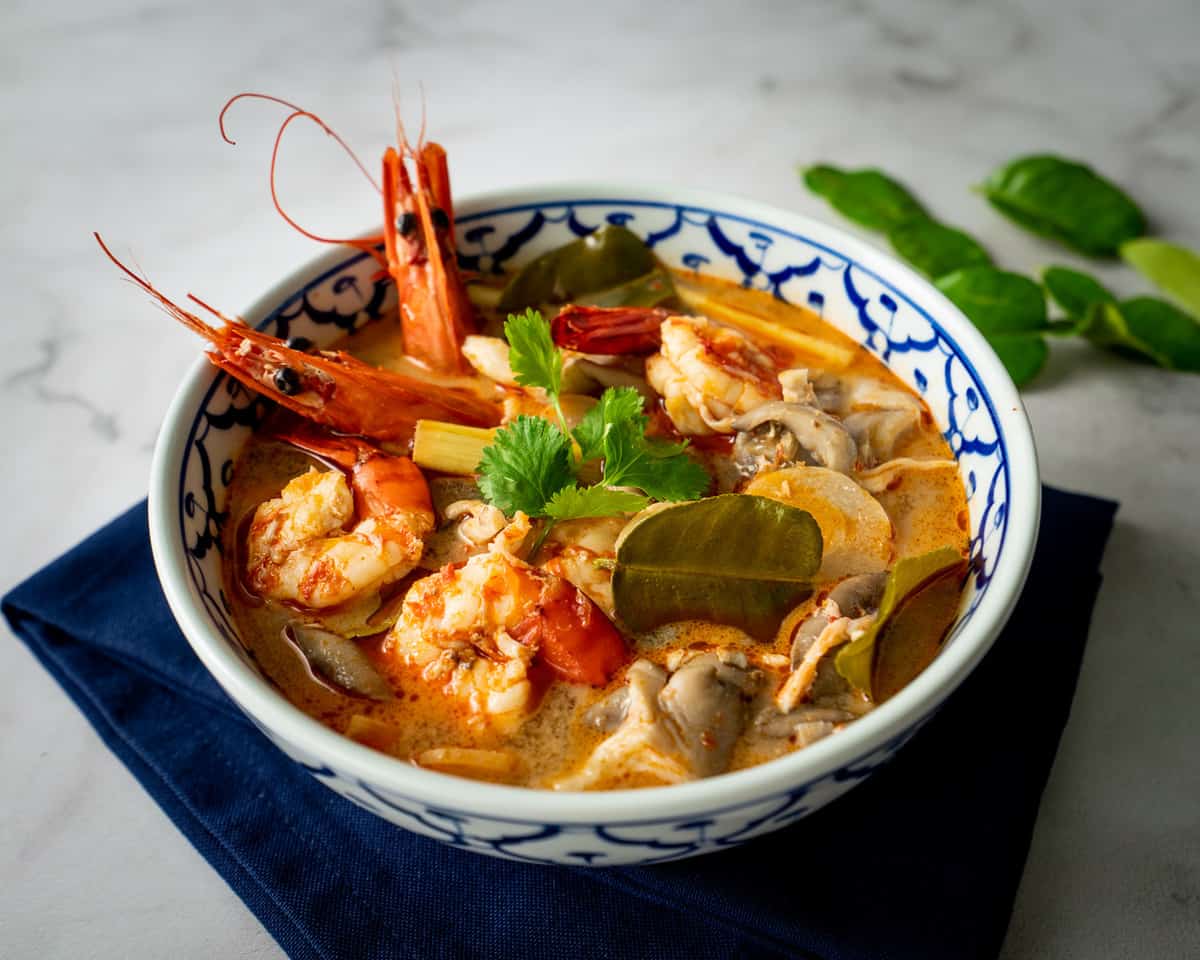
The easiest way to use makrut lime leaves is to simply let them infuse into liquid such as soups, stews, or curreis, such as in tom yum goong in the pic above. Simply grab a few leaves with your hands, and then twist to bruise the leaves to release the aromatic oils, then roughly tear into big chunks and add to your dish. It only takes a few minutes for lime leaves aroma to come out, so this is not something you have to simmer for hours on end.
*Important: In large pieces, makrut lime leaves are for infusion only and are not meant to be eaten as they are very tough. So think of them like bay leaves!
2. Finely julienne
If you do want to actually eat the lime leaves, you have to very finely julienne them, and I mean VERY finely because as I mentioned, the leaves are tough, if you have big ribbons it won't be comfortable to eat. In this form, you can add them to salads, stir fries, or use them as garnish as I do for panang curry and pad prik king. You may also want to remove the center stems if they're quite thick before julienning.
3. Toasting or Frying
Another way you can use these is to toast or fry them until they're crispy. Sometimes I do this when I make toasted rice powder for laab; I add the makrut lime leaves in with the rice, and as the rice toasts, the leaves dry and become crispy. Then I grind the leaves and the rice up together, resulting in an aromatic toasted rice powder.
Deep frying lime leaves is also something many Thai people do to get them crispy, but bewarned, they will splatter A LOT. So dry the leaves COMPLETELY, drop them into the hot oil and back up. They will take just a few seconds, once they stop splattering, they're crispy and can be used as garnishes on anything you wish.
Is that one leaf or 2 leaves?

Makrut lime leaves are what I call "double leaves" (I'm sure there's a botanical term for it), meaning each whole leaf is made of up two smaller leaves connected end to end. So when a recipe called for "1 leaf" people may understandably be confused whether that means the whole double leaf or just the single. I don't know about other recipes, but for my recipes, 1 leaf means 1 single leaf, NOT the double.
I decided on this because often times when people buy lime leaves, the two sections will have already detached from each other and your bag will be full of single loose leaves, especially if they're older or frozen. So it wouldn't make sense if by "1 leaf" I meant that you had to pick up 2 leaves in your package. Not to mention, there is no such thing as too much lime leaves so I'd rather err on the side of you putting double the amount than only half the amount!
Tip: Watch out for those thorns!
If you're lucky enough to find fresh lime leaves on the stems, handle them carefully! Makrut lime stems have many big sharp thorns.

Buying Makrut Lime Leaves - Fresh, Frozen, and Dried
Try to find fresh makrut lime leaves whenever possible, and I recommend first looking wherever you get your other Thai ingredients. You'll have better luck at stores that carry a lot of Southeast Asian products like Vietnamese and Thai, than stores that are primarily Chinese, Japanese or Korean. If you cannot find fresh lime leaves, look in the freezer section as they're often sold frozen which work perfectly well. When I buy fresh, I freeze them at home anyway!
Worst case, you may be able to find dried makrut lime leaves which are fine, but not ideal. Dried lime leaves can work in soups and curries where they'll have time to rehydrate and infuse in the liquid, but obviously you can't julienne them and toss them into salads and they're completely crunchy. If you're using dried, add a few more leaves than the recipe calls for and give them a few extra minutes to simmer and infuse. Or try powderizing them in a coffee grinder, then add to dishes.
How to store makrut lime leaves
If you buy fresh lime leaves, they will last at least a week in your fridge's crisper because they're quite sturdy. But if you don't have any plans for them within the next few days, I recommend freezing them to prolong their freshness.
To freeze makrut lime leaves, wash them first, then lay them out on a towel and let them dry completely. Once dry, gather them into a freezer bag and press out as much air as possible before you seal. If you've got a lot and you think it'll last you a long time, you may want to first wrap them in aluminum foil before putting them into a freezer bag as the foil will prevent freezer burn for longer.
Substitutes for Makrut Lime Leaves
If you cannot find any form of makrut lime leaves (remember to look for frozen and dried first!), regular lime zest is your best substitute. They do not have the same aroma, but at least you'll get the same citrusy feel. You cannot use regular lime leaves or any other kinds of citrus leaves instead as they are not aromatic.
Recipes with Makrut Lime Leaves
Ready to cook with makrut lime leaves? Here are a few recipes to get you started!

